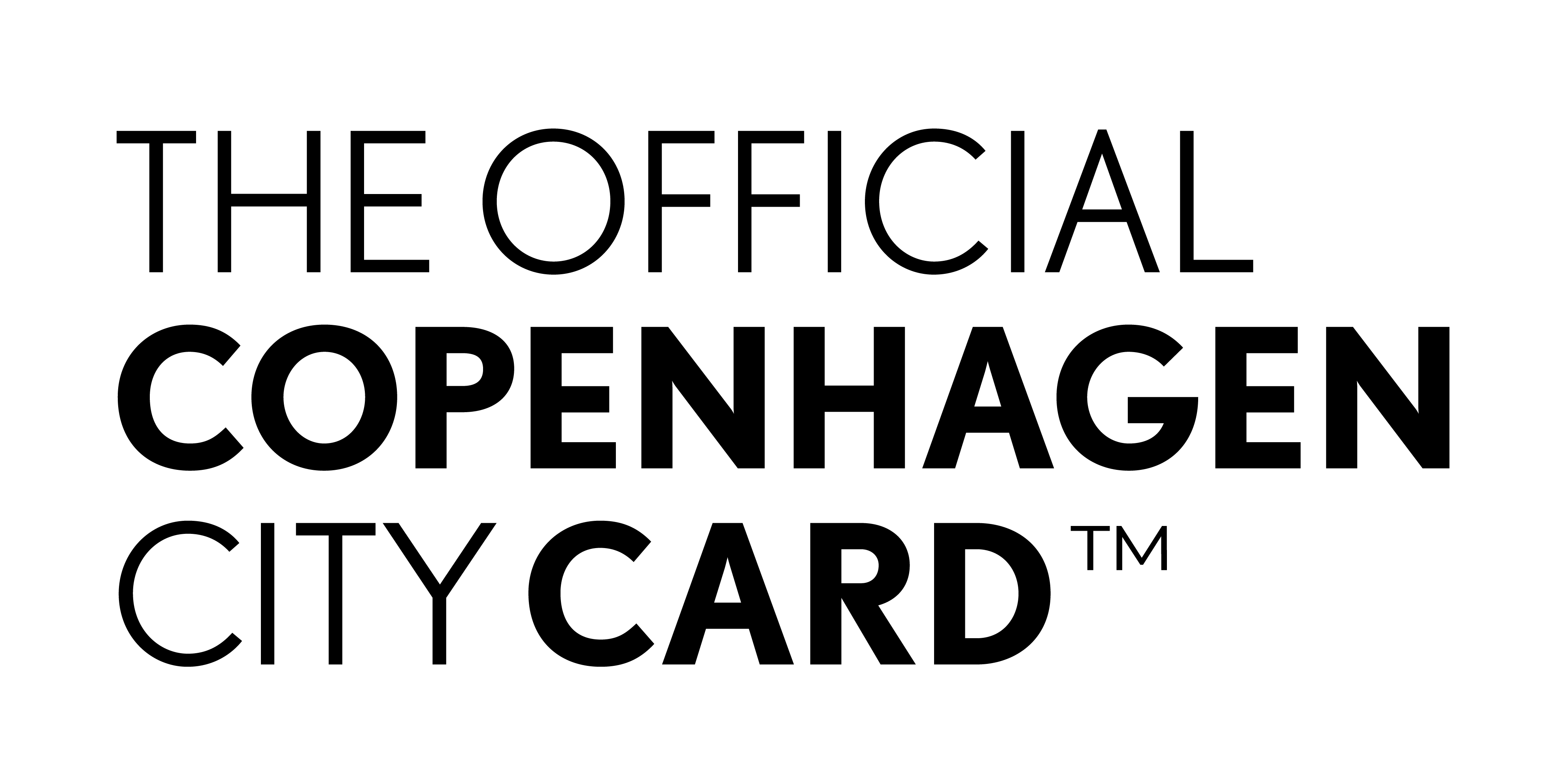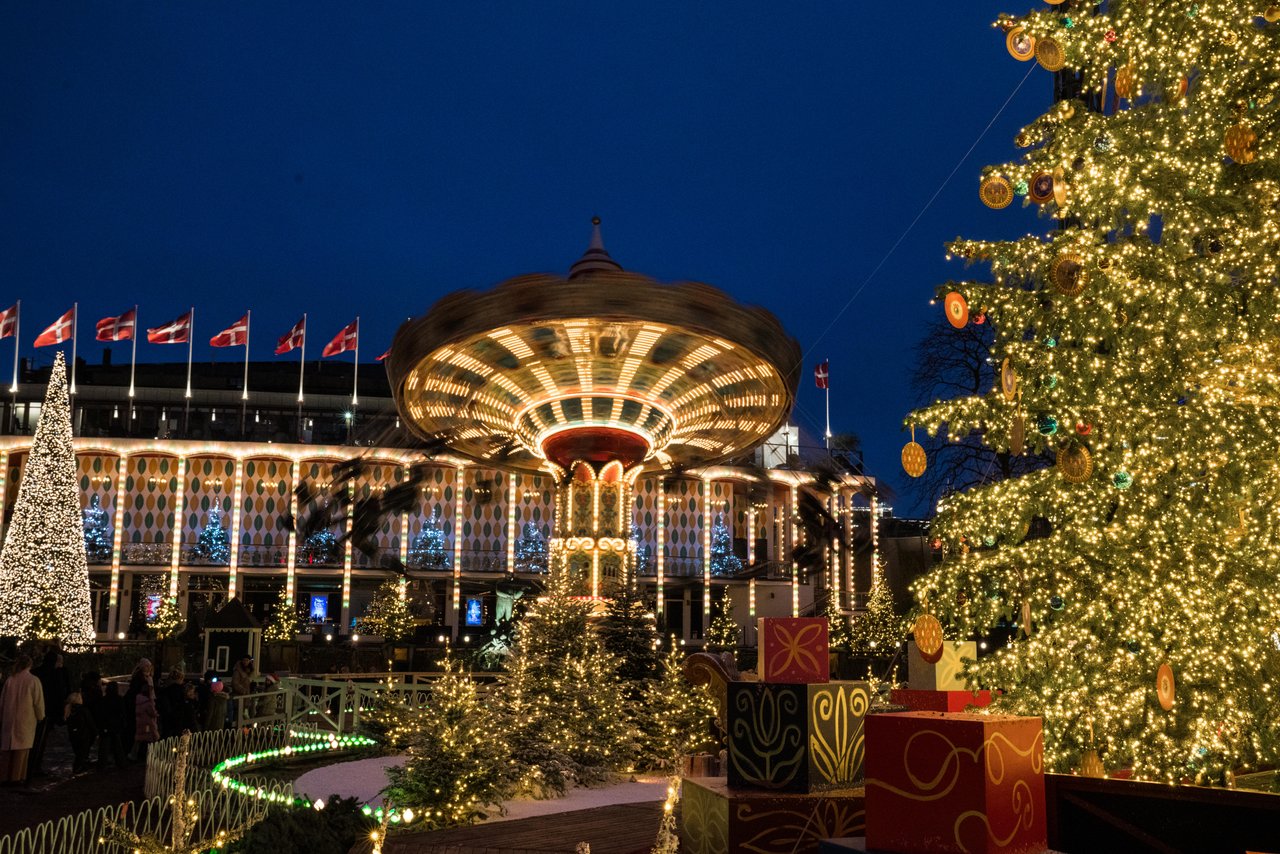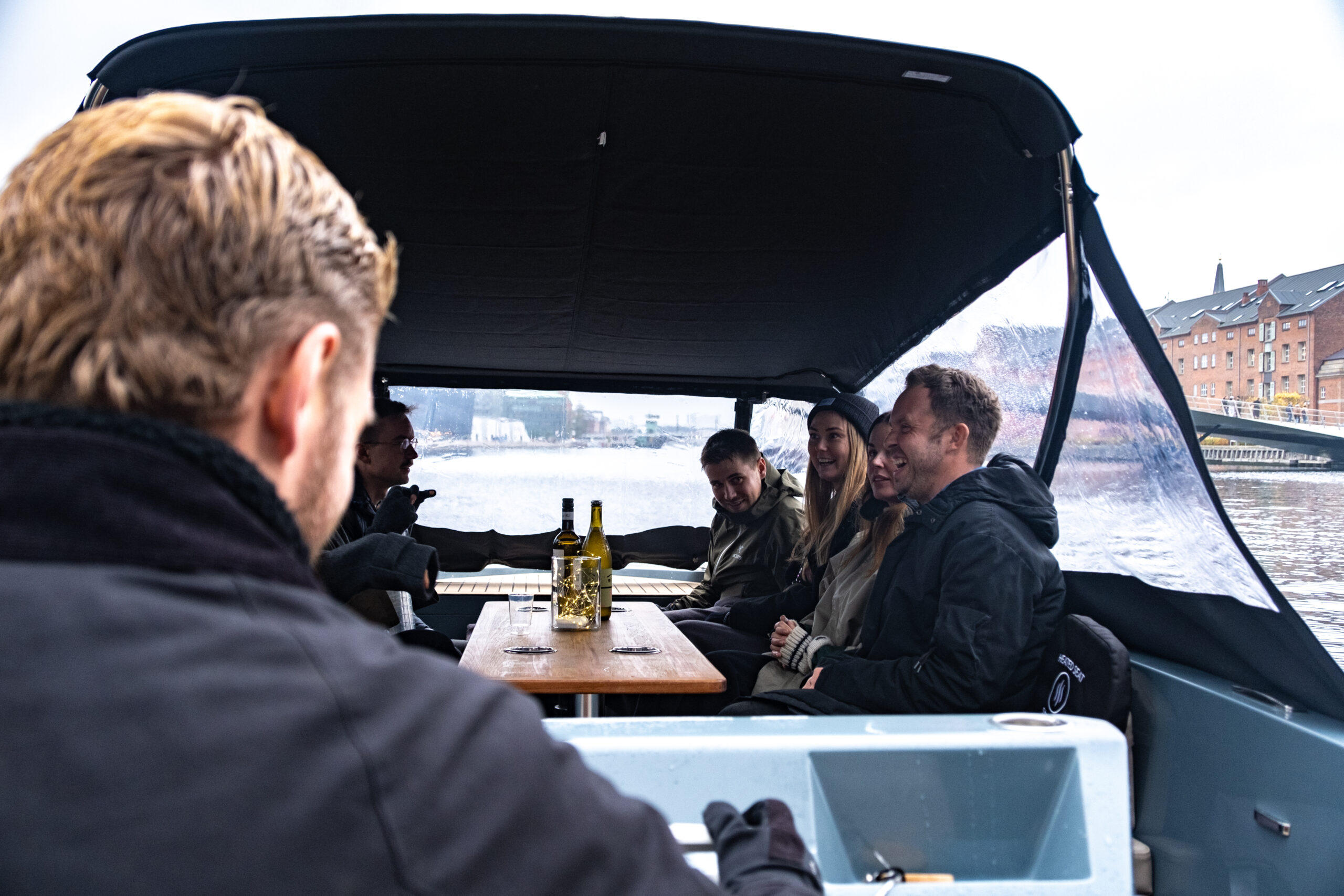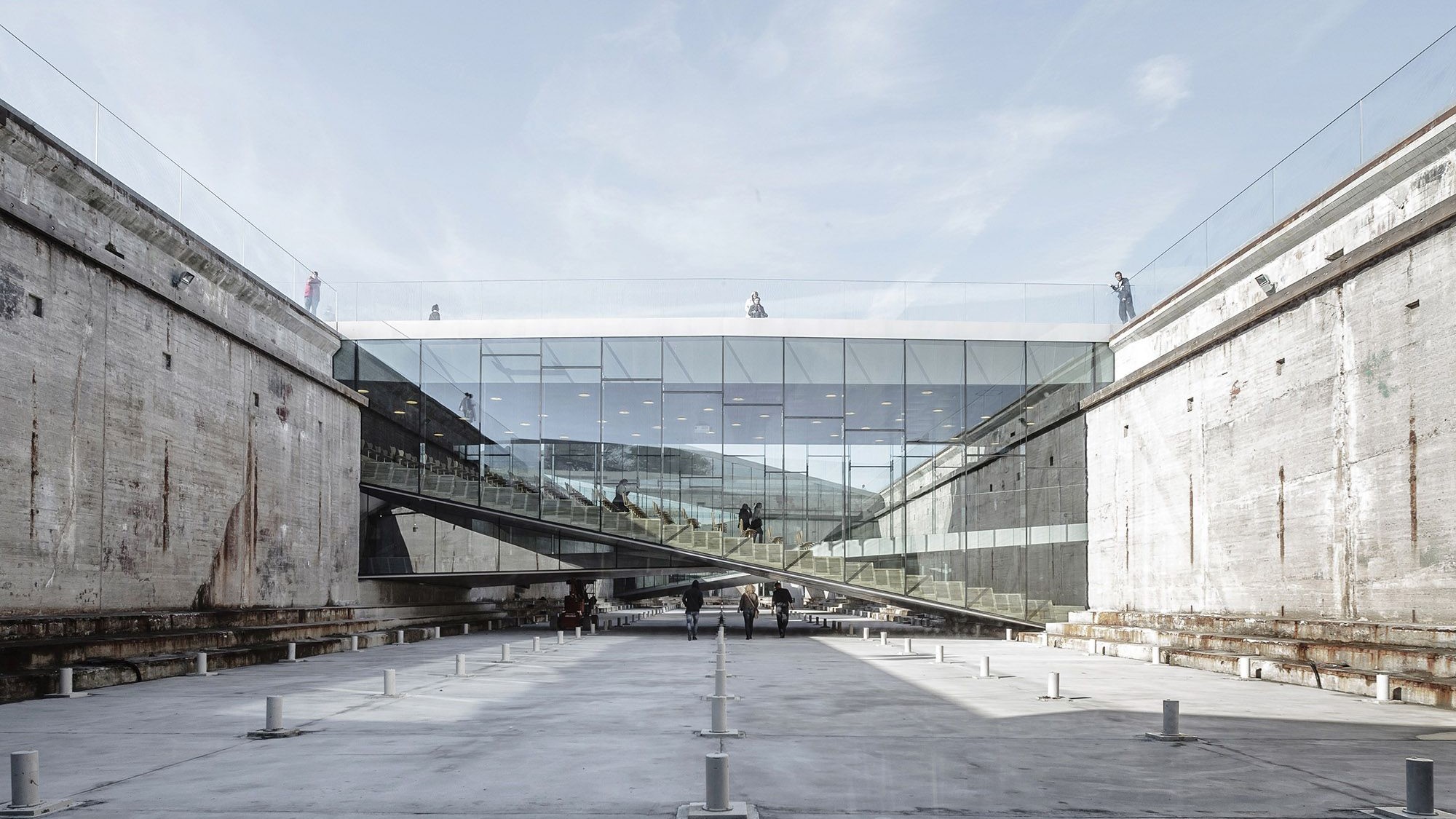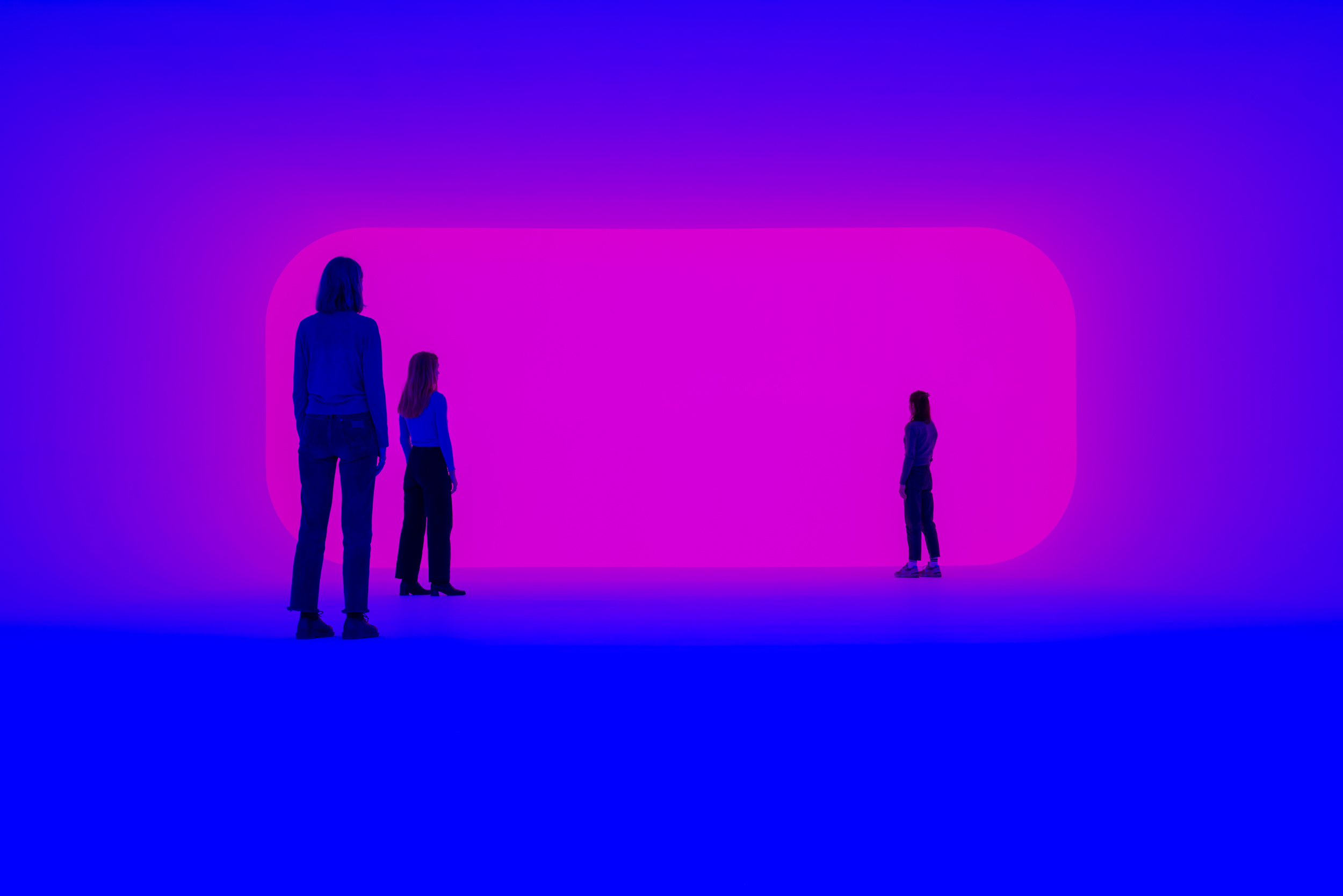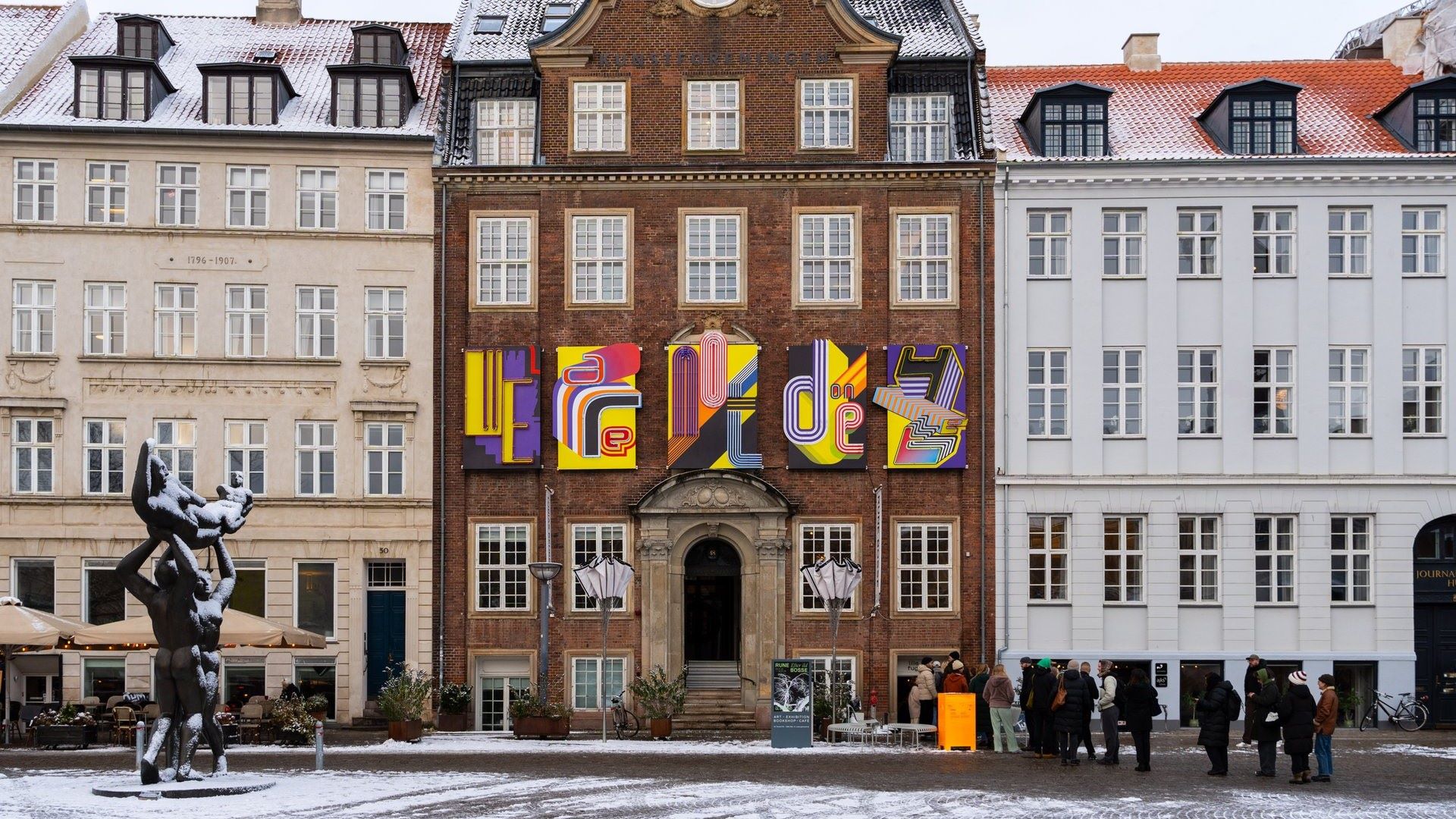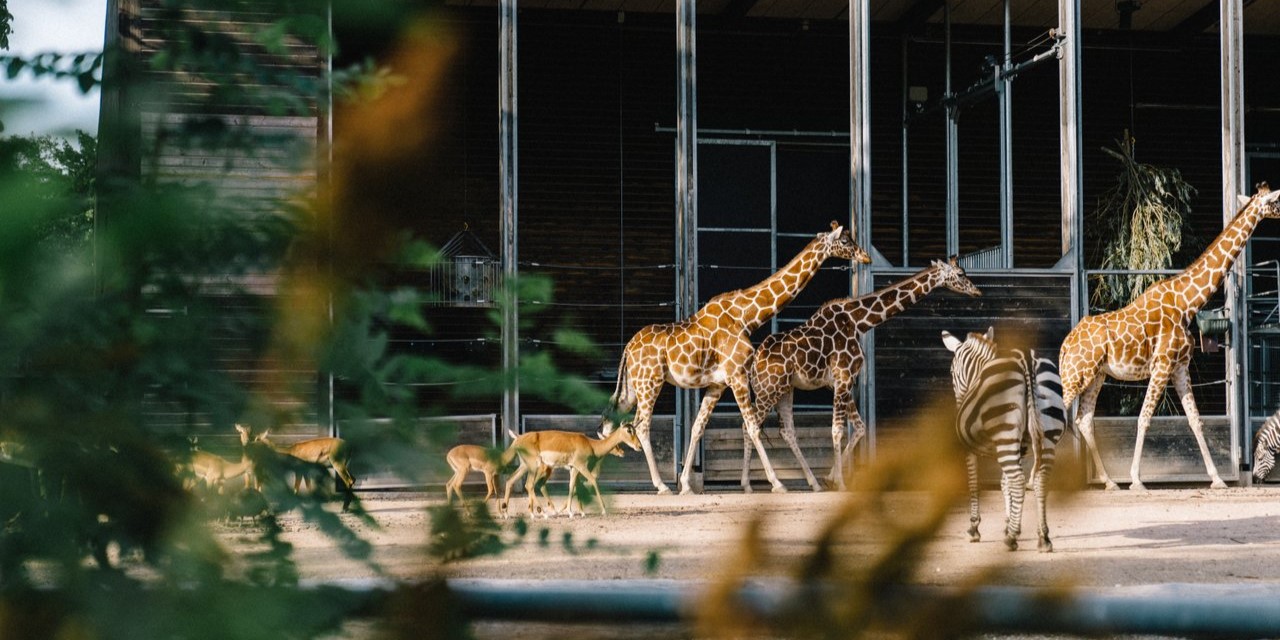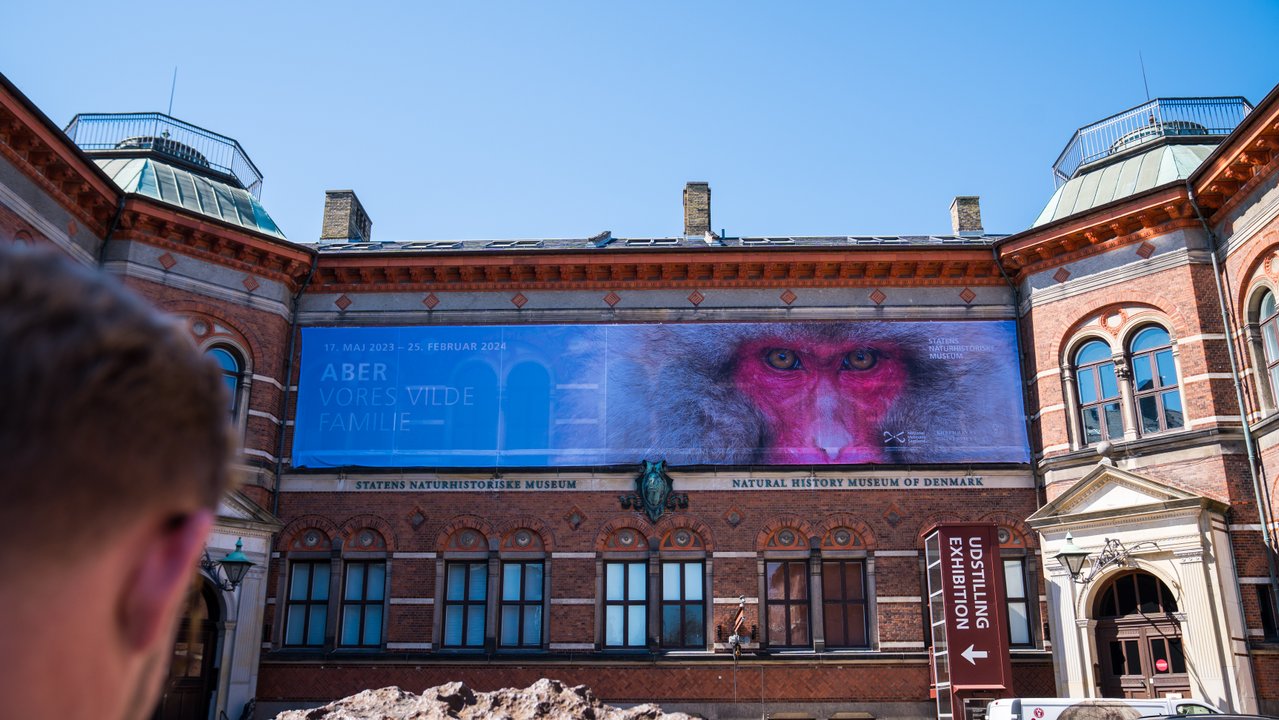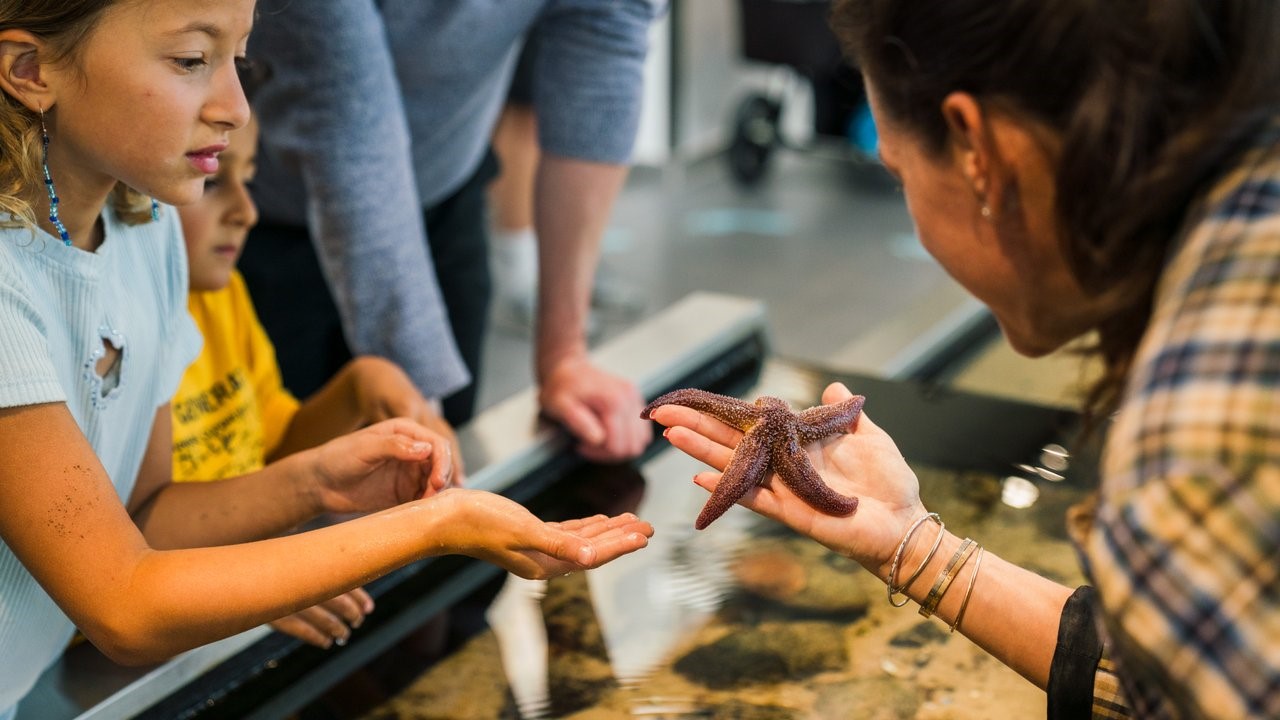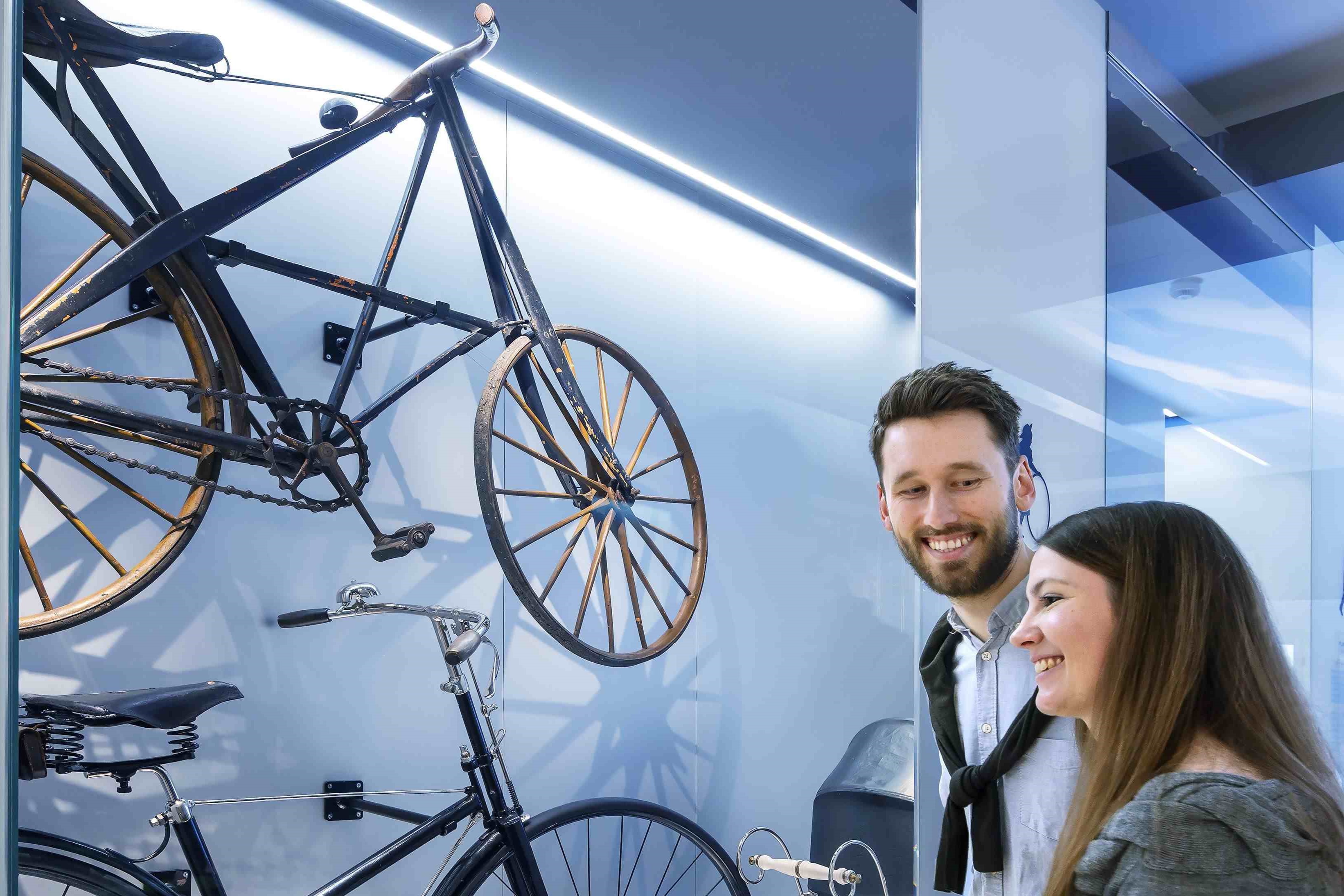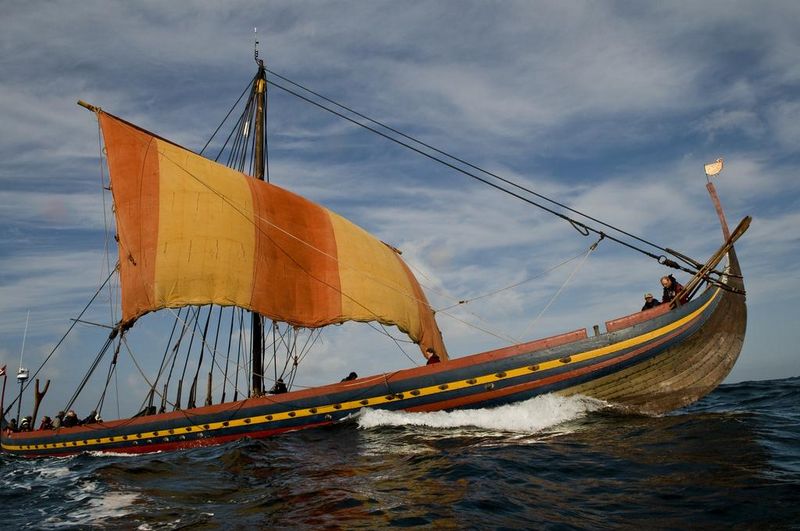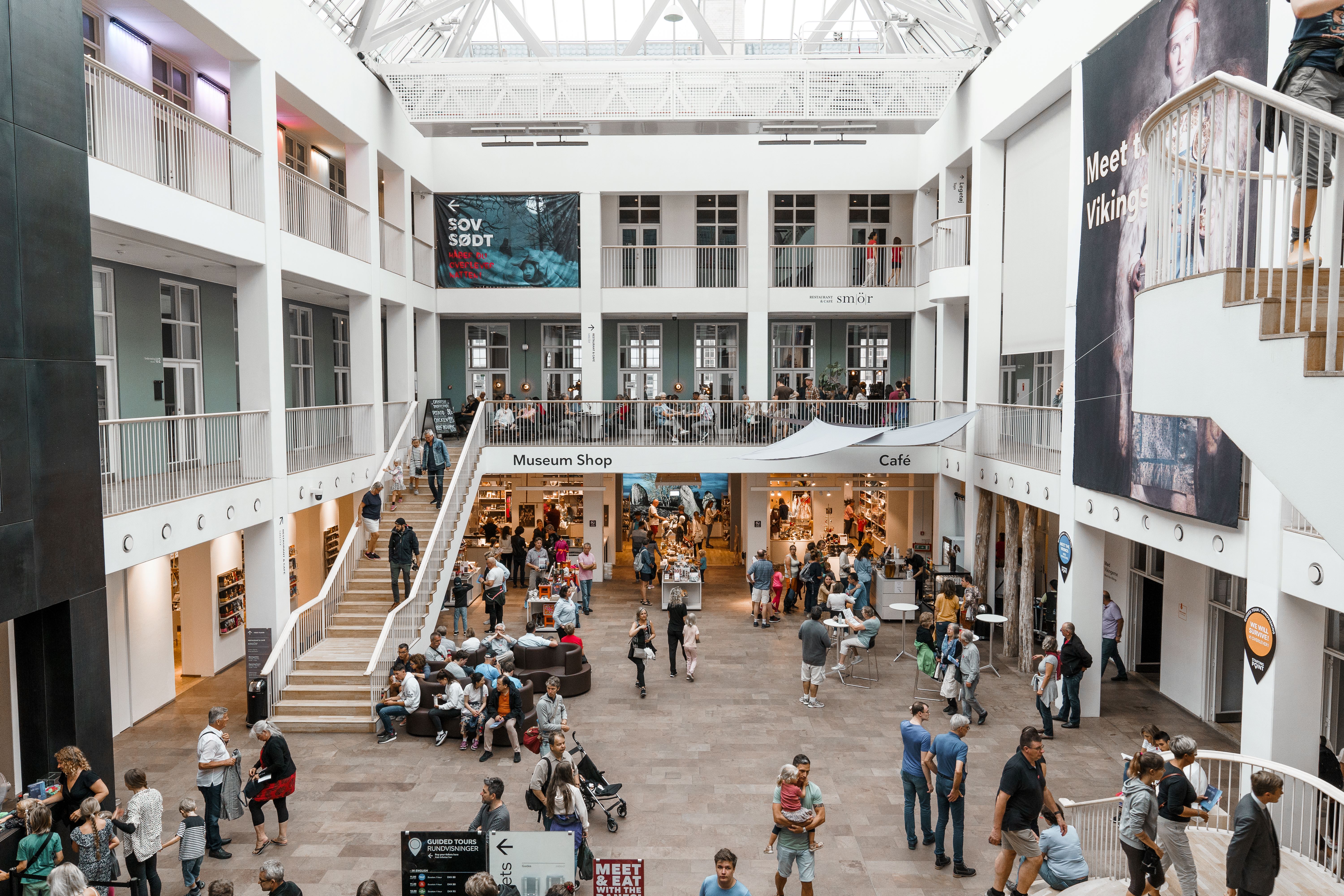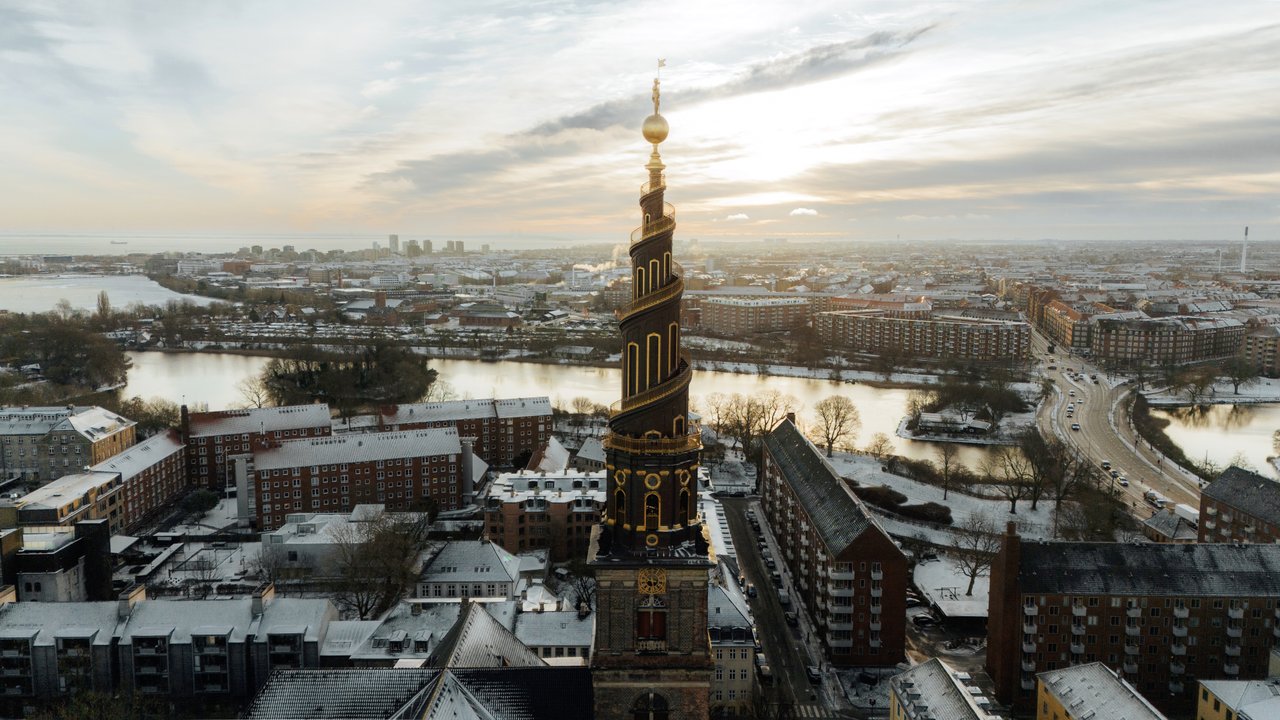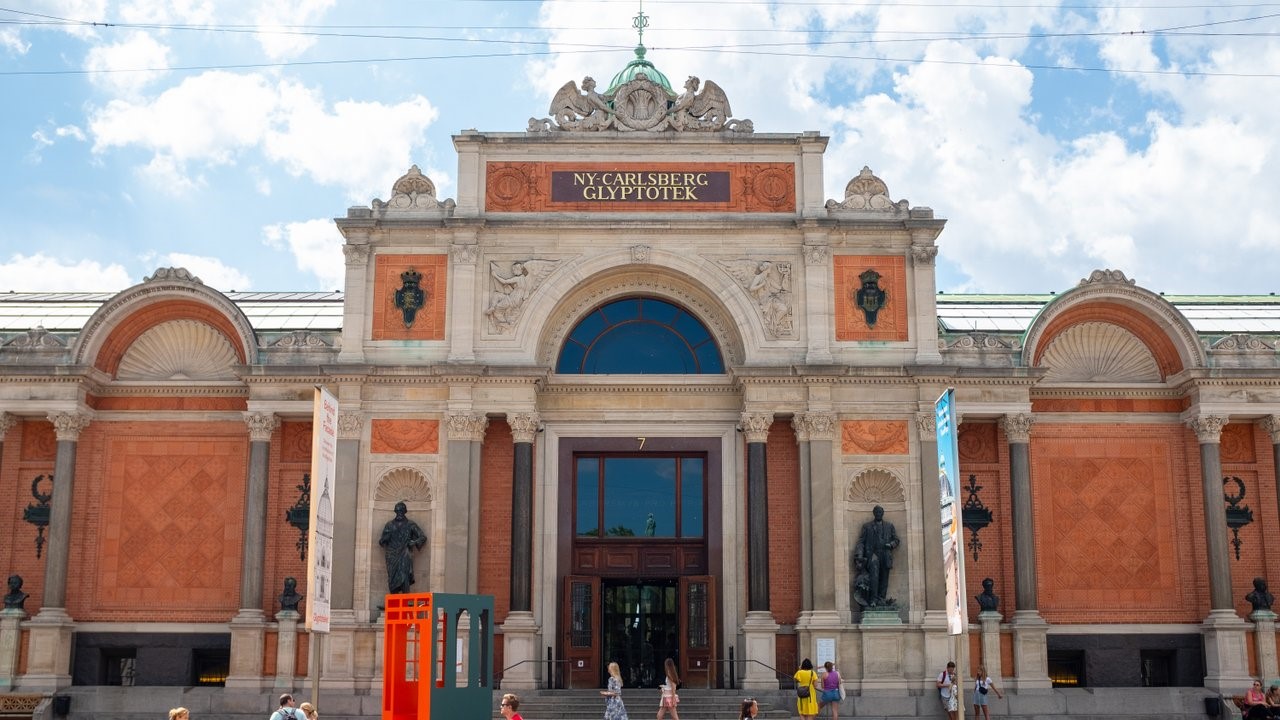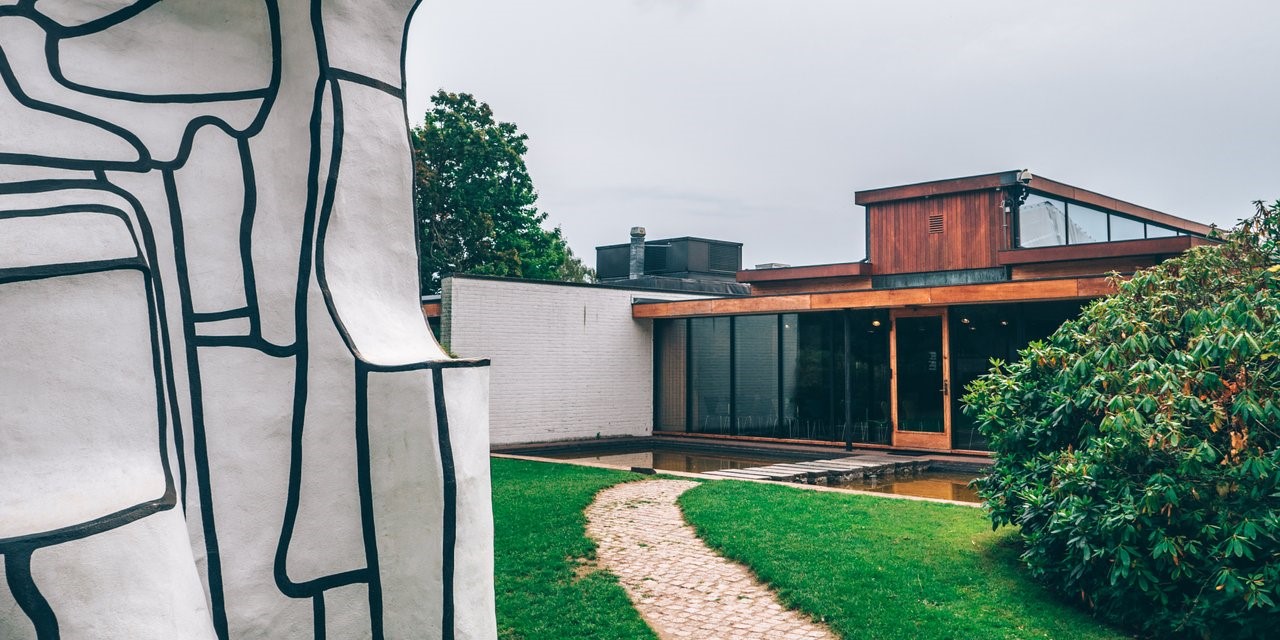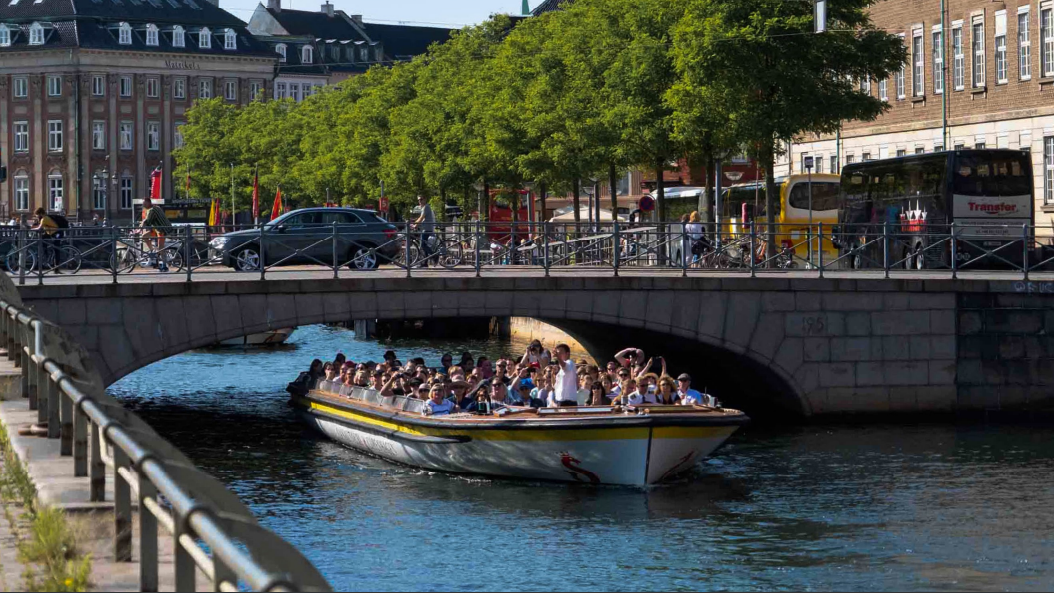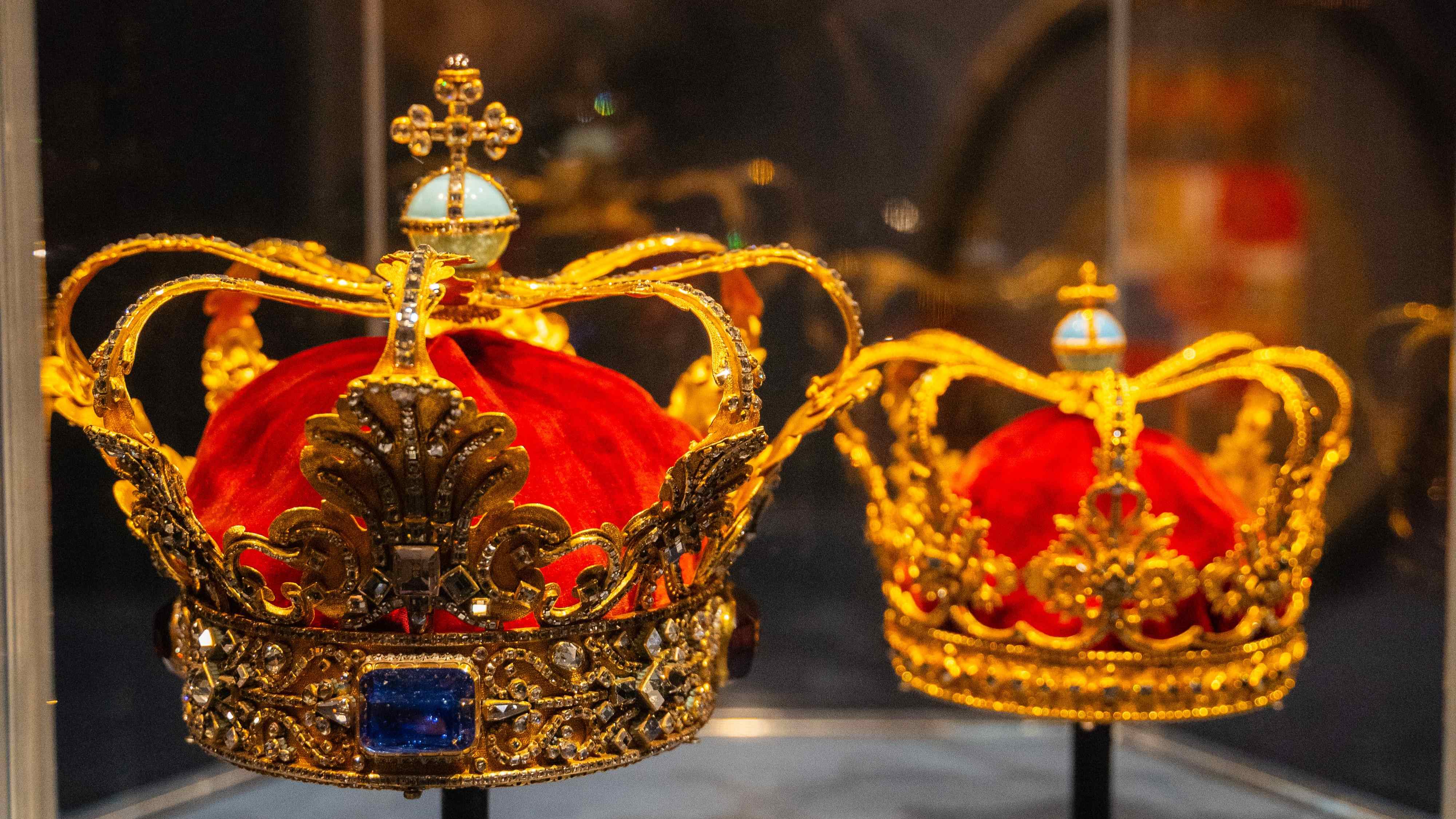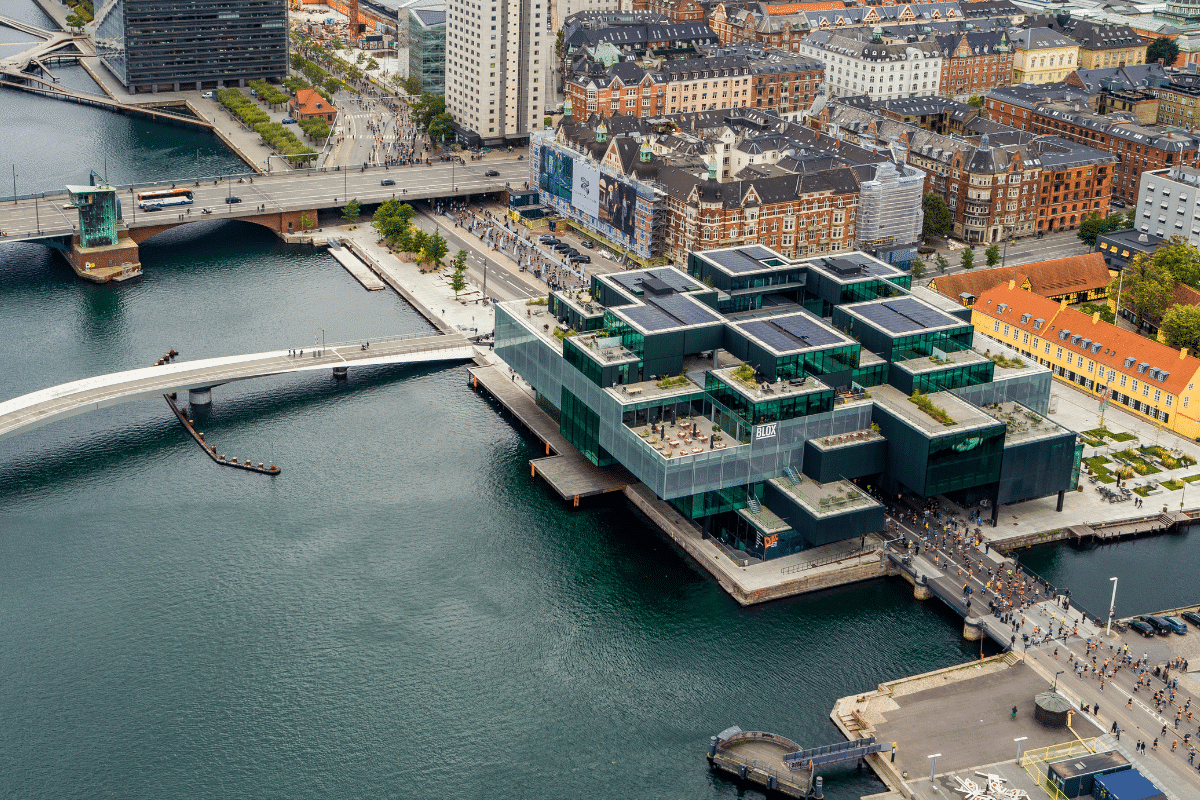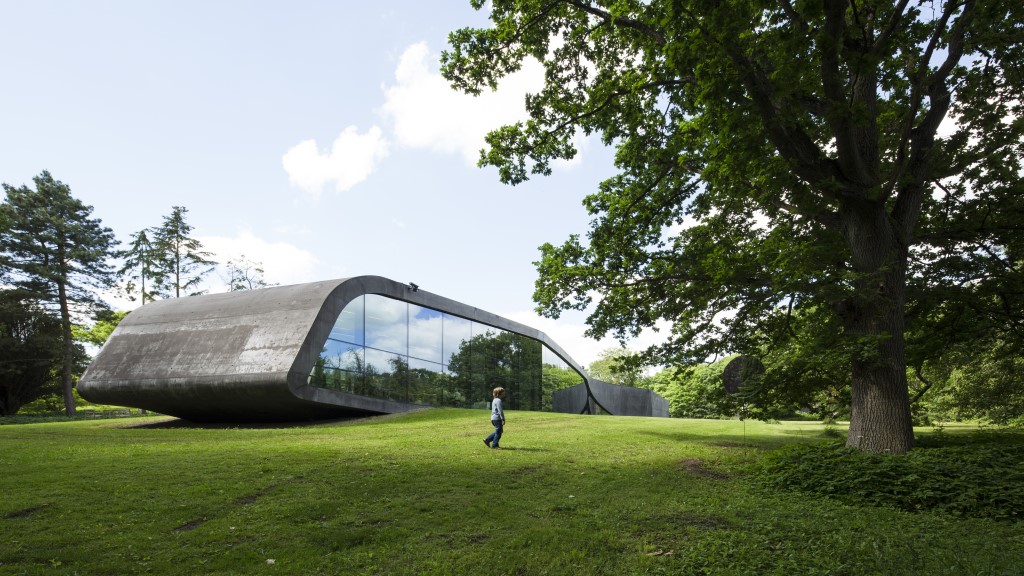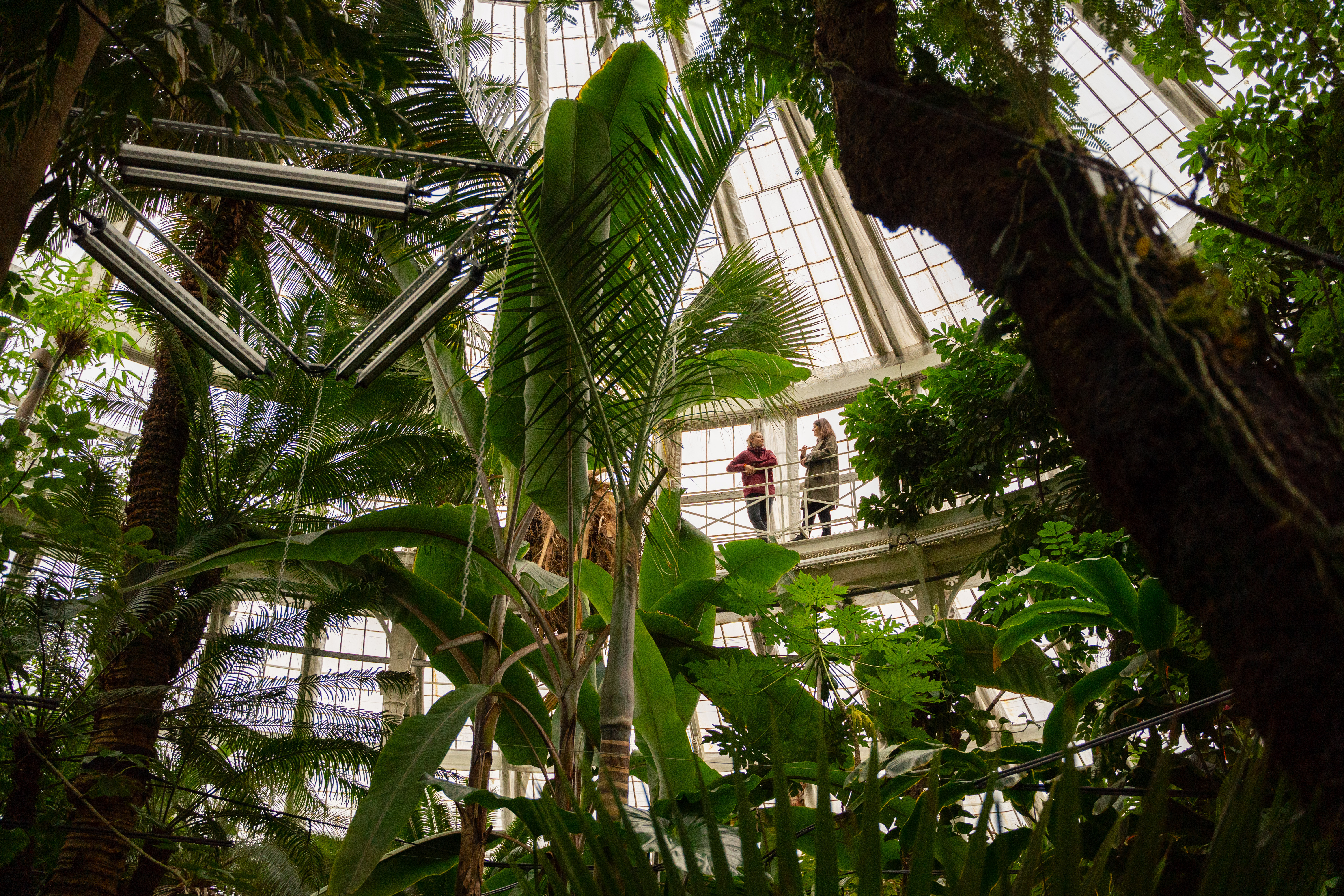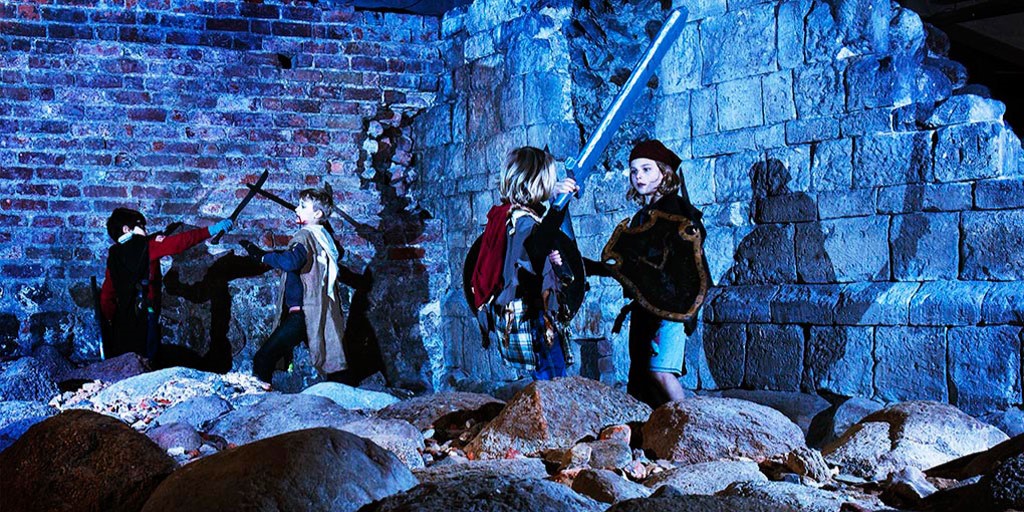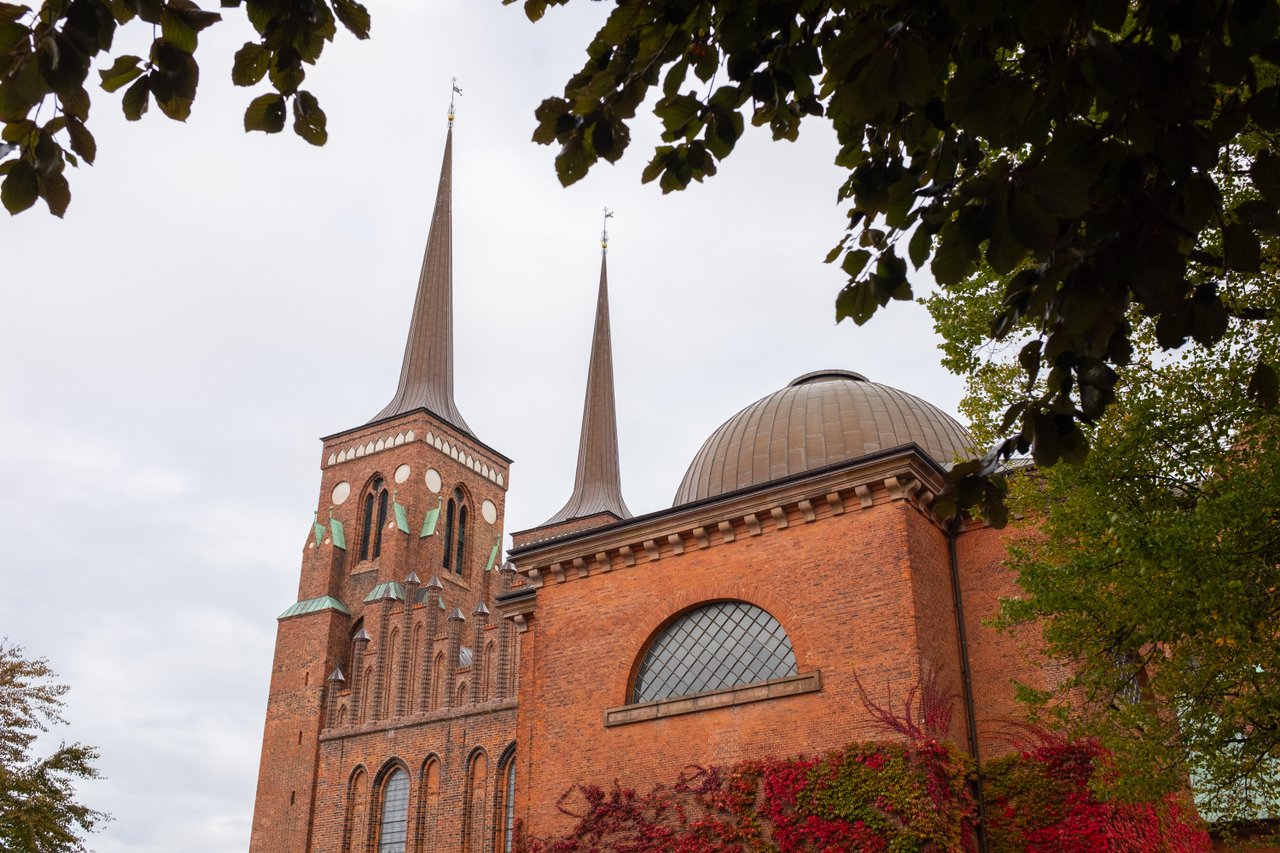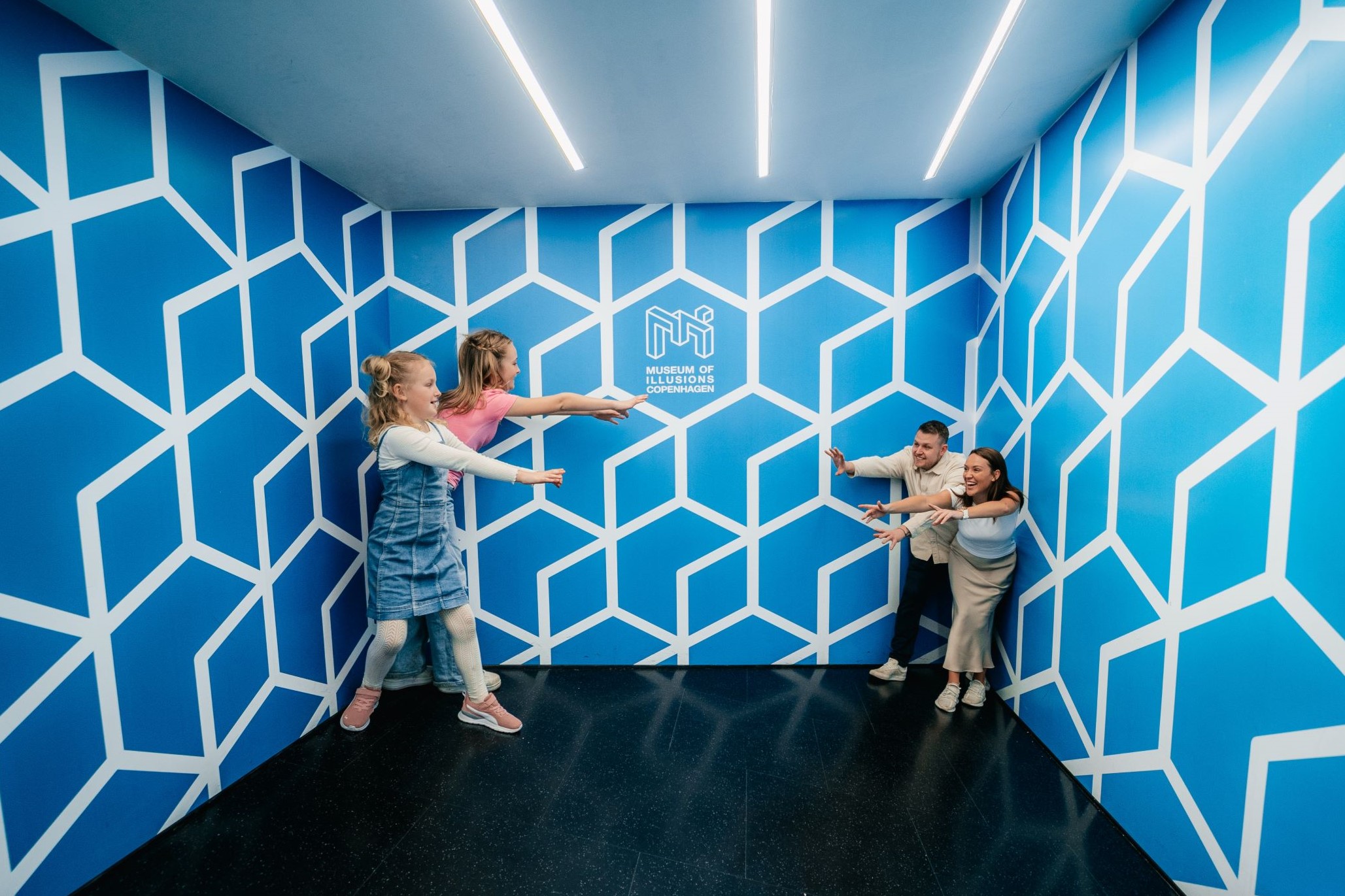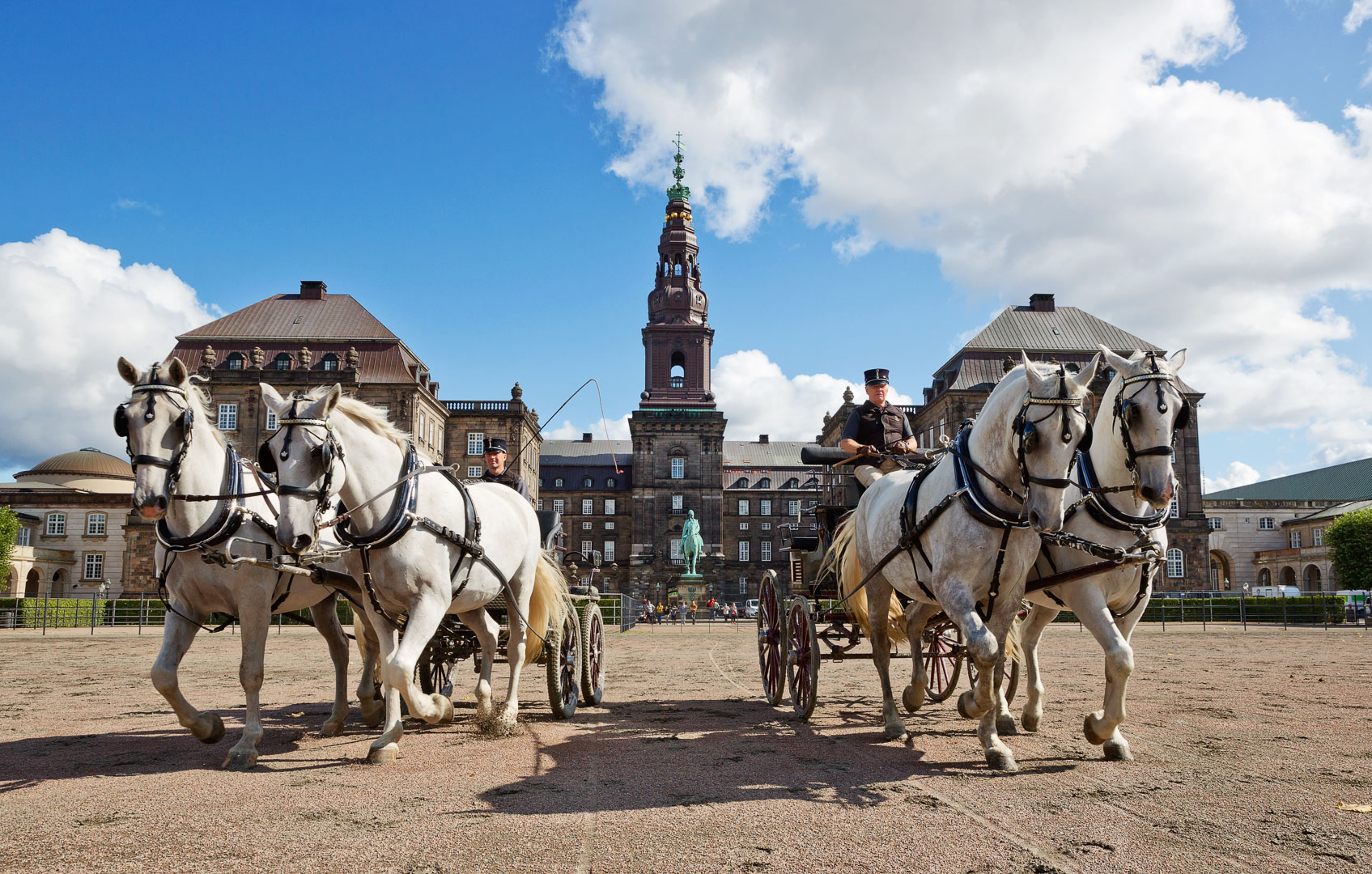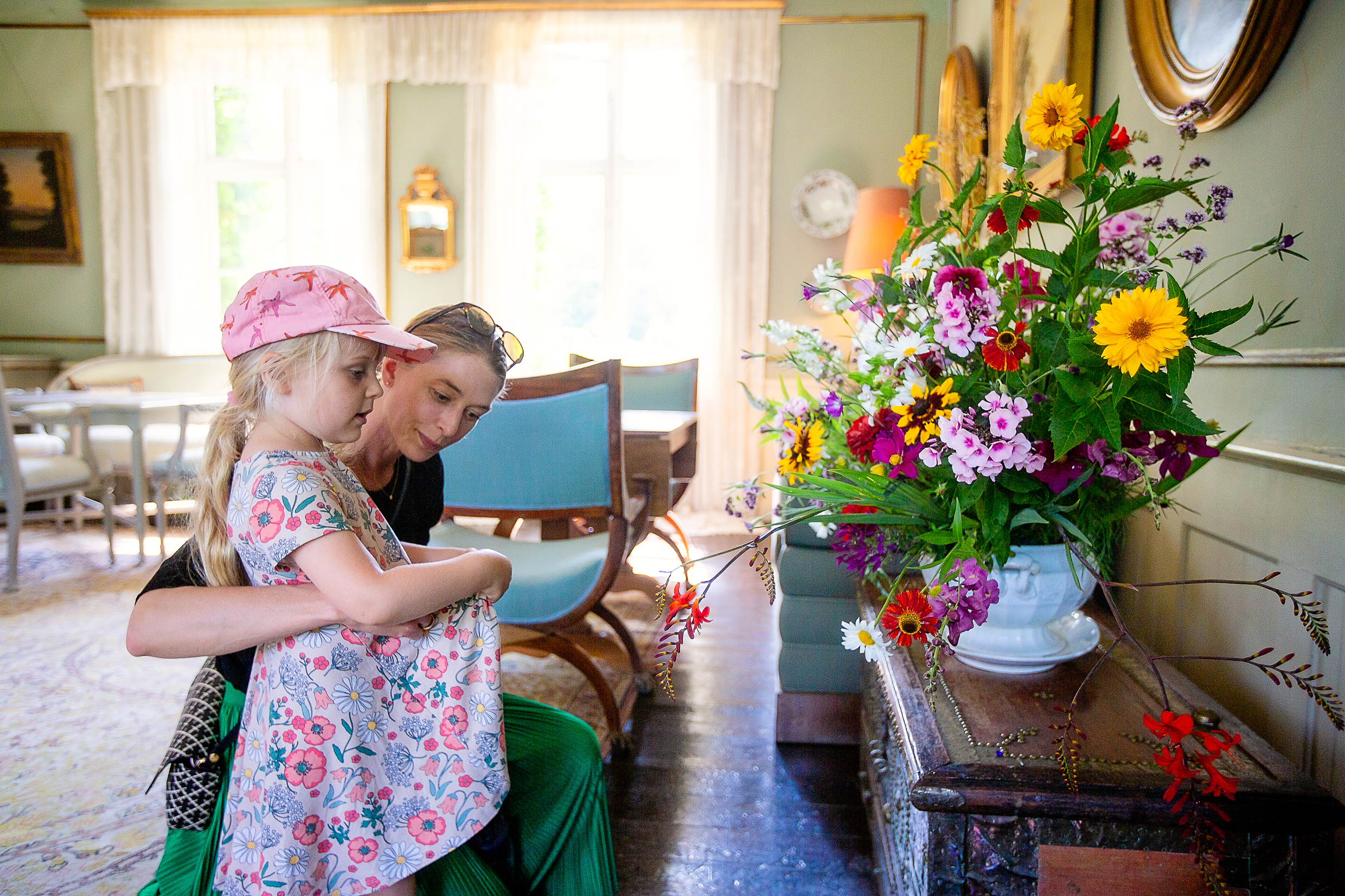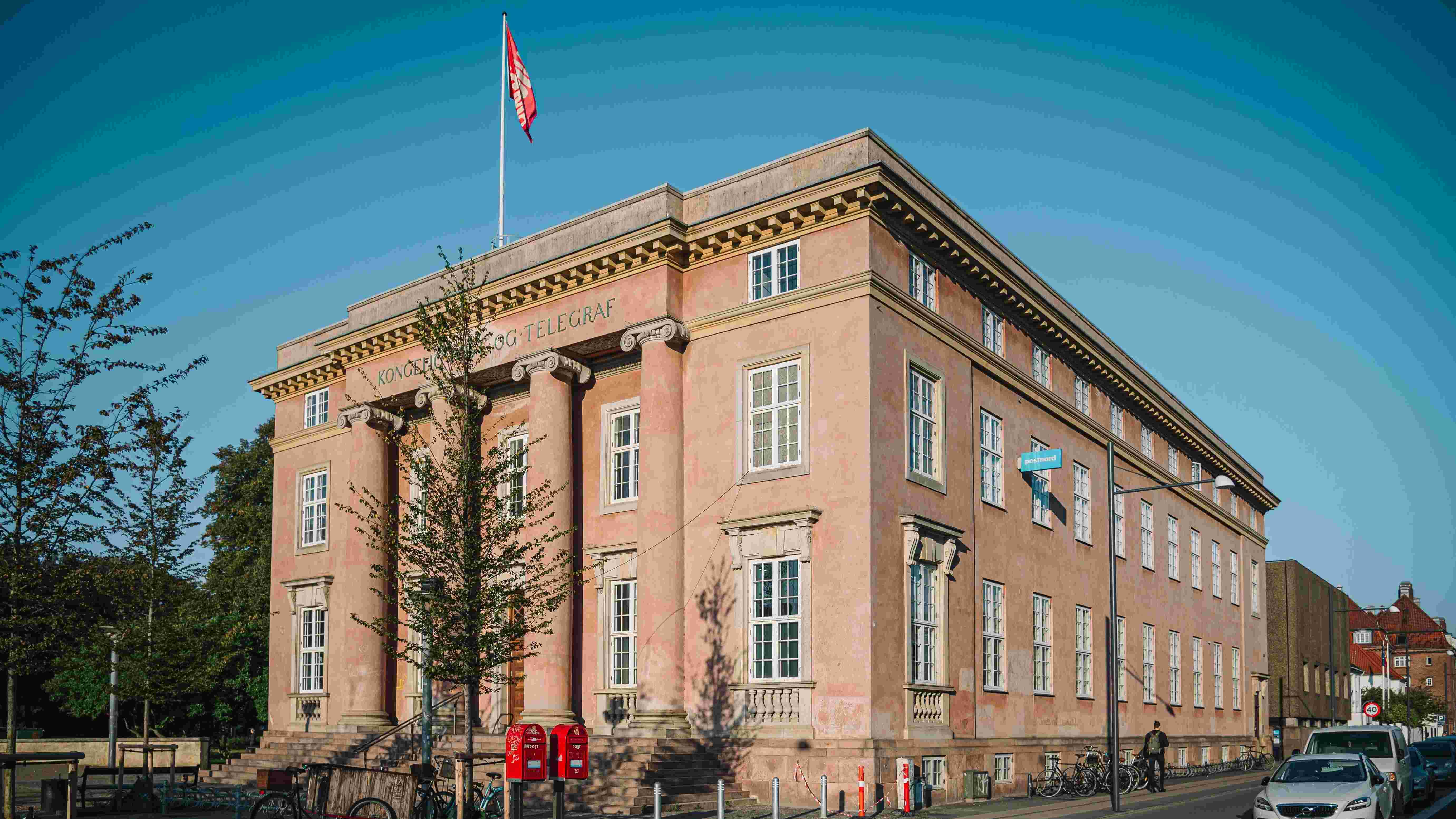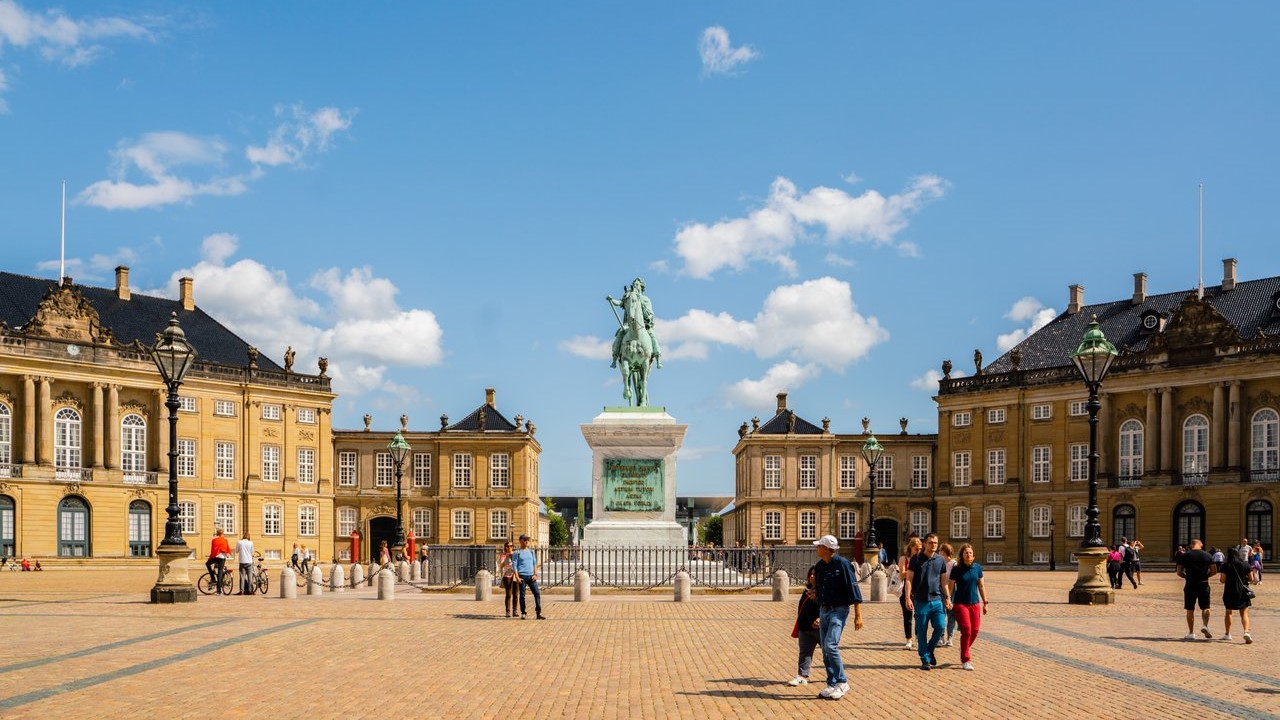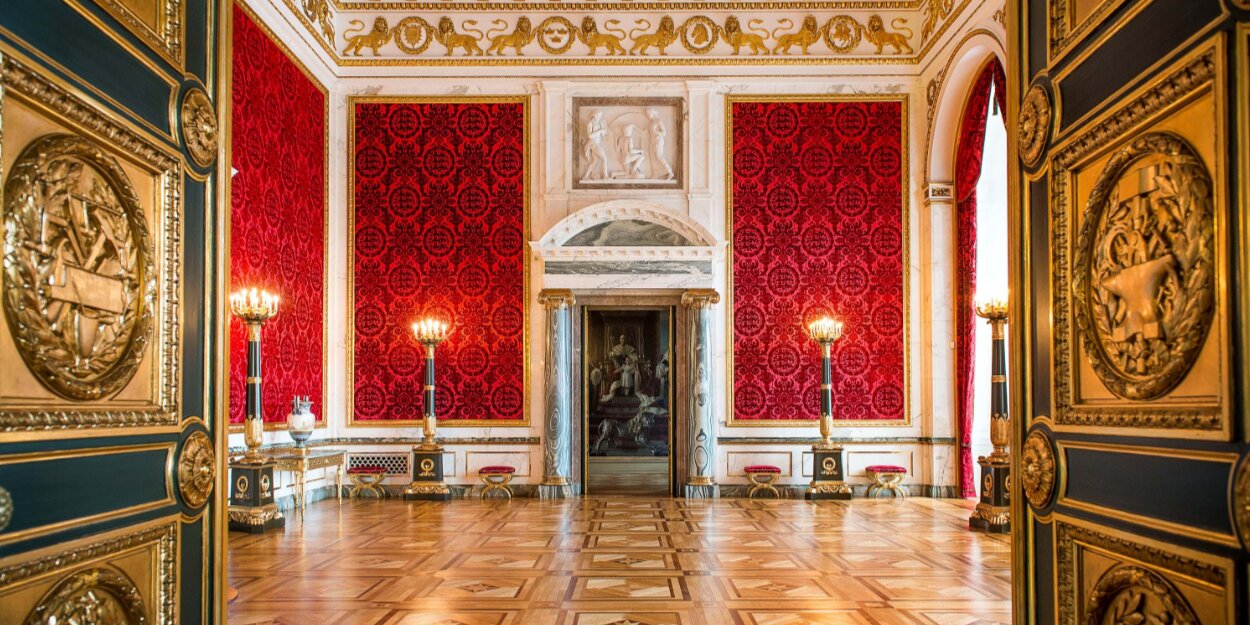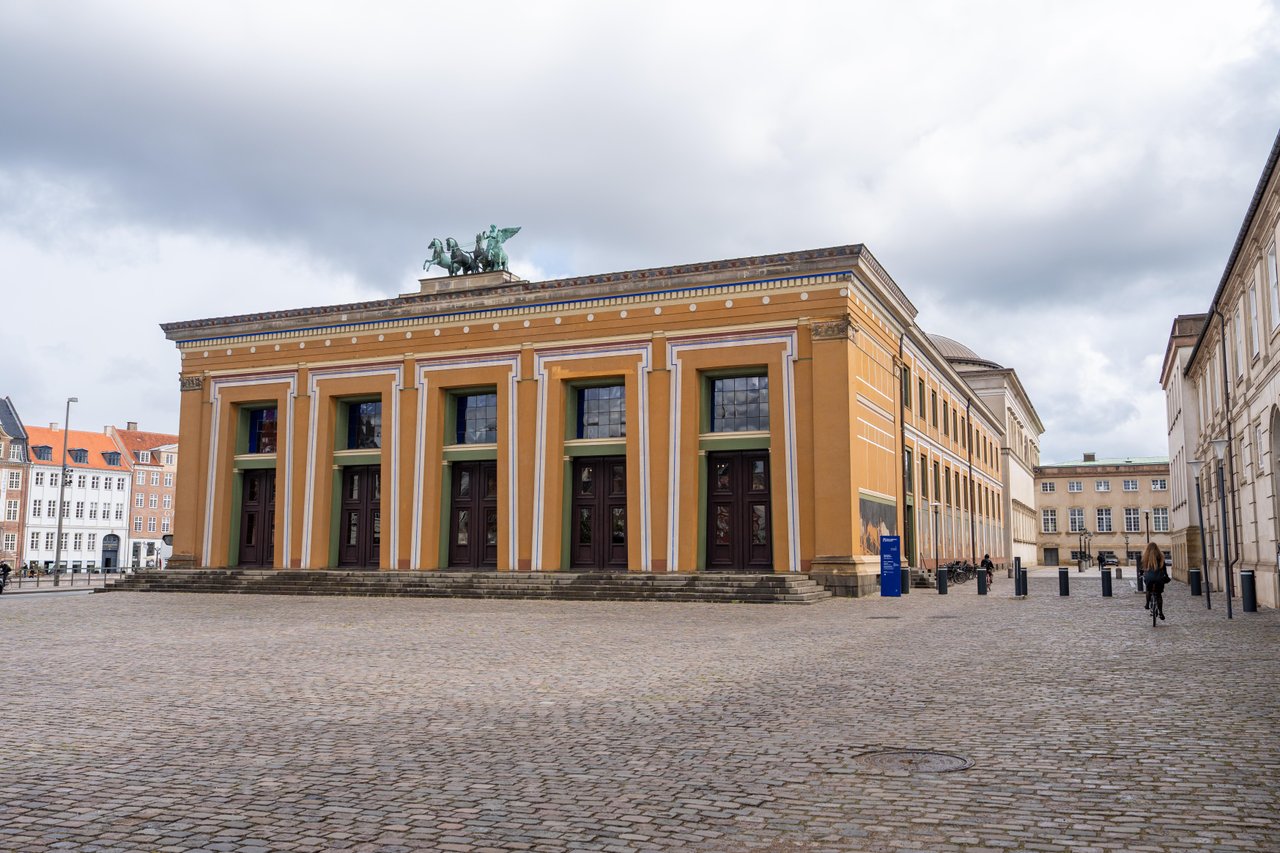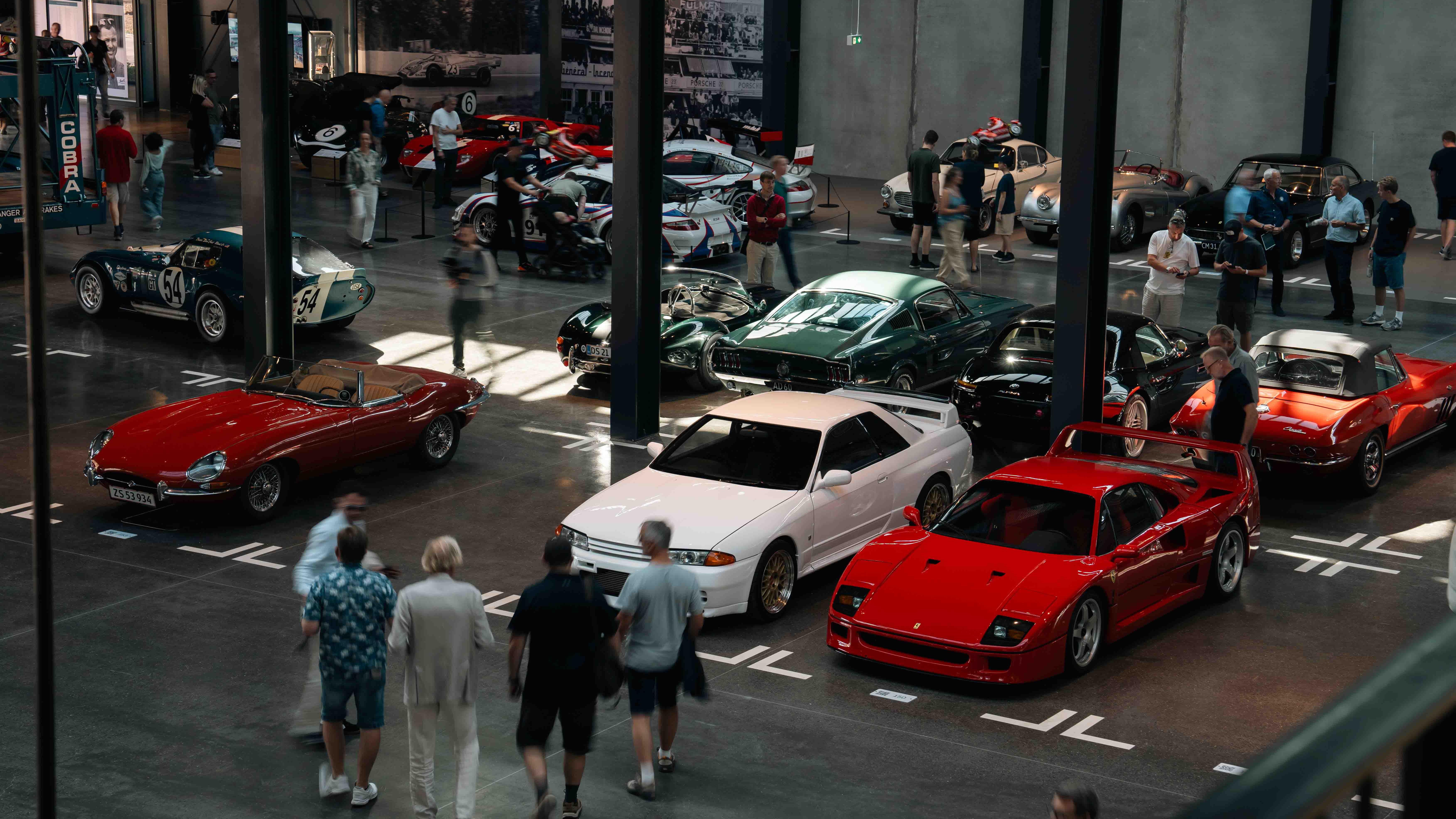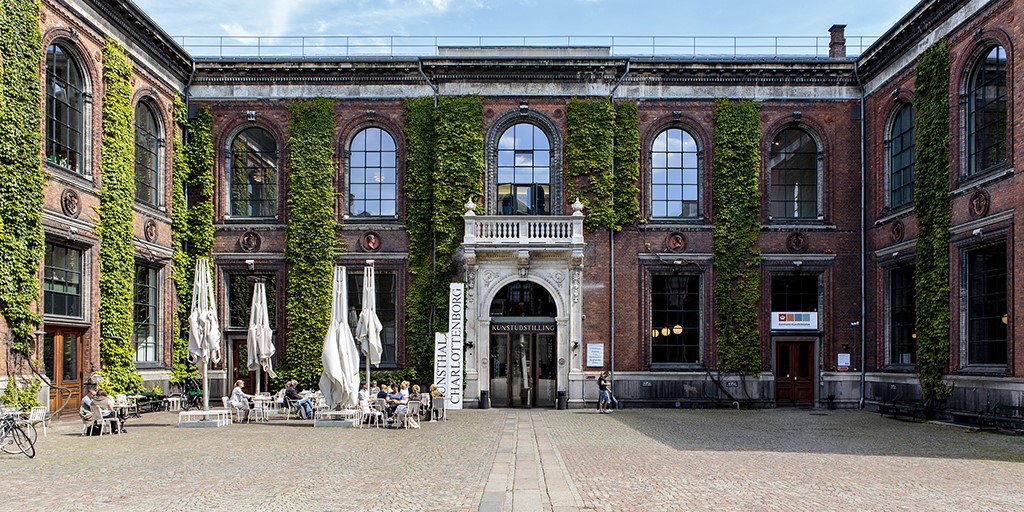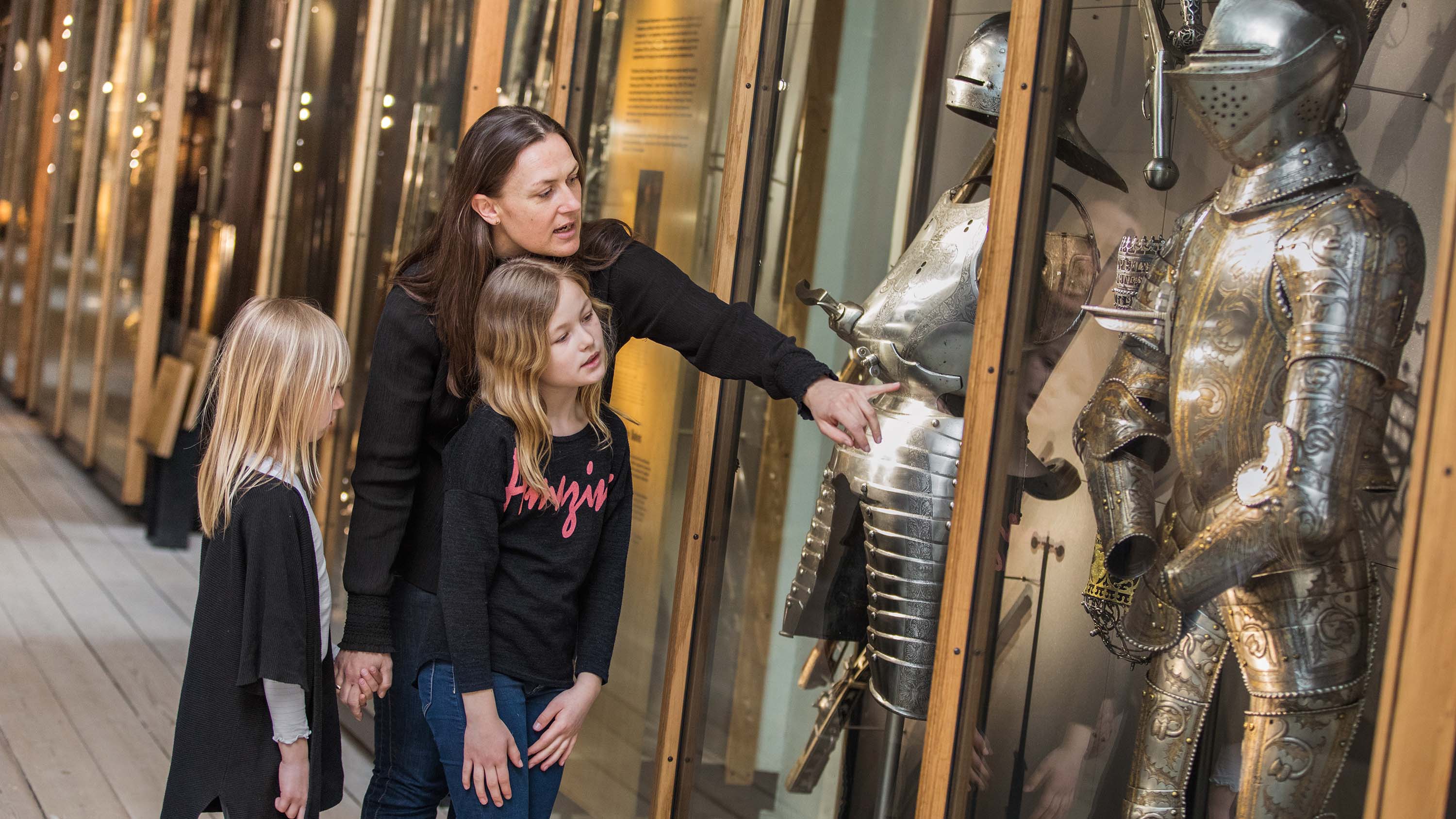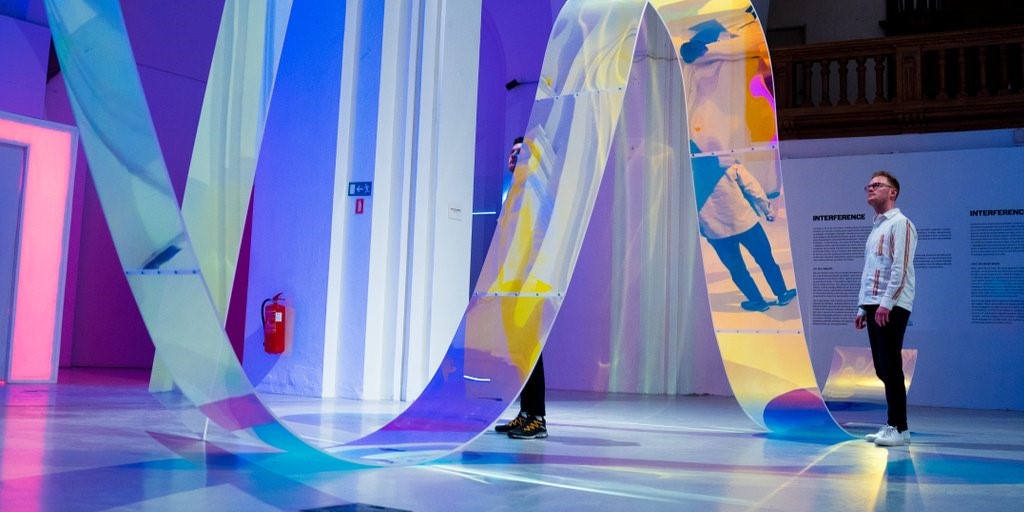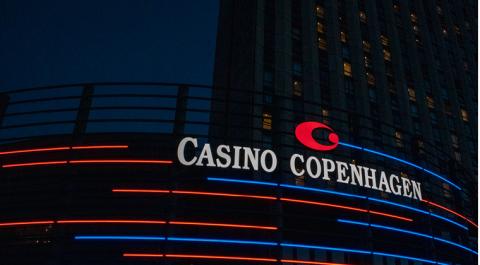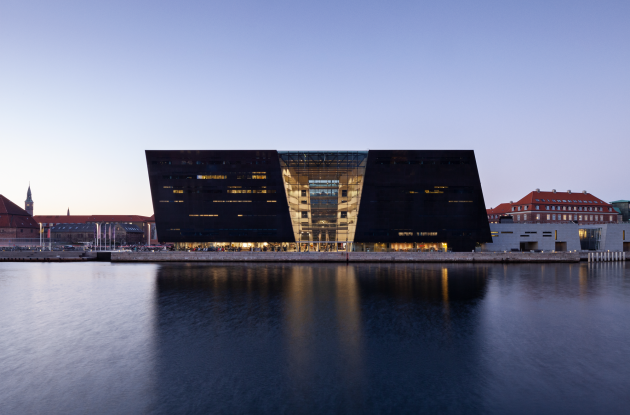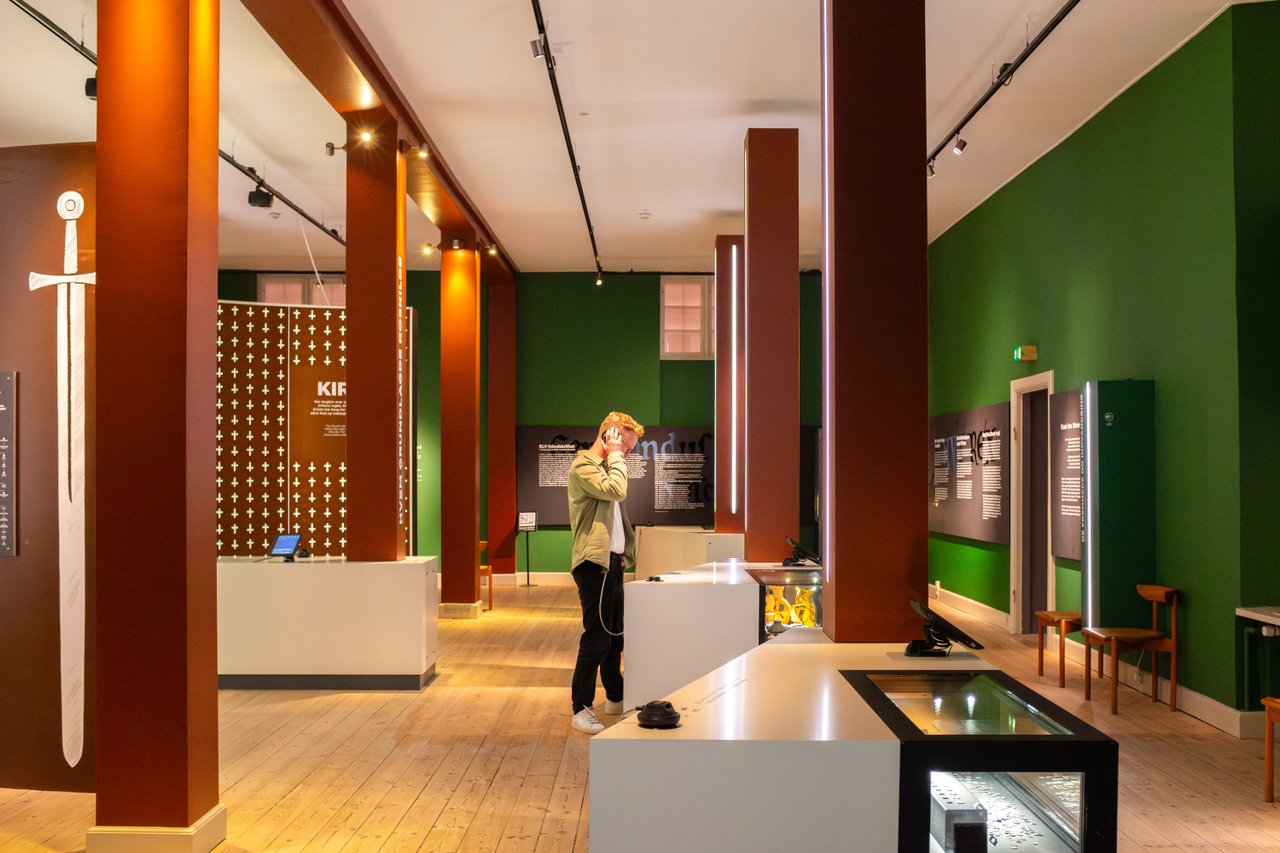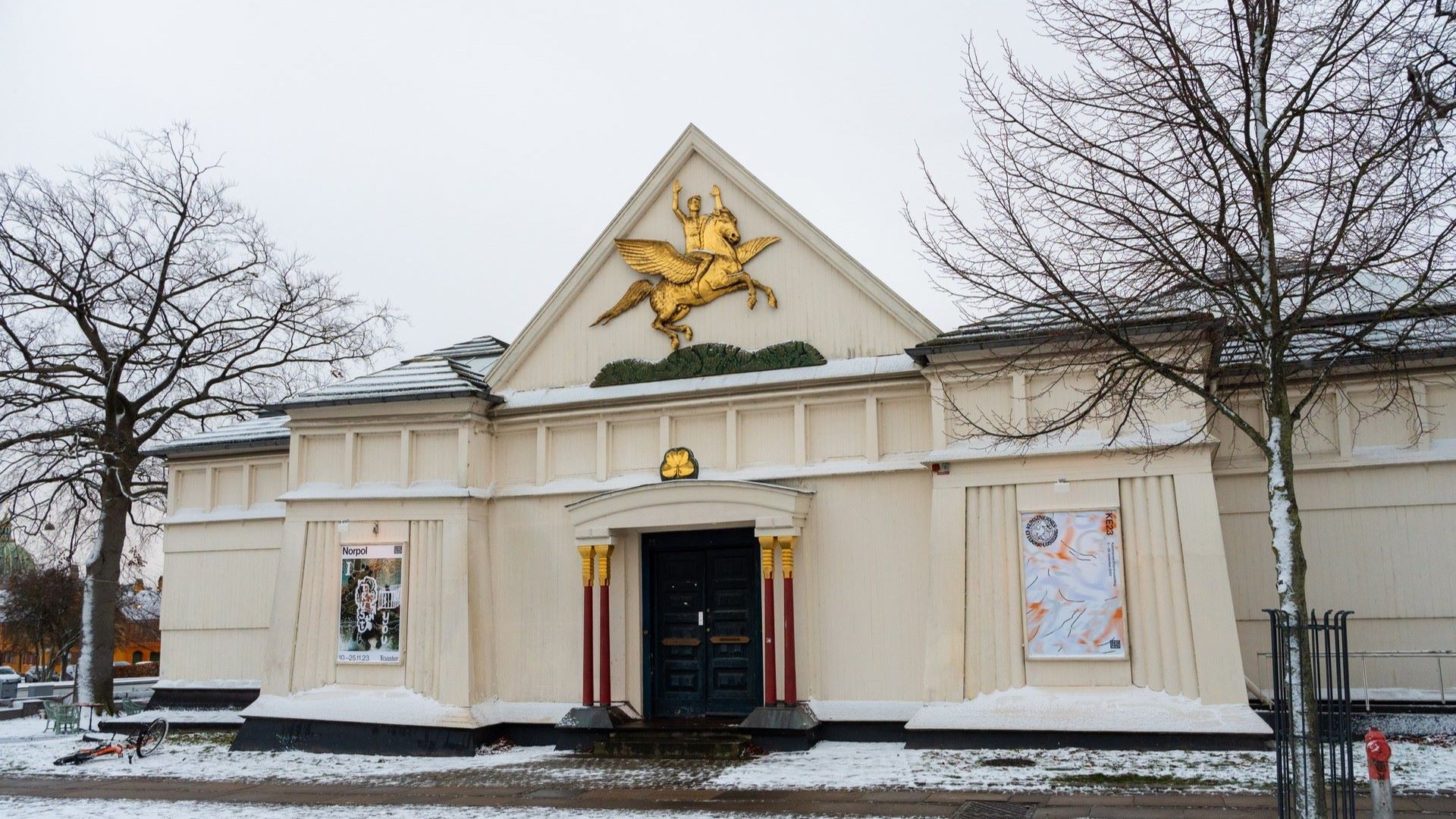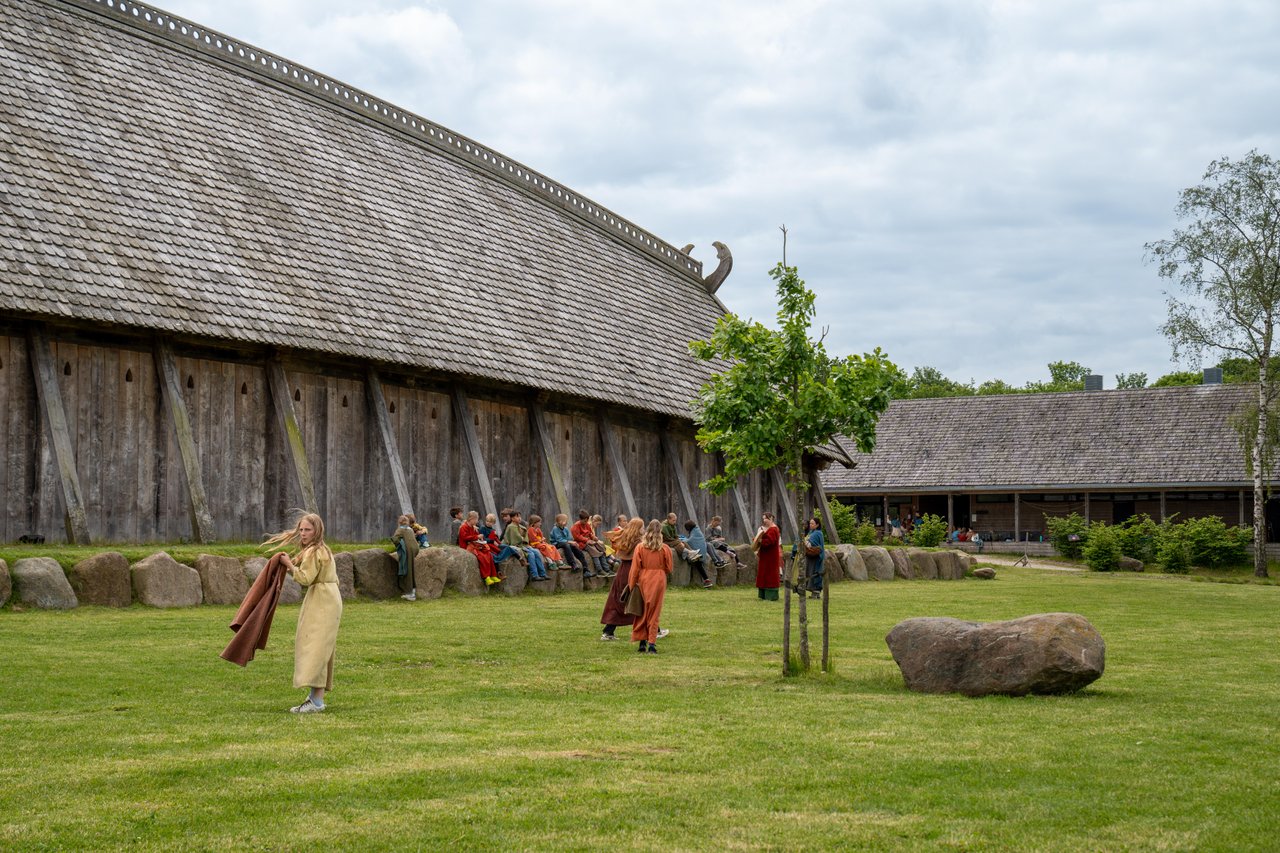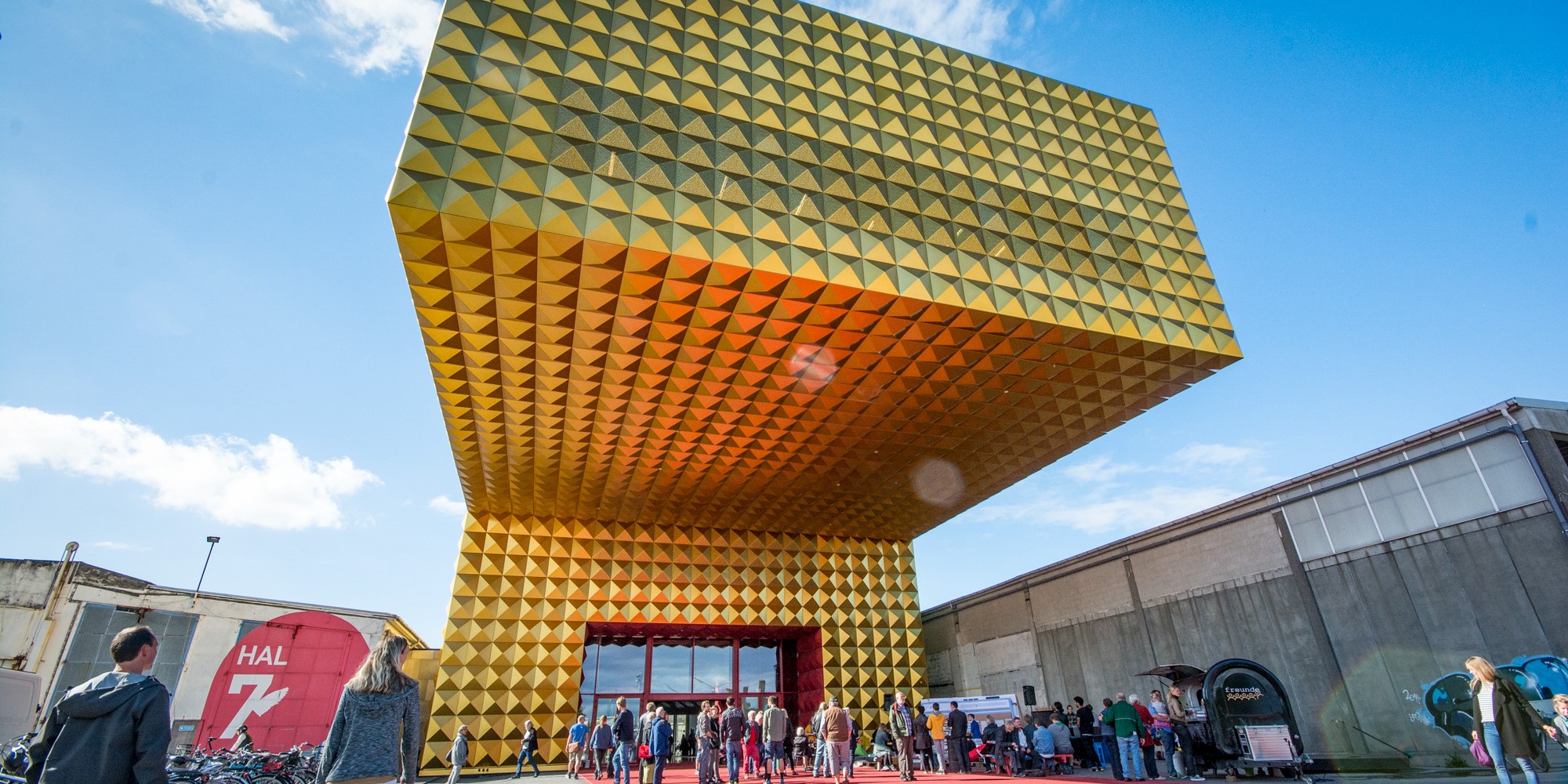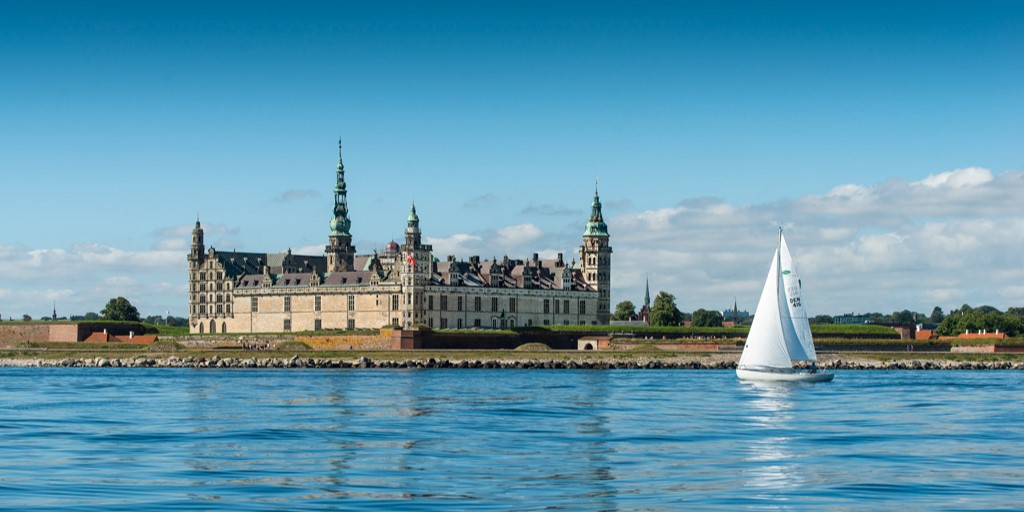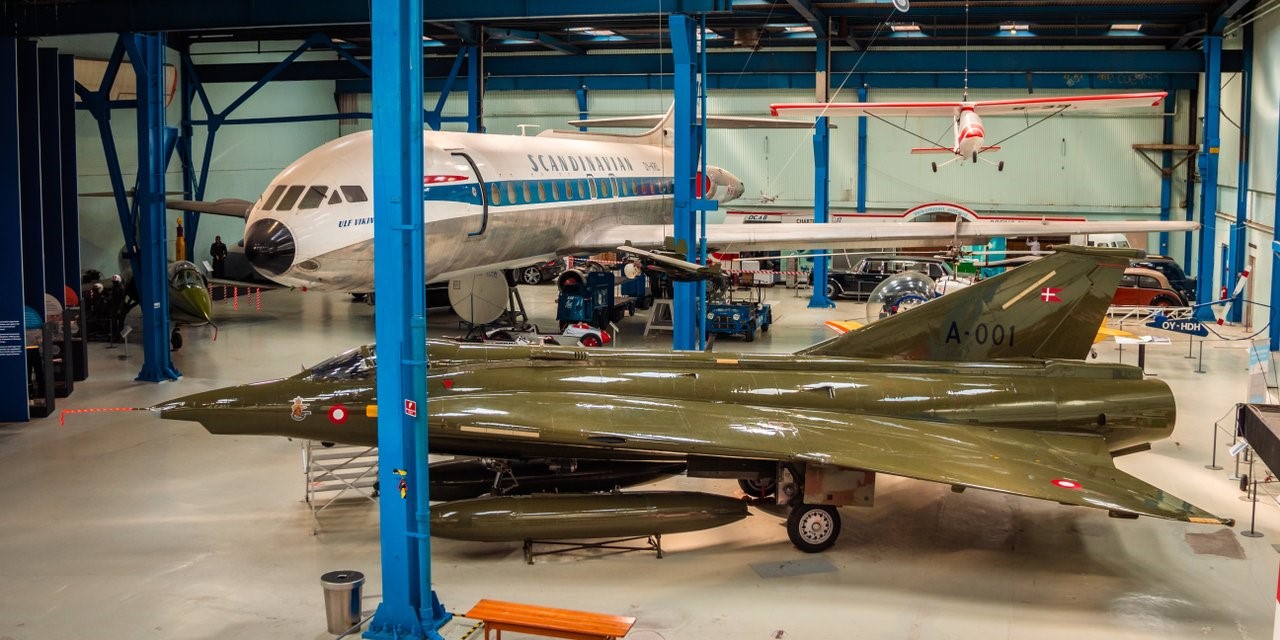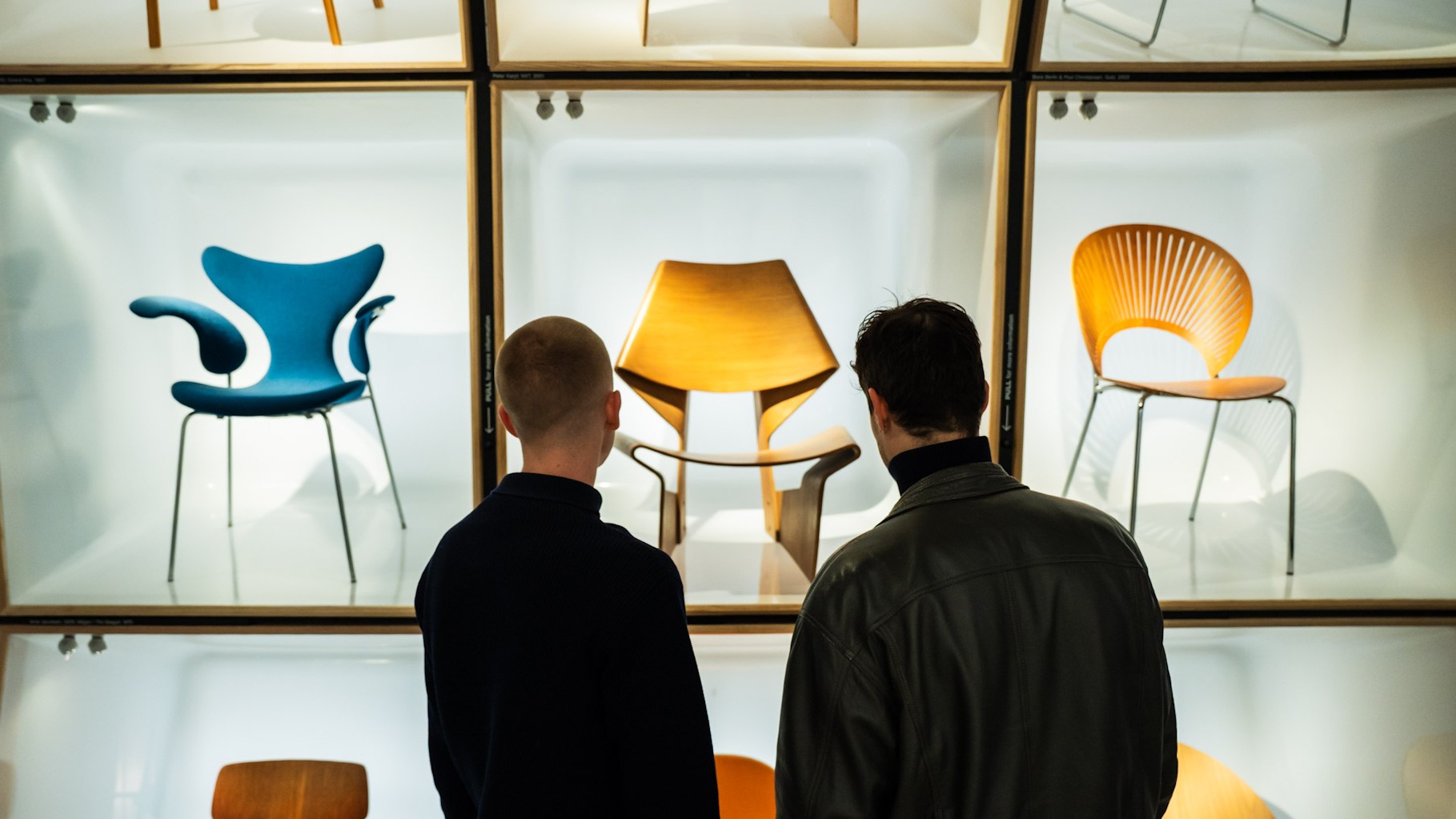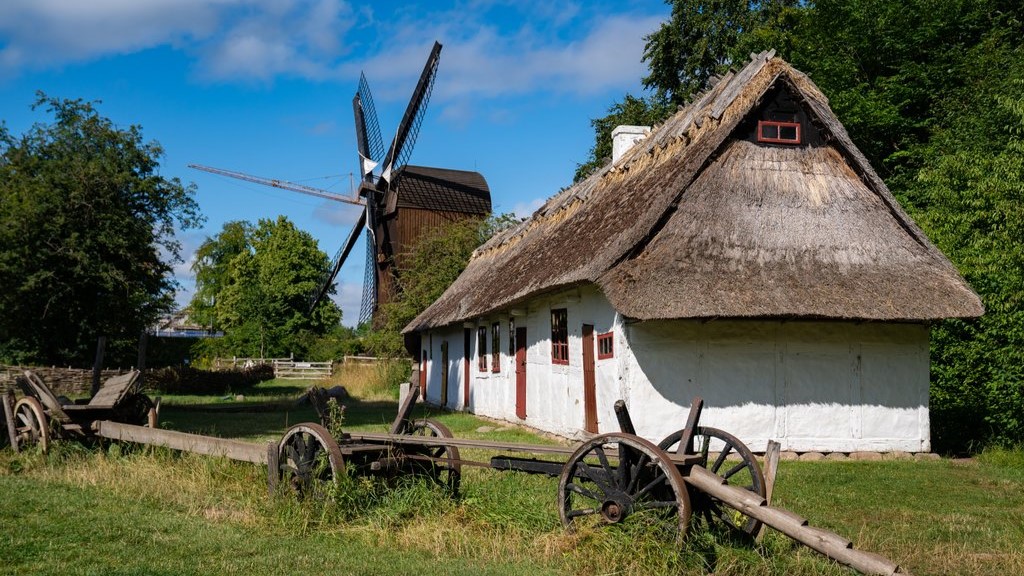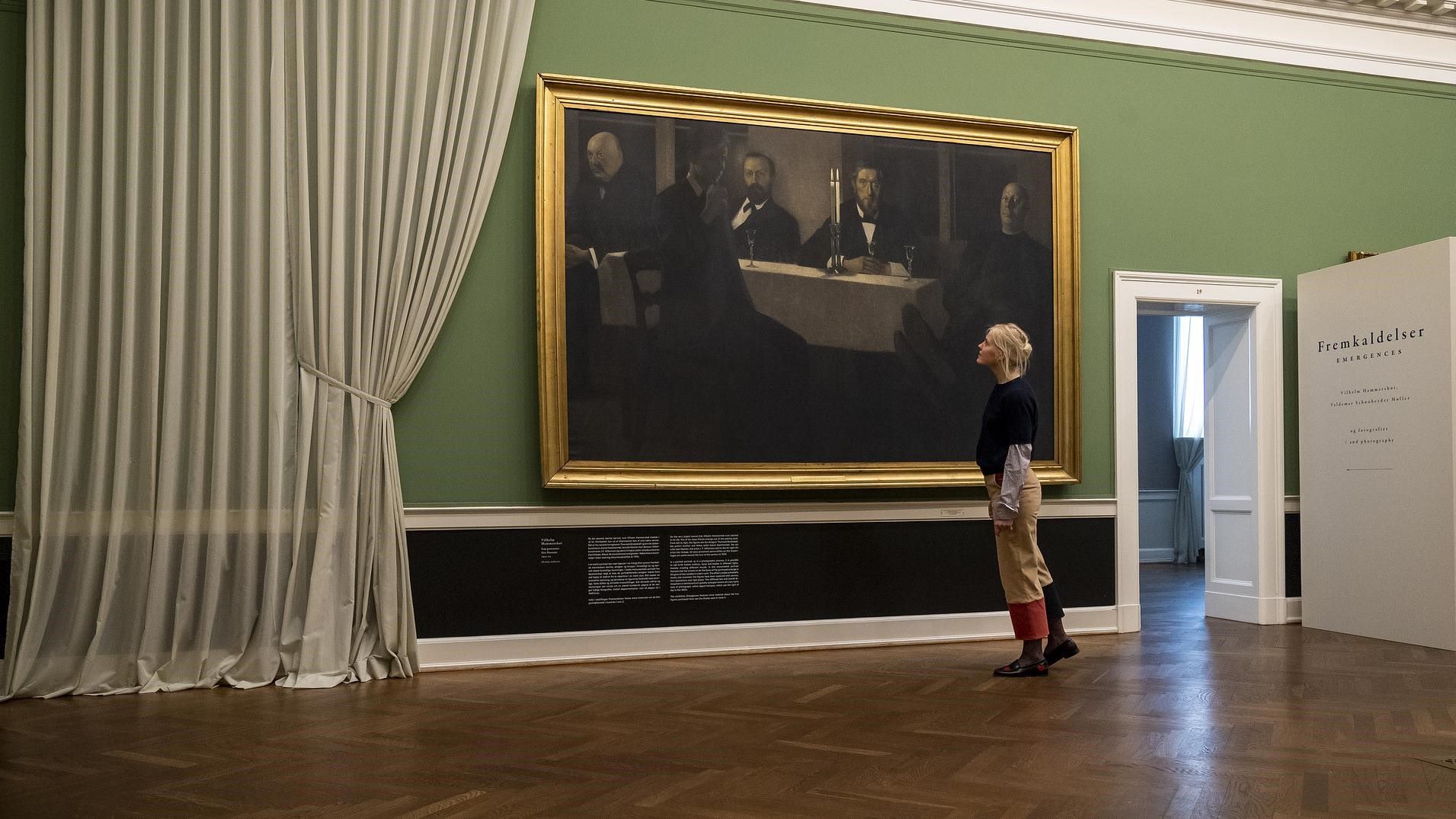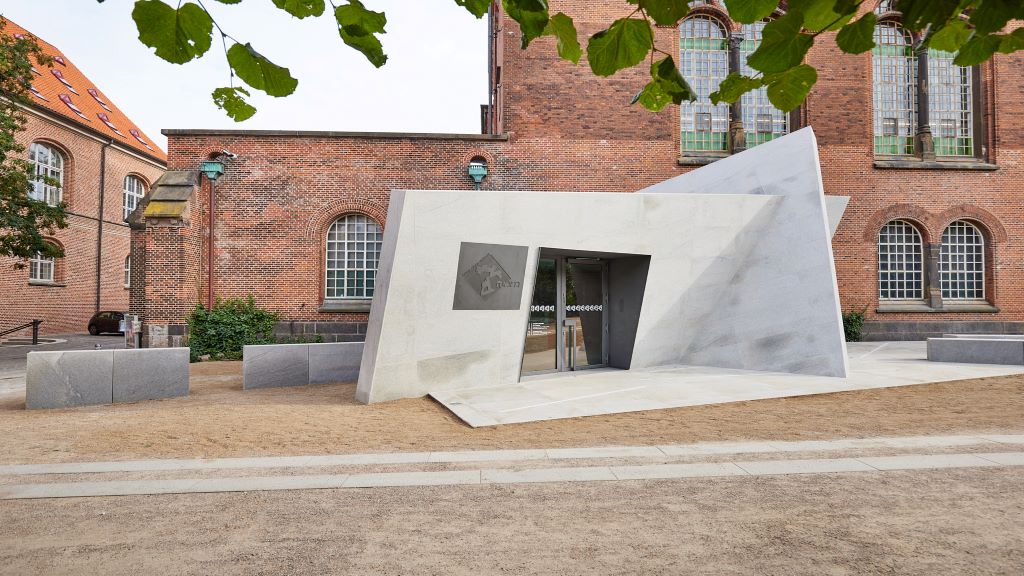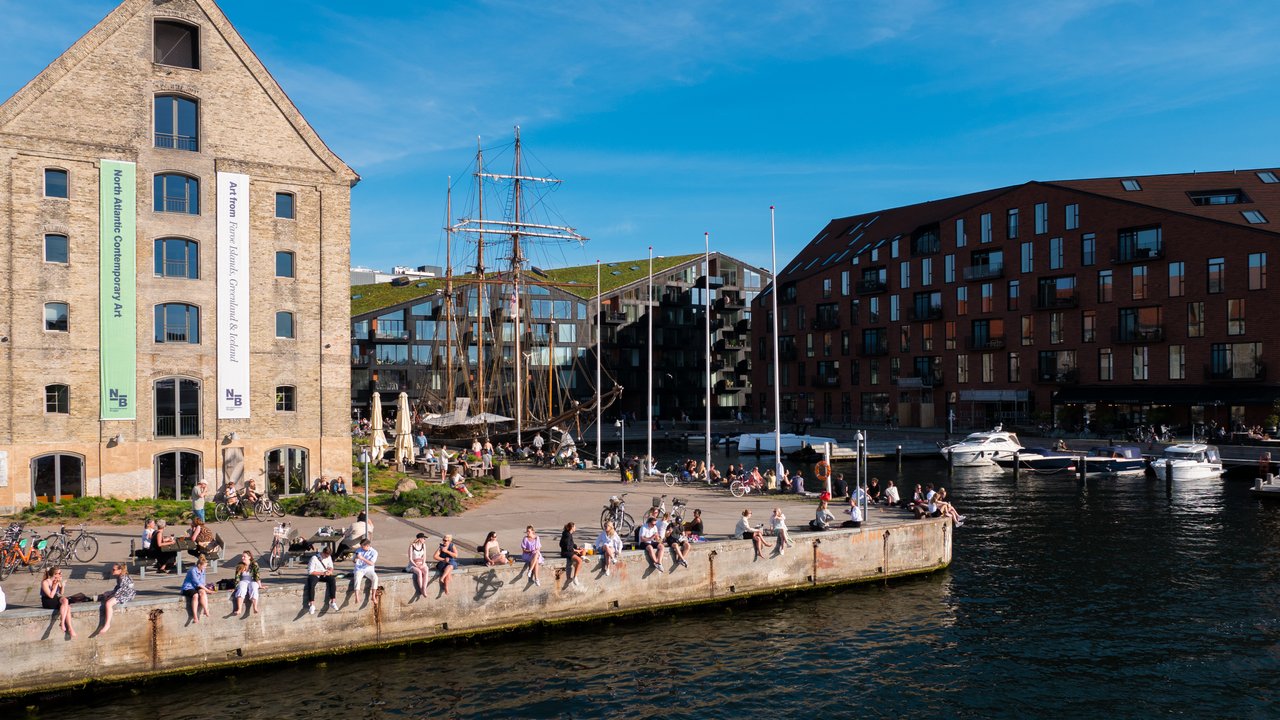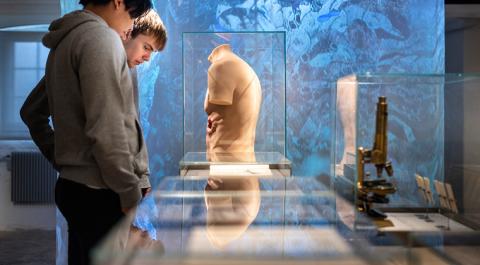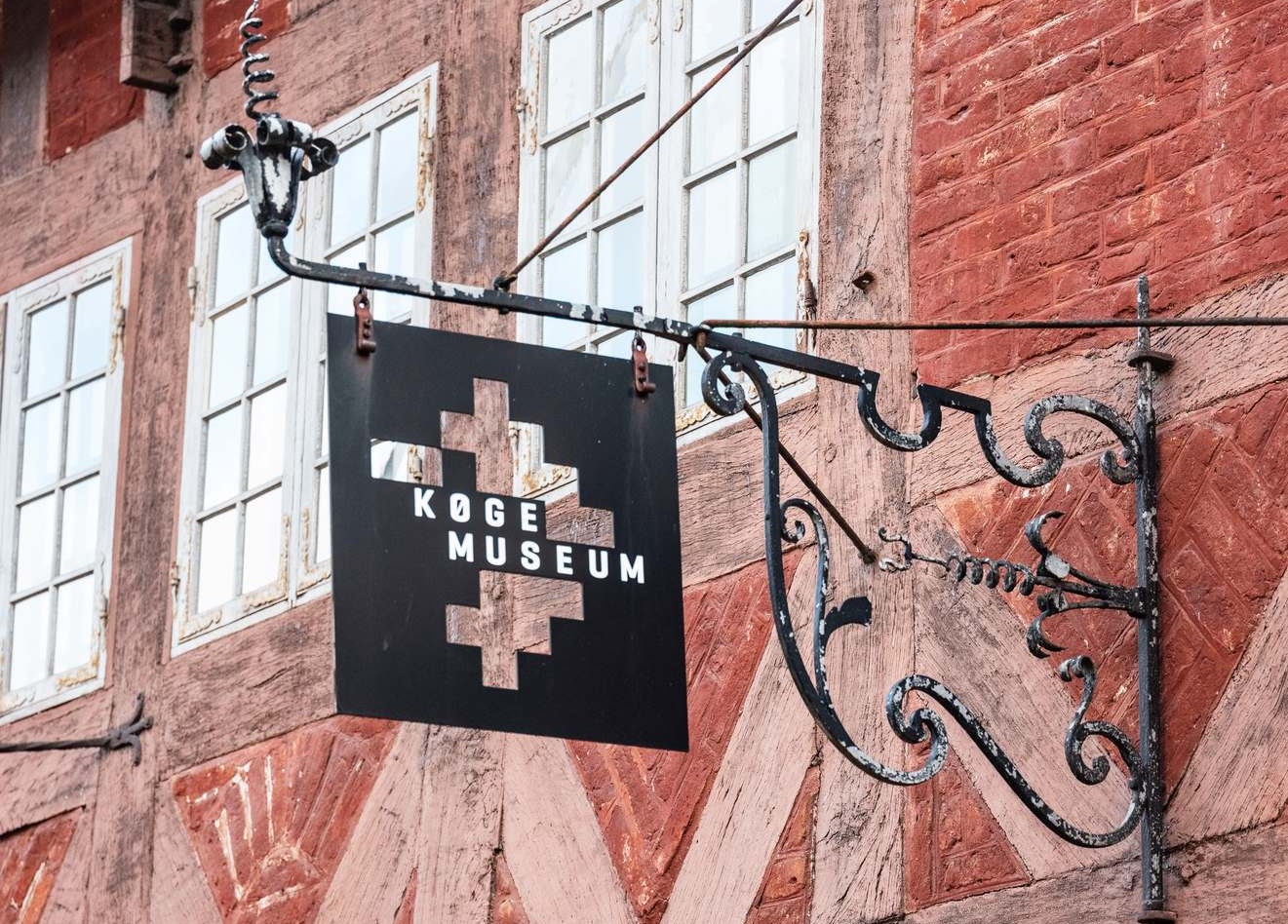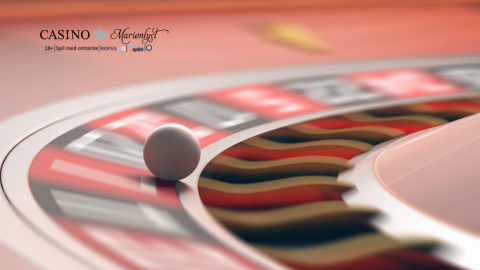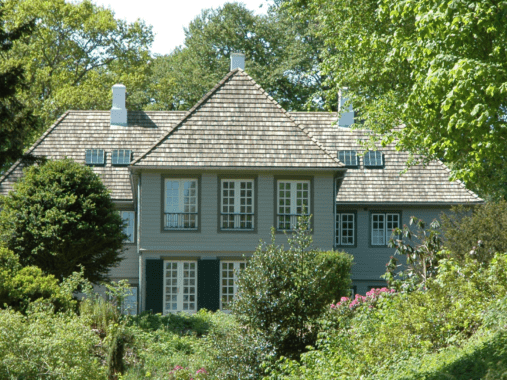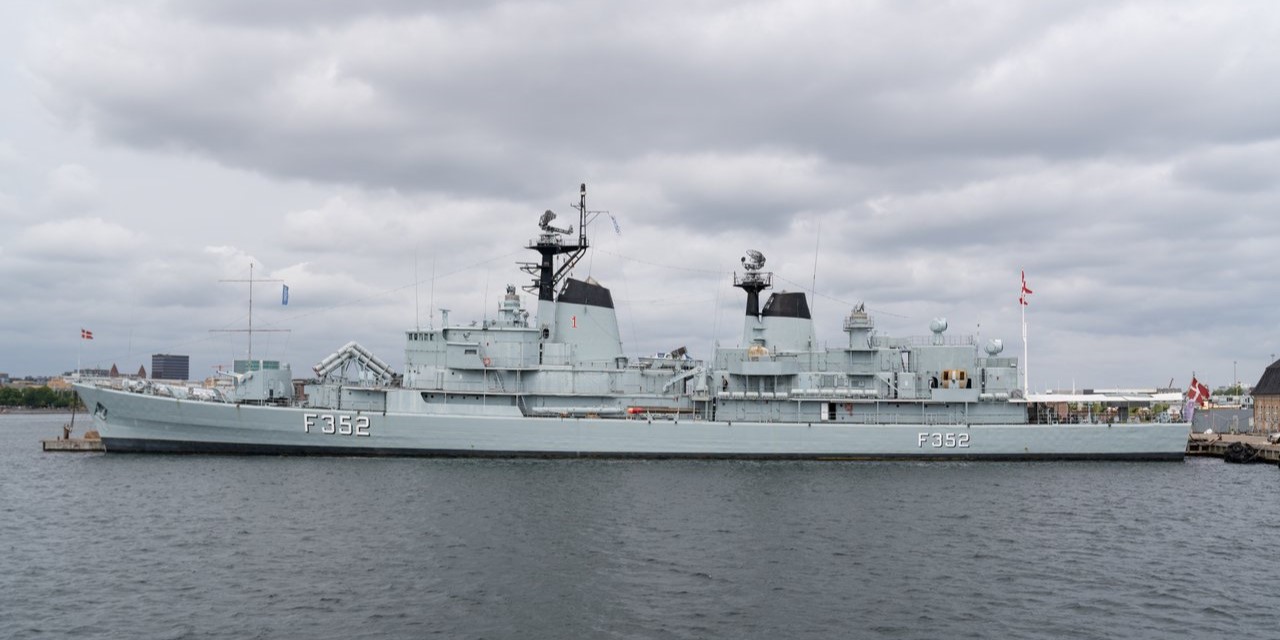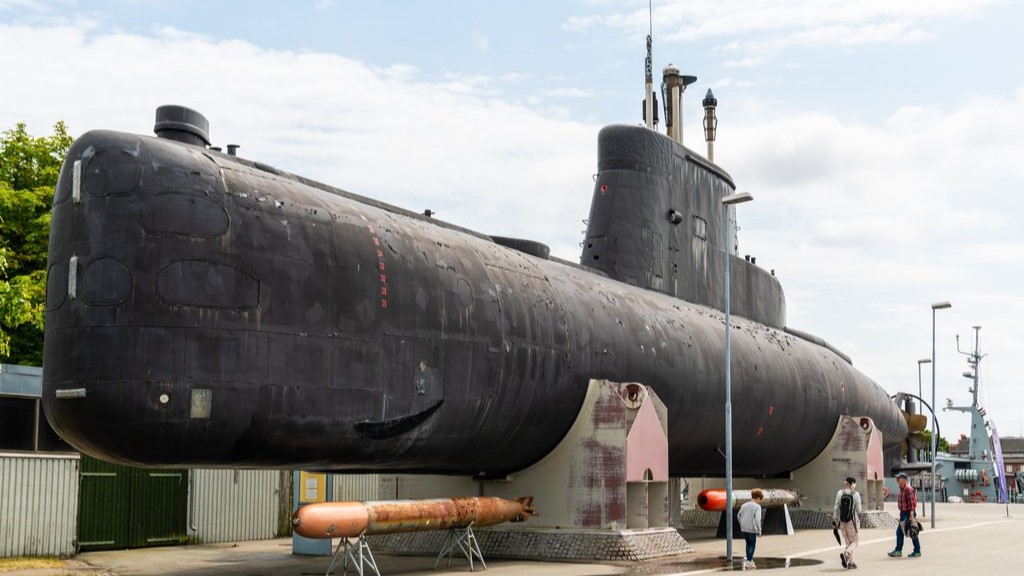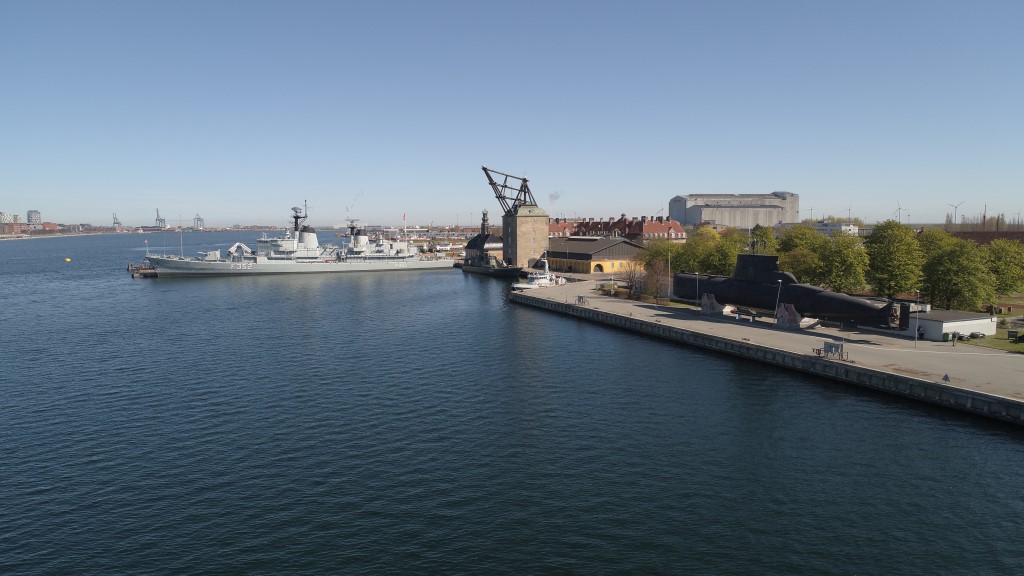Attractions
COPENHAGEN CARD includes free access to all the attractions listed below. Use the filters to find the attractions that match your interests and add them to the savings calculator to see how much money you can save with a COPENHAGEN CARD - save up to 30 % overall. Add the attractions you want to visit by clicking on the "heart icons".
COPENHAGEN CARD - DISCOVER® includes public transportation and 80+ attractions.
COPENHAGEN CARD - HOP® includes the Hop On-Hop Off buses and 40+ attractions.
Please note changing opening hours on Mondays. Use the filter "Open on Mondays" to see the attractions you can visit.
-
Click heart and calculate your savingsA visit to Tivoli is an absolute must for children and youthful souls coming to Copenhagen. The amusement park offers everything from adrenaline rushes to big concerts and unique dining experiences, dazzling lights and beautiful flowers. Part of the secret to Tivoli is that there’s something for everyone. The garden is more beautiful than in any other amusement park and a walk there will reveal exotic architecture, iconic buildings, and lush gardens. At night, thousands of colored lights create a magical atmosphere unique to the place. Tivoli is only a few minutes away from the Town Hall Square and with the Central Station right next door it’s very easy to get to. Re-entry: Copenhagen Card covers ONE visit per card, however, you can re-enter Tivoli on the same day if you get a re-entry stamp at the main entrance. Entrance and ride tickets Your Copenhagen Card will cover the entrance, if you wish to go on a ride you will have to get individual ride tickets or an unlimited ride pass.Experience Easter, Summer, Halloween, and Christmas at Tivoli At Tivoli there’s something new to see all year round. The decor in the Garden reflects the changing seasons with colorful Easter eggs, dazzling summer scapes, bewitching Halloween decorations and magical Christmas lights. Summer at Tivoli means countless open-air concerts, inspiring festivals and events, and amusements and fireworks rumbling into the night. Around Halloween, scary ghosts, spiders, scarecrows, and more than 20.000 pumpkins take over the Garden, making it teem with horror, thrills and plenty of autumn fun for the whole family. Summer in Tivoli: 4/4/25 - 21/9/25 Halloween: 03/10/25 - 2/11/25 Christmas: 14/11/25 - 4/1/26 (closed 24/12/25) Please note that Tivoli is closed between these periods. Dine in Tivoli At Tivoli you can feast on a world of delicious temptations and culinary experiences. Ranging from pork roast sandwiches to fine dining there’s something for every purse and palate. And once that sweet tooth kicks in, just follow the scent of freshly fried churros, candy floss and coated popcorn. At the Tivoli Food Hall on the corner of the Main Entrance you will find 15 hand-picked stands, each contributing to the wide selection of food experiences. The Tivoli Food Hall is open all year round with free access off the street, so you are always welcome to drop by - even outside the Garden’s opening hours.Feel the presence of history Tivoli was founded in 1843 and has since become a national treasure as well as an international attraction. Author of fairy tales H. C. Andersen visited the Garden plenty of times as did Walt Disney and many other celebrities who have been smitten by the magic of the place. The amusements are all made to fit into Tivoli’s wondrous universe and some of them have become downright iconic, towering above the rooftops of Copenhagen. Tivoli’s oldest and most popular ride is The Roller Coaster constructed in wood back in 1914, only one of the seven roller coasters in the world still featuring a man in one of the carts controlling the brakes manually. On top of that Tivoli boasts the Tivoli Youth Guard, the Pantomime Theatre, Nimb, the Glass Hall Theatre, the Japanese Pagoda, the Tivoli Concert Hall - and plenty of other things to revel in.
-
Click heart and calculate your savingsCASTLE, EXHIBITIONS, AND CASTLE GARDENS The museum is open every day of the year – including Mondays! Frederiksborg is also open on the Christmas Days and New Year’s Days. CASTLE Discover Christian IV’s magnificent castle, dating back to the 1600s. This impressive Renaissance castle unfolds the story of a king with power and ambition. You’ll be greeted by the stunning Neptune fountain in the outer courtyard and the elegant Marble Gallery in the King’s Wing. Step inside and let yourself be captivated by the splendid decorations and atmosphere of rooms like the Great Hall, the Audience Chamber, and the Hall of Angels.EXHIBITIONSToday, Frederiksborg Castle is home to the Museum of National History and the National Portrait Gallery. In addition to its vast permanent collection, the museum presents a series of changing special exhibitions. From 2 November 2025 to 4 January 2026, you can experience BLUE CHRISTMAS – an immersive mirror installation in the castle’s magnificent Great Hall, featuring Royal Copenhagen’s Christmas plates on the occasion of the porcelain manufacturer’s 250th anniversary. Set against iconic history paintings and Denmark’s most extraordinary portrait collection, Frederiksborg invites you to stand face to face with the individuals who have shaped the Danish nation from the 15th century to the present day.CHAPEL Royal weddings and the anointing of absolute kings — the Chapel at Frederiksborg bears witness to Denmark's history. It also serves as the Chapel of the Royal Danish Orders of Chivalry, featuring coats of arms belonging to the Knights of the Order of the Elephant and the Grand Cross Knights of the Order of Dannebrog hanging on the walls. The lavish chapel also functions as a parish church and is included in your museum visit.CURIOUS CHILDREN Frederiksborg is brimming with quirky details and stories for inquisitive minds of all ages. During Danish holiday breaks, extra activities for children are on offer. Entry is free for all under 18!DINE AT RABARBERGAARDEN SLOTTET Don’t miss the museum’s highly acclaimed farm-to-table restaurant, Rabarbergaarden Slottet (meaning the Rhubarb farm at the castle), where local ingredients from Royal North Zealand are transformed into unique gastronomic experiences.CASTLE GARDENS Frederiksborg is situated on three islands in the Castle Lake, surrounded by two grand garden designs: the Baroque Garden from the 1720s, characterized by its neat lines, shaped trees, and royal monograms, and the romantic landscape garden featuring free-growing woods, winding streams, and the idyllic Bathhouse Castle from the 1580s. The Little Ferry sails across the Castle Lake all summer long.VISIT Frederiksborg Castle is in Hillerød, under normal circumstances a 35-minute train ride via the S-train line A from Copenhagen. It takes about 15 minutes to walk from Hillerød Station. You can walk along the Castle Lake or through the city's pedestrian streets with cafes and shops.
-
Click heart and calculate your savingsExperience Copenhagen from the water in electric boats with GoBoat Harbor Tours GoBoat Harbor Tours offers an atmospheric one hour canal tour in Copenhagen in electric boats with space for up to nine people. From their departure point at Islands Brygge, the captain sails you calmly through the city’s historic and iconic harbor areas, passing sights such as Christiansborg Palace, Nyhavn, Amalienborg Palace, the Opera House and Christianshavn Canal, while you can enjoy complimentary coffee or tea during the winter season and listen to stories about the city’s history and architecture. The boat is covered when the captain finds it necessary, and blankets are available at all times. It is not wheelchair-accessible. See the full route overview here. Harbor tour departure times: Every day at 11:00, 12:15, 13:30, 14:45 and 16:00. You can pre-book same-day tickets when you show up at Islands Brygge 10. During Copenhagen Light Festival (30 Jan – 22 Feb), they also sail at 17:15 and 18:30.Please have your Copenhagen Card scanned when checking in before boarding.
-
Click heart and calculate your savingsM/S Maritime Museum in Elsinore is one of the most talked about museums in recent years. It has been named ‘A cutting-edge cultural venue’ by New York Times and ‘One of the eight greatest new museums’ by BBC. A sensory experience awaits with stunning architecture and modern, interactive exhibitions. From a distance it is almost invisible, but below sealevel - in the middle of the newly renovated Culture Harbour and next door to Kronborg Castle - lies the Danish Maritime Museum, M/S Maritime Museum of Denmark. If you follow the sloping bridges into the old dry dock, you will experience one of the most spectacular new buildings in Denmark of the recent years.M/S Maritime Museum of Denmark tells the story of Denmark as one of the world's leading maritime nations in an evocative and dramatic way. The setting is innovative and created by the award-winning design studio BIG - Bjarke Ingels Group. Eight different themes You can experience the story of Denmark as one of the world's leading maritime nations through eight different themes. You can look forward to the museum's rich maritime collection on display in an evocative and dramatic staging with major film projections and soundscapes. At the museum, you can get lost in films, objects and texts for hours – or you can walk through the exhibitions in 20 minutes and still get a glimpse of shipping's past and present, its structures and elements. Many people see maritime history as a niche, but we try to open up history and tell stories of love, death, courage, science and drama Experience seafaring up close in the 400 m2 maritime play universe ‘THE DREAM SHIP’ which encourage play, adventure and stories amongst children, parents and grandparents. ‘THE DREAM SHIP’ is supported by the Nordea Foundation and the Lauritzen Foundation. You can, among other things, come face to face with a torpedo, get an old sailor tattoo and see the world's largest model of a container ship. Furthermore, the M/S Café offers lunch, hot and cold beverages and a selection of cakes. The museum shop M/S Cargo sells a wide variety of books, clothes, applied arts and toys related to the maritime world. Special Exhibition: Enigmas from the Baltic Sea - Echoes from the Deep - 15.11.24 - 31.08.26The Baltic Sea holds more than 100,000 sunken ships—remarkably well-preserved wrecks that rest like time capsules on the seafloor. The new exhibition “Enigmas from the Baltic Sea - Echoes from the Deep” invites you into this silent underwater museum, where divers’ discoveries, historical artifacts, and artistic interpretations bring hidden stories to life. Explore treasures from the Danish warship Gribshunden and be captivated by artworks inspired by the depths and secrets of the sea.
-
Click heart and calculate your savingsCopenhagen Contemporary (CC) is Copenhagen’s international art center showing installation art created by world stars and new emerging talentsIt occupies the magnificent former B&W welding hall offering a total of 7,000 m2 of beautiful industrial halls with plenty of space to show the technical and large formats in which many contemporary artists work: total installations, performance art, and monumental video works. Art that can often be entered and sensed with the whole body. Copenhagen Contemporary is one of Scandinavia’s largest exhibition venues for contemporary art and a lively meeting place for a wide audience. CC creates collaborative partnerships and organises events with a number of different partners across cultural genres locally and internationally. You can attend art talks, art walks, concerts, creative workshops for children, visit CC’s own shop offering Scandinavian design, and experience the unique and historical city district of Refshaleøen. Situated centrally in B&W’s iconic welding hall, CC is an international power hub in Copenhagen’s new cultural district. The special quality of this area continues to be defined by its industrial history: the area is raw and green with commanding views across Copenhagen Harbour. The district is a mix of first-class gourmet restaurants and small entrepreneurial initiatives; you can go for a dip in the sea, for a sauna, enjoy a glass of wine, and eat grilled food, buy quality bread and visit Copenhagen’s most popular food market with stalls from across the world and lounge areas by the water’s edge. Not forgetting the climbing, skating,and skiing activities, the flea market, and the theatre and music festivals, which are just some of the many activities this area has to offer. Exhibtions (copenhagencontemporary.org): Soft Robots – The Art of Digital Breathing - 20 June – 31 December 2025The exhibition explores how emerging technologies like artificial intelligence and synthetic biology shape our lives and identities. Fifteen artists and artist duos present works that reflect on the relationship between humans and machines, with a poetic and critical approach to the digital age. Inspired by H.C. Andersen’s The Nightingale and pan-Asian philosophies, the exhibition asks whether breath and soul can still be found in future landscapes filled with avatars and seductive machines. Several works are newly created for the exhibition, including pieces developed through the Collide Copenhagen residency in collaboration with CERN.CC Create x Monster Chetwynd – A Feather in your Hat – 13.04.25 – 01.03.26Experience Monster Chetwynd’s spectacular total installation in Hall 4, where her legendary DIY aesthetic is combined with humor, imagination, and grotesque elements. At the center is the Big Red Hat Shop, inviting visitors into the artist’s creative universe through hats, masks, and performative actions. The exhibition is the first chapter of CC Create, transforming Hall 4 into an open studio for play, learning, and co-creation, where hosts help guests explore their creativity. Project: Gun Gordillo – 16.12.24 – 31.12.25For over 50 years, Gun Gordillo has worked with light as an artistic material and is internationally recognized as a pioneer in light art. Inspired by a trip to Egypt in 1974, neon light became central to her works, where it is combined with materials such as lead, stone, metal, and plexiglass. Her art explores the tension between weight and lightness, presence and absence, and the neon light adds a special energy and movement to the works. Copenhagen Contemporary is exhibiting three of Gordillo’s works, showcasing her unique ability to create magical, ever-changing spaces with light. Alia Farid – A Sounding of the Earth – 03.10.25 – 06.04.26In October 2025, Glyptoteket and Copenhagen Contemporary open the exhibition A Sounding of the Earth—the first solo exhibition in Denmark by Alia Farid. The exhibition, the artist’s largest in Scandinavia, explores the terrain and cultural heritage of the Arabian Gulf, shaped by both ancient history and modern conflicts. Farid combines handmade and industrial objects to highlight the region’s complex history and ecological changes. The exhibition is part of Hosting Histories, where contemporary artists rethink Middle Eastern cultural heritage. Farid’s works challenge simplified narratives and show how materials and stories are transformed through migration, the oil industry, and archaeology.
-
Click heart and calculate your savingsA UNIQUE PLACE FOR ART LOVERSIn the heart of Copenhagen’s historical district right by the canalside lies Gammel Strand, an art institution focusing on modern and contemporary art. Gammel Strand showcases 6-8 exhibitions annually focusing on new Danish talent, the international contemporary art scene and artist's art-historical themes in a present-day perspective. Gammel Strand is a locally rooted, internationally oriented art centre and cultural hub in the heart of Copenhagen. The exhibition program presents art that takes a critical and nuanced approach to the present and focuses on the big questions of the time – from the intimately personal to global dilemmas. Gammel Strand is also a platform for conversations, debates, and activities that bring people, art, and culture together in new communities.NEW EXHIBITION: WHEN WE DEAD AWAKEN18.09.2025 – 11.01.2026 On 18 September 2025, Gammel Strand celebrates its 200th anniversary with the major exhibition When We Dead Awaken. The exhibition traces a line from the Danish Golden Age to contemporary art and presents works by artists who have all exhibited at Gammel Strand and left their mark on the institution – including C.W. Eckersberg, Chris Cunningham, and Tal R. Through a journey into the house’s history, the exhibition pays tribute to Gammel Strand’s role as a central art institution in Denmark since 1825. In connection with the series of exhibitions Gammel Strand regularly presents a perspectivizing programme of events involving talks and debates, literature readings, concerts and guided tours. Visitors can also enjoy the café, the charming courtyard, buy art books, posters, and design items in the shop.
-
Click heart and calculate your savingsAll year round, you can get up close to animals from around the world at Copenhagen Zoo.Explore over 8,000 m² of covered areas — the equivalent of two football fields filled with animal experiences, where you won’t get wet paws or a soaked coat. Stay dry with the polar bears in the Arctic Ring, warm up in the Tropezoo with sloths and colorful butterflies, or be fascinated by creepy crawlies in the Zoolab. At Copenhagen ZOO, you can meet more than 4,000 fascinating animals and travel between continents in just one day. Get familiar with the iconic giant pandas, experience unforgettable close encounters with polar bears and see the world from a giraffe’s perspective at the savannah.The program also offers plenty of activities for the whole family. Learn about the work of zookeepers and help care for horses and feed llamas in the Children's Zoo.Young animal enthusiasts can also help protect wildlife and become Nature Heroes in the ZOO Mission, where fun tasks await throughout the Zoo. Pick up a free activity booklet at the entrance and collect stamps to exchange for cool iron-on patches for your clothes. And best of all — every visit helps protect endangered species around the world, no matter the weather.Discover lots of animal facts and enjoy a meal from the grand selection of food stalls.Please visit the ZOO's website to learn about feeding-times, new animals-babies and the daily programme.At Copenhagen ZOO, you can skip the line and go directly to the scanner with your Copenhagen Card. ARCHITECTURE AT COPENHAGEN ZOO The animals aren't the only thing to marvel at in the ZOO. The ZOO is also home to some architectural delights, not least the panda habitat designed by Bjarke Ingels Group, and the elephant house, designed by Norman Foster. Architecture fans might also enjoy looking at the Hippopotamus House, which opened in 2007 with walls patterned like a hippo's skin, and the Arctic Ring, which allows you to see the polar bears swimming under water. RESTAURANTS IN COPENHAGEN ZOOAround the ZOO, there are snack stalls, restaurants and cafés, where you can buy food, hot and cold drinks, and icecream. A WORLD TO EXPLORE AWAITSThe Copenhagen ZOO is filled with explorations every day 365 days a year. However, please be aware that opening hours may change frequently - we recommend checking the ZOO's website before going.
-
Click heart and calculate your savingsExplore the world of nature in the heart of CopenhagenStep into the beautiful mineral halls, touch a huge meteorite from outer space and explore the natural world in the changing exhibitions. An annual highlight at the museum is the famous exhibition Wildlife Photographer of the Year, featuring the 100 best nature and wildlife photos worldwide. Experience the beauty and fragility of nature in an exhibition that delights millions of people every year. See more about the exhibition at wpy.dk. Recharge in the café with a view of the Botanical Garden, where you can explore the museum's collection of rare plants and see the iconic Palm House. Opening hoursPlease note that the Natural History Museum Denmark has special opening hours during the summer. In July and August, the museum is open on Mondays from 10:00 am to 5:00 pm. The rest of the year, the museum is closed on Mondays. The museum is also open Tuesday to Sunday from 10:00 am to 5:00 pm, with extended hours on Wednesdays until 9:00 pm all year.
-
Click heart and calculate your savingsThe Øresund Aquarium (Øresundsakvariet) in Elsinore, north of Copenhagen, is a part of the University of Copenhagen’s museums and also an information and research center for water environment – and a ”must see” for everybody interested in the marine life in the Danish waters. The aquarium is a locally placed saltwater aquarium specialized in the marine life in Oresund (Øresund). It is placed close to the northern harbor of Elsinore and with the sound as a close neighbor. Visiting the aquarium will give you a thorough insight into the colorful and fascinating world, which is found on the seabed of the Danish waters and fiords. Touch pools for children and grown-ups The Øresund Aquarium is equipped with four different types of aquariums: biotope aquariums, theme aquariums, the touch pool for grown-ups (with for example rays and small sharks) and the very popular children’s touch pool, where children can touch crabs, sea stars and flatfish. The Water Laboratory – a small piece of Øresund At the harbor – approximately a one-minute walk from the aquarium – you will find the new outdoor Water Laboratory. Here you will see a small natural piece of Øresund. It is established with stone reef, sand beds and banks of seaweed and you can experience lots of exciting fish and crabs. The Øresund Aquarium often puts new fish and animals into the basin, so there is always something to look at and study. Activities at the aquarium During school holidays the Øresund Aquarium organizes several activities for children and their families, for example, crab-catching at the Water Laboratory, special ”Touch living sea creatures”-events and dissections of various sea animals. They also offer boat trips on the Øresund, where they are looking for the small whale – the porpoise – as well as the elusive tuna fish and wild seabirds. Please note that the aquarium is closed on the 24th, 25th & 31st of December + 1st of January
-
Click heart and calculate your savingsHOW TO BECOME A COPENHAGENER Copenhagen is one of the world’s most livable cities. But who are the Copenhageners and what kind of city is Copenhagen? Begin your visit in Copenhagen at the Museum of Copenhagen, located in a beautiful, historical building right behind City Hall. You’ll be introduced to all the most important places and events in the history of the Danish capital. From the city of the Viking Age, through the building boom and plague, fires and bombings, to the free city of Christiania today. A vast array of unique, original exhibits bring the city and its people to life. Our interactive model gives you an overview of the entire city – perhaps you will end up as a Copenhagener yourself! THREE HIGHLIGHTS See the 600 years old shipwreck of a keel Examine an early edition of today’s Copenhageners’ favourite means of transport – a wooden bicycle! Get an overview of the city on the Copenhagen Panorama with our large scale, interactive model. In a hurry? Se the highlights of the museum in just 30 minutes. CAFÉ & SHOP Find an original gift in our museum shop, which offers everything from postcards to handcrafted design or relax in the café or in the ‘hyggelige’ courtyard.
-
Click heart and calculate your savingsSMK – The National Gallery of Denmark SMK - The National Gallery of Denmark (Statens Museum for Kunst) is Denmark’s largest art museum, featuring outstanding collections of Danish and international art from the past seven centuries. SMK is located just off of Copenhagen's Nørreport station. Here you can experience special exhibitions, the royal collections, guided tours, performances, art talks, concerts, workshops and much more. At the SMK you can enjoy the grand masters of art history along with cutting-edge contemporary artists and the rising stars of the art scene. No other museum in Denmark shows such a rich and varied selection of art – from the European classics of the Renaissance to the overwhelming diversity of modern and contemporary art. Here you will find gems by artists such as Mantegna, Nolde, Anna Ancher, Derain, Rubens, Matisse, Hammershøi, Munch, Abramovic, Danh Vo and Elmgreen & Dragset. SMK is especially famous for its beautiful collection of Danish Golden Age art, the country’s most comprehensive collection of Danish contemporary art – and one of the world’s best Matisse collections.
-
Click heart and calculate your savingsThe Viking Ships in Roskilde Important: Sailing on the historic Viking ships is available until September 30th, the final day of the season. The Viking Ship Museum exhibits the five 1000-year-old original ship finds from the Viking Age (the Skuldelev Ships) as well as a fleet of sailing reconstructions. Several of these reconstructions and other Nordic boats are also available to sail in. You can also meet the craftsmen who keep up the traditions of the old maritime trades, and you can try your hand with axes, ropes and many other activities. The permanent exhibitions are focused on the five Skuldelev Ships. The goal of these exhibits is to tell the story of these ships and of the many Nordic maritime adventures during the Viking Age. The five original Viking ships stand majestically with the Roskilde Fjord as a living backdrop. With this view, it becomes easy to imagine how the merchant set off for distant shores with his goods, the warriors waved goodbye to their families before the voyage and the fisherman embarked on the fjord with the hope of returning with a good catch. Summer sailing trips on Roskilde Fjord - Climb on board! Board a Viking ship and get up close!The Museum is the only place in the world where you can experience seeing 1000-year-old Viking ships, and then go directly out to the Museum harbor, where the full-scale reconstructed Viking ships lie moored at the quayside. The Viking Ship Museum invites its guests to take part in unique sailing trips with either Viking ships or traditional Nordic boats, which are the descendants of the Vikings' ships. Viking ships were originally used for war, trading, fishing and transport during short every day trips or on longer voyages to foreign shores. We go sailing on Roskilde Fjord every day during the summer season and timeslots are posted and updated daily on our website. You buy your sailing ticket as an addition to your Copenhagen Card.
-
Click heart and calculate your savingsCulture, experiences and a love of DenmarkIn the heart of Copenhagen, The National Museum of Denmark brings history to life.Here, you can explore everything from the Viking Age and the Middle Ages to everyday life in Denmark and feel how history continues to shape who we are today. Step into Denmark’s greatest treasure trove of storiesIn the exhibition Prehistoric Denmark, you can experience iconic finds such as the Sun Chariot, the Egtved Girl and the Gundestrup Cauldron.You can also meet the mysterious Huldremose Woman, whose life and death still inspire wonder. Among Viking weapons, silver treasures and amulets, you sense a time when Denmark ruled the seas – with trade, faith and adventure in its veins. Modern exhibitions that engageIn the museum’s latest exhibitions, The Viking Sorceress, you’ll gain a rare insight into Viking beliefs, fate and worldviews, told through the eyes of the völva – a seeress and cultural icon of the Viking Age.And in KA-CHING!, we ask how money has shaped our societies and our lives over thousands of years. You can even join the game yourself win the million and a dip in the money bath? A place to explore and playIn the National Museum there’s time and place for reflection in the grand halls of the 18th-century Prince’s Palace, where stucco, chandeliers and wood panels whisper stories of elegance and power.For families, The Children’s Museum is a highlight. You can sail a Viking ship, cook in a medieval kitchen or try school life in the 1950s – and yes, you can touch, play and laugh as much as they like. See the highlights – or take your time to exploreYou can discover the museum at your own pace with our free audio. If you’re visiting as a group, you can also book one of the interesting private tours. Taste history – or take it home with youIn the museum restaurant, you can enjoy classic Danish dishes, coffee and cake.In the museum shop you’ll find historic gifts and delicacies – from beer brewed on ancient recipes to unique design items for all ages. A house full of storiesThe National Museum holds far more than Denmark’s own history.Enjoy the world’s largest collection of artefacts from Greenland – from sealskin clothing and kayaks to amulets telling stories of Arctic life.In the ethnographic collection, you can explore cultures from across the globe and glimpse how people through time have lived, created and interpreted the world in their own way. A visit to the National Museum is an experience for all your senses – and we can’t wait to welcome you.
-
Click heart and calculate your savingsOur Saviour's is one of Denmark's most famous churches. Ever since the serpentine spire was inaugurated in 1752, is has been a popular passtime to climb the 400 steps to the top. Please note: The entrance to the church is free of charge for all. If you wish to climb the tower you must book your visit in advance. Please choose the free 'Copenhagen Card' option here. Every year, more than 200.000 people climb the stairway to the top where Our Saviour stands on his globe and overlooks the royal city of Copenhagen. Our Savior's Church's iconic tower contains six large bells and a fantastic carillon which holds special meaning to Christianshavn. With as many as 48 bells, the carillon plays its delicate melodies over the neighbourhood daily. On the last 150 external steps, you will, as far as the eye can see, experience one of the best views over Copenhagen with an overview of the city from every angle at 86 meters. This is not an ascent for the vertiginously challenged! The large baroque church, consecrated in 1696, holds a magnificent organ from 1698 and a beautiful altar. Furthermore, the church has 40 elephants symbolising the absolute monarchy and the Order of the Elephant, the highest order in Denmark. Can you find all the elephants in the church? Access to the tower is limited during crowded hours because of narrow stairs and pathways. Therefore, we recommend prior booking to avoid waiting time for purchasing tickets on-site and to reserve a spot in the tower at a preferred time. The staff can require online booking upon arrival during busy hours if the tower has reached its maximum visitor capacity. Please note that the church is closed for sightseeing during services and special events. In the case of rain, snow or heavy wind, the tower closes temporarily for safety reasons. Please note that the tower closes at 3:30PM on December 31st., and that it is completly closed on the 24th and 25th of December.
-
Click heart and calculate your savingsNy Carlsberg Glyptotek is located in the center of Copenhagen and the museum collection consists primarily of Danish and French art work of the 19th century and archaeological artefacts from ancient Egypt, the Greek and Roman impires, and from the Middle Eastern cultures. Art and beer Ny Carlsberg Glyptotek was founded by the brewer, Carl Jacobsen (the founder of Carlsberg breweries), who was one of the great industrial magnates of the 19th century and the greatest art patron Denmark has seen. In 1888 Carl Jacobsen gave his art collection to the public and began the building of the Glyptoteket. Glyptoteket has been open to the public since 1897 and holds over 10,000 works, primarily divided between ancient antiquities and Danish and French sculpture and paintings from the 19th century. The collection The collection of ancient sculptures includes an extensive collection of Ancient Greek and Roman portrait heads as well as a large collection of Palmyrene portraits. The modern part of the collection includes French sculptures from the 19th century – featuring a significant selection of works by Auguste Rodin – and French paintings from 1800 to 1950, with Impressionism and Paul Gauguin as the absolute stars, plus a collection of Danish Golden Age Art. The main proportion of the collection is part of the museum’s permanent exhibitions, though there are, also, temporary special exhibitions which help to develop a perspective on the museum’s collection with the aid of works on loan. The Winter Garden, café and roof terraceUnwind from the daily grind at the café overlooking the beautiful and spacious Winter Garden. Picnic is open on the same days as the museum itself. They serve tasty light lunches, desserts, coffee and other beverages. Visit the roof terrace of the Glyptotek and experience a beautiful view of Copenhagen and the city towers. Every summer, the museum café serves cold drinks, snacks, coffee and cake for you to enjoy in open air.
-
Click heart and calculate your savingsThe Louisiana Museum of Modern Art is a leading international art museum and an absolute top attraction in Denmark. Art, nature, and architecture combine in a total experience that attracts guests from all over the world all year-round. The Museum is located approx. 40 km north of the city center in Humlebæk, in a beautiful old park offering magnificent panoramic views of the Sound. The park provides a magnificent setting for Louisiana’s large sculpture collection. The museum collection of modern art is one of the most important in Scandinavia and on view in changing presentations. Permanent highlights include the Giacometti Hall and the Jorn Room and there is also regularly access to one of Kusama’s Infinity rooms. Louisiana is open until 10pm Tuesday - Friday Classics and shooting international stars The Louisiana Museum is internationally recognized for its exhibition program, with 8 - 10 major exhibitions annually. Here, the classics of modern art, as well as contemporary international artists and architects, are presented. A vibrant cultural center for children and adults alike With its relaxed atmosphere, the museum also offers a vibrant and dedicated cultural centre with a rich programme of activities and events for children and adults alike. Take a break at the Louisiana Café When it’s time for a break, the Louisiana Cafe welcomes you to enjoy hot drinks, cakes and a delicious, seasonal lunch and dinner menu. From here you have an astounding panorama view of the sea.Shop Scandinavian design in the Louisiana Store In the museum’s sizeable two-level store, you will find a large and inspiring selection of new and classic items with an emphasis on Danish and Scandinavian design. Interior, clothing, books, posters, graphics, toys and more. Special exhibitions (Louisiana.dk):BOUCHRA KHALILI – A Constellation of Maps and Circles – 25 June – 30 November 2025The exhibition presents two major works by Moroccan-French artist Bouchra Khalili, exploring hidden and forgotten stories of migration and the struggle for freedom around the Mediterranean. Through personal narratives and historical theatre actions, Khalili highlights how people have used art and collective storytelling as tools to demand rights and visibility. The exhibition connects past movements with present ones and points toward the possibility of a more shared and just future.
-
Click heart and calculate your savingsJoin a live guided or audio guided tour around the harbor and through the idyllic canals where you will hear more about Copenhagen's beautiful churches, castles, old listed houses, new buildings, and other sights of interest. With a Copenhagen Card you can board the ‘Classic Tour’, Strommas original canal tour dating back to 1904. The trip takes about an hour and you depart from Ved Stranden 26 (if boarded elsewhere there will accure a surcharge) and pass by some of Copenhagen’s best sights and attractions. The tours are either conducted with a live guide in Danish and English or with audio guides which are available in the following languages: German, Italian, French, Spanish, English and Danish. You can find further information about languages at the ticket office at Ved Stranden 26. During the tour you will pass by some of the most interesting sights in Copenhagen: The Operahouse, Amalienborg Palace, The Old Stock Exchange, Christianshavn, Our Saviours Church, Battery Sixtus, The Black Diamond, ‘BLOX’, the Little Mermaid and much, much more. During the winter, the boats are covered and heated. Canal Tours sails all year - see time table on website. Please have your Copenhagen Card scanned at the ticket sale before boarding You can pre-book same-day tickets from the box office at Ved Stranden.
-
Click heart and calculate your savingsVisit Rosenborg Castle in the heart of Copenhagen and explore some of the kingdom's greatest treasures. The castle features 400 years of splendor, royal art treasures and the nation’s well-guarded Crown Jewels and Royal Regalia. PLEASE NOTE: Your COPENHAGEN CARD needs to be scanned at the ticket office upon arrival at the castle, where your card will be exchanged for a valid, timed entrance ticket. Therefore we suggest you arrive with plenty of time, and expect waiting time in busy periods. It is not possible to pre-book online. OPENINGS HOURS: Plan your visit | Rosenborg (kongernessamling.dk) Rosenborg Castle was built by one of the most famous Scandinavian kings, Christian IV, in the early 17th century. Christian IV fathered more than 20 children, was a patron of the arts and built some of the most significant buildings in Copenhagen. Of his many castles, Rosenborg became his favorite. Today, the glory of the past can be experienced through the impressive possessions of Christian IV and his descendants. Among the main attractions is the Great Hall with the coronation thrones and three life-size silver lions standing guard. The king’s coronation throne is made of nar-whale tusk with gilt figures, while the queen’s is of silver. Tapestries on the walls commemorate battles between Denmark and Sweden. The interiors are well-preserved and invite the visitor to take a journey in time. The visitor can experience the king’s private writing cabinet, his bathroom, and see wax figures of former royal inhabitants. Rosenborg houses one of the world’s finest Venetian glass collections, both set in tower chambers. The crowns of the Danish kings and queens are kept in special vaults with access from Rosenborg’s basement. The crowns are embellished with table-cut stones, enamel and gold ornamentation. They were last used for coronations in 1840. The crown jewels are living treasures, as they are the only ones in the world which are both displayed to the public and in royal use, by HM Queen Margrethe. They primarily consist of four garnitures: a diamond set, a ruby set, a pearl set, and an emerald set – the emeralds being among the world’s finest. Travel back in history Visit The Winter Room; the best preserved room from the original Castle, which was the most important of the Christian IV's three private chambers. The bays are from 1758. In front of the bay to the right stood Christian IV's mechanical arrangement for raising and lowering the drawbridge. Christian IV lay in state here and the exhibits are mostly from his time.
-
Click heart and calculate your savingsAt Home of Carlsberg, you step inside an iconic area with an exhibition and attraction in the heart of Carlsberg's original brewery. You will be taken back to where it all started in 1847 with the story of what Carlsberg was - and is today. NB! Remember to prebook your visit at Home of Carlsberg. To prebook, your COPENHAGEN CARD needs to be activated, hence you need the cardnumber. Last tour through the exhibition is 2 hours before closing time. Back to where it all started The exhibition unfolds the fascinating story of Carlsberg and Carlsberg's founder, J.C. Jacobsen, and his son, Carl Jacobsen. A story about how disputes between father and son and very different perceptions of beer brewing have shaped the company. Through interactive games and videos in the exhibition, you will learn more about the science that has played an essential role for Carlsberg since its foundation, and its importance for the development of beer worldwide. You will also discover one of the world's largest bottle collections, with 22,000 unopened beer bottles. And that is just a fraction of what the exhibition contains. Extend your visit with a beer tasting and a guided tour To get the full Home of Carlsberg experience, you can add one or more experiences to your visit. It could be a beer tasting in the old cellars, where our experts will treat you to three beers from Carlsberg's brands. At the same time, they share their extensive knowledge of the beers spiced up with fun anecdotes along the way. You can also go on a historical guided tour of the old brewery area and the mythical cellars with the story of J.C. Jacobsen's lifelong journey of developing and refining beer. Both activities can be added when you buy a ticket to the exhibition. Note – these activities are in English. A large free area Of course, you should also experience the best beer in the world, probably, perfectly served fresh from tap in the cosy Carlsberg Bar. Followed by a visit to our majestic draught horses in the stables. End your visit in the lively Brewery Courtyard surrounded by historical buildings or enjoy the quiet oasis in the Sculpture Garden. Wheelchairs To access the exhibition with a wheelchair, you must book a guided tour 14 days in advance. Get in touch with us for more information and to book your ticket at [email protected]. You can read more about Home of Carlsberg on their website.
-
Click heart and calculate your savingsDanish Architecture Center The Danish Architecture Center (DAC) is an international cultural hotspot that creates engaging experiences and sparks dialogue about architecture, design, and urban development. Through exhibitions, tours, events, learning activities, and networking, DAC welcomes both kids and adults to explore the world of architecture. You can also browse new design pieces, artwork, and books at the DAC Design Shop, or enjoy a cup of coffee with a stunning view of the harbor at the DAC Café. Located in the iconic BLOX building on Copenhagen’s inner harbor, DAC is a key part of the city’s vibrant Cultural District.Exhibitions Featuring Danish and International IconsExperience the latest trends and leading voices in architecture and design through DAC’s inspiring exhibitions. Recent highlights include explorations of Danish living, child-centered architecture, and solo shows with global icons like Dorte Mandrup and BIG – Bjarke Ingels Group.Current Exhibitions:Age of Nature until the 17th of May 2026The exhibition explores how architecture can create space for both humans and nature in a world facing biodiversity loss and climate challenges. It presents visionary ideas such as buildings that host plants and animals, and shows how technology and design can integrate architecture with nature. Age of Nature invites visitors to rethink our relationship with nature and imagine a future where architecture supports ecological balance and shared well-being.So Danish! – Denmark’s National Architecture GallerySo Danish! is Danish Architecture Center’s first permanent exhibition on Danish architecture. The exhibition unfolds the history of Danish architecture from the Viking Age to present day and gives you the opportunity to travel into the architecture and understand how absolutely vital it is to our democratic society.Explore the City with DAC ToursDiscover the city’s architecture up close with guided tours led by DAC’s expert storytellers. From architectural masterpieces and hidden gems to bike bridges and harbor baths, these tours run several times a week. And your tour ticket includes same-day admission to DAC!Architecture for All AgesArchitecture is for kids too! Every weekend and during select holidays, DAC offers open family workshops where you can build, draw, and create alongside friendly guides. Take a ride on the DAC Slide, explore the outdoor playground, and enjoy a relaxed family meal in the café.DAC CaféSee Copenhagen from above at the DAC Café, where city life meets sky-high views. Relax on one of three spacious rooftop terraces and enjoy Nordic-style dishes, a fresh cocktail, or simply a great cup of coffee.DAC Design ShopThe DAC Design Shop is your go-to destination for design lovers. Discover a curated collection of cutting-edge Danish design - everything from jewelry, watches, and fashion to books, prints, and design for kids. The shop assortment is guided by values of quality and innovation, with a selection that evolves regularly, offering something new each visit. It’s the perfect spot to treat yourself or find a meaningful gift.
-
Click heart and calculate your savingsYou will find Ordrupgaard in scenic, peaceful surroundings just 10 km north of Copenhagen. The museum offers a unique array of world-class art, design and architecture. The park has art to enjoy, too. Monet, Degas, Gauguin – and Hammershøi At Ordrupgaard, you can explore one of Northern Europe’s most important collections of French Impressionism, featuring leading figures like Monet, Degas and Gauguin. In addition, visitors can enjoy an exquisite collection of Danish art focusing on Vilhelm Hammershøi and his contemporaries – as well as a succession of special exhibitions. Finn Juhl, Zaha Hadid and Snøhetta You can also visit the former home of furniture designer Finn Juhl. His iconic furniture engages in a lively dialogue with leading Danish modernist artists, just like when Finn Juhl lived here. OBS. You are not granted access to Finn Julhs House with Copenhagen Card. You have to buy a seperate ticket in advance – DKK 75: https://billet.ordrupgaard.dk/en/tickets Guided tours to Finn Juhl’s House in English: Tuesday-Friday at 11.30 am, 12.15 am, 1.30 pm, 2.15 pm and 3:00 pm. Saturday and Sunday Finn Juhl’s House is open at 11am-5pm and you may discover the house by yourself. Star architect Zaha Hadid and the award-winning design studio Snøhetta have also made their imprint on Ordrupgaard. Art in the open air In the park, you can explore works by leading contemporary artists. All visitors can give their inner child free rein, because here you are welcome to run, jump and climb on the art. Of course, you may simply prefer to settle on the lawn and enjoy the many sensory impressions offered by the scenic park. Ever since the couple who founded Ordrupgaard, Wilhelm and Henny Hansen, moved here in 1918, a pleasant, informal atmosphere has infused this place. It still does, making the museum popular with all generations. In the café, the chefs conjure up dishes from fresh Nordic ingredients to provide pit-stop refreshments with breathtaking views to green parkland. Exhibitions: Jean Gauguin & the art of ceramics https://ordrupgaard.dk/en/udstillinger/jean-gauguin-and-ceramics/ Djurberg & Berg. the circle of life https://ordrupgaard.dk/en/udstillinger/greenhouse-exhibition-with-djurberg-og-berg/ Hammershøi and danish art around 1900 https://ordrupgaard.dk/en/udstillinger/hammershoi-og-dansk-kunst-omkring-ar-1900/ French masterpieces from Monet to Matisse https://ordrupgaard.dk/en/udstillinger/franske-mestervaerker-fra-realisme-til-impressionisme/
-
Click heart and calculate your savingsThe beautiful Botanical Garden is a green oasis in the heart of Copenhagen and home to Denmark’s largest collection of plants from all over the world, incl. species that are extinct in the wild. Here you can go explore among rare cacti and cycads from the age of the dinosaurs. Please be advised that the stairs and first floor are closed from May 6th 2025 until January 2026. In the iconic Palm House, you get to experience the rainforest from above, and in the summertime, you will find colourful butterflies fluttering among spectacular orchids and vanilla plants in the Butterfly House. The beautiful, Victorian building was built in 1874 and designed by the architect Peter Christian Bønecke and is made from cast iron and glass. The inspiration came from Crystal Palace in London, built for the 1852 World Exhibition. The garden has a charming shop and a coffee cart that offers refreshments on sun-blessed days. The Botanical Garden is part of the Natural History Museum of Denmark, which is situated in the corner of the garden. Palm House opening hours:October 25 - February 28:Tuesday - Sunday: 10:00 - 15:30March 1 - October 25:Tuesday - Sunday: 10:00 - 17:00Monday in July and August: 10:00 - 17:00Botanical Garden opening hours:October 25 - February 28:Every day of the week: 08:30 - 16:00March 1 - October 25:Every day of the week: 08:30 - 18:00
-
Click heart and calculate your savingsWhen the present Christiansborg Palace in Copenhagen was constructed, the National Museum took care to excavate and protect the ruins of the Palace's oldest predecessors, Bishop Absalon's Castle of 1167 and Copenhagen Castle that replaced it. Christiansborg stands out as it houses both Denmark's current political center and the remnants of the country's main medieval castle, all under one roof. Revealed by accident When casting the foundations of the present Christiansborg Palace, workers struck upon the ruins of older buildings and the remnants of a curtain wall. Experts were called in from the National Museum, and a close inspection revealed that the ruins dated back as far as 1167.What they had come upon was Bishop Absalon's Castle, once situated on a tiny island off the what is now known as Copenhagen. Walking around this underground site, you will get an idea of how the castle was continually renewed and developed. The later castle and the infamous Blue Tower The Copenhagen Castle, built on the same site, was surrounded by a moat and had a large tower as an entrance gate. The castle was rebuilt several times. King Christian IV added a spire to the tower, the infamous Blue Tower, where only prominent prisoners of state were kept.In the 1720s, King Frederik IV entirely rebuilt the castle, but as a result of this total reconstruction, the walls had become so heavy they started to give way and to crack. King Christian VI, Frederik IV's successor, soon realised the necessity of demolishing the old castle and erecting a new one on the site. This new castle was to be the first Christiansborg Palace.
-
Click heart and calculate your savingsOpening hours may vary due to private events. Please visit the Planetariums website for updated opening hours. Sharp and adventurous entertainment for the whole family. Dive into the starry sky and watch film screenings in the unique Planetarium Dome which features Europe’s largest tilted dome, an immersive screen with razor-sharp 8K visuals, and an unparalleled sound experience. Explore the Cosmos exhibition and learn more about the Big Bang and our origins. Experience the new, permanent mega-installation ’Cosmic Threads’ in the Stairs Gallery, created by the world-renowned artist Tomás Saraceno. On weekends and during school holidays, you can join in activities for the whole family. The Planetarium conveys knowledge about astronomy and space exploration through lectures, exhibitions, science shows, education, special events, digital space journeys and exclusive film screenings in Europe’s largest tilted Planetarium Dome. Admission and screenings With the Copenhagen Card, you can visit Planetarium’s exhibitions and watch a film screening in the Dome. You can find the current screenings here. Please note that the Copenhagen Card does not grant free entry to special events.
-
Click heart and calculate your savingsHeerup Museum presents a colourful world of paintings and stone sculptures by Henry Heerup – one of Denmark’s most beloved artists. Just 20 minutes from central Copenhagen by public transport, the museum is idyllically located by the Damhus Lake in Rødovre, offering a peaceful and cultural escape from the city’s buzz. The museum houses a permanent collection of Heerup’s works across painting, printmaking, and sculpture, alongside rotating special exhibitions that engage with his imaginative universe. It’s a place where both children and adults can explore a playful and thoughtful artistic world. Enjoy a cup of coffee in the garden, browse the museum shop, and be inspired by Heerup’s vibrant and poetic visual language. New exhibition: A Man’s Dream 20 September 2025 – 1 March 2026 In autumn 2025, Heerup Museum celebrates its 25th anniversary with A Man’s Dream – a major exhibition offering a sensory journey through Heerup’s artistic development and his lifelong exploration of themes such as love, family, war, and nature. The exhibition features both iconic and rarely seen works on loan from Danish museums and private collections. Read more about the exhibition here.
-
Click heart and calculate your savingsExperience an architectural masterpiece, where 1000 years of Danish history and 40 kings and queens lies buried under beautifully decorated vaults and in dark crypts. The Cathedral is a UNESCO World Heritage site. NOTE: Opening hours may vary, please check Roskilde Cathedral's website. Venture on a time travel from the Middle Ages up until today. The cathedral’s long history and numerous chapels take you through 1000 years of Danish history and 800 years of European architectural history. This magnificent red brick Cathedral is a truly unique structure, and considered to be one of Denmark’s most important buildings. Its history can be traced as far back as the Viking king Harald ‘Bluetooth’. He is believed to have been buried on this site around 987. Construction of the present church began around 1200. The church is the first Gothic church buildings in Scandinavia built in bricks, and with its soaring arches and huge windows, it provides you with a fantastic impression of the Gothic idea of creating churches filled with light. With its many royal chapels, all built in their own distinctive architectural style, a visit to Roskilde Cathedral is a fascinating architectural odyssey. The royal family’s burial church In Roskilde Cathedral, 40 kings and queens lie buried in beautiful sarcophagi and coffins, from the Middle Ages until the present day. Get close to the woman behind the union of Denmark, Sweden and Norway Margrete I or Europe’s parents-in-law King Christian IX and Queen Louise. The sepulchral monument of the Queen Margrethe II is already in place. As something unique, you can sit on the bench covering the monument until the death of the former regent.
-
Click heart and calculate your savingsStep into Museum of Illusions Copenhagen, where nothing is quite as it seems! Explore more than 70 mind-bending exhibits that will shock your senses and test your perceptions. From optical illusions to mind-boggling puzzles, we combine entertainment with education to provide a unique experience for all ages. Be entertained and enlightened as you discover the secrets of visual perception and the mysterious ways of the human brain. Get ready to be amazed as reality becomes a blur! Please note: The Museum admits visitors in intervals. We therefore cannot guarantee immediate entrance during busy periods. To enter with your Copenhagen Card, you must pick up a ticket and be assigned a timeslot at the museum's entrance.
-
Click heart and calculate your savingsThe Royal Stables are located at Christiansborg Palace on the island of Slotsholmen in central Copenhagen. In 1789 the number of horses reached a peak with 270 horses stabled. Today, there are about 20 horses in the Royal Stables. Shortly after his accession to the throne in 1730, King Christian VI had the old and outdated Copenhagen Castle torn down to make way for a new Baroque palace: the first Christiansborg Palace. The old stable complex behind Copenhagen Castle was also torn down to make way for a new and larger stable complex. The new and still existing stable complex was constructed from 1738 to 1745. The complex included an outdoor riding ground surrounded by buildings containing an indoor riding school as well as stables with room for a total of 87 riding horses and 165 carriage horses. Part of these stable buildings still remain unchanged since their inauguration in 1746 with an extravagant decoration of marble pillars. A lively museum The museum has three departments: The Harness Room with old uniforms of the Royal Stables and the splendidly decorated eight-horse harness with a wealth of lovely details - the actual Stables with the Royal Family's carriage and saddle horses, and finally the carraige museum with old well-preserved state coaches and carriages.
-
Click heart and calculate your savingsKaren Blixen Museum Rungstedlund A beautiful, short walk from Rungsted Kyst Station north of Copenhagen leads to the Karen Blixen Museum. A unique experience awaits in the beautiful, charming and authentic author's home surrounded by a bird sanctuary and situated just by the Sound. Rungstedlund is one of the oldest existing properties on the coastal road Strandvejen and was Karen Blixen's home for most of her life. The author Karen Blixen, also known as Isak Dinesen, wrote herself into world literature with well-known works such as Out of Africa and Babette's Feast. The living rooms at Rungstedlund stand as Karen Blixen left them, decorated in her unique style and with fresh, sumptuous flower arrangements inspired by her own bouquets. Experience changing exhibitions at the museum and explore Karen Blixen's outdoor natural gem, the Bird Sanctuary. There is always free access to the Bird Sanctuary, which was protected in 1958 and has since attracted nature- and bird enthusiasts of all age groups. In 2024, the BLIXEN Route opened - a 16 km certified hiking route marked with signs and audio stories along the way. The route is circular starts at the Karen Blixen Museum and is free of charge. Read more at Karen Blixen Museum — BLIXEN ROUTE Madam Carlsen's café, named after Karen Blixen's housekeeper, is a cozy meeting place offering beautiful views of both forest and sea and with a wonderful outdoor terrace. The café serves brunch, lunch and dinner as well as a good selection of delicious cakes, wine and coffee. It is recommended to book a table here. Find inspiration in a wide selection of books in several languages and be tempted by unique art, fine textiles and quality products in the cozy museum shop.
-
Click heart and calculate your savingsWelcome to ENIGMA, Denmark’s vibrant hub for communication and media. Born from the old Post & Tele Museum, it now thrives in a historic post office in Østerbro. ENIGMA is a treasure trove of Denmark’s communication history, housing the largest stamp collection and a significant specialist library. It’s a place where past, present, and future converge, offering a journey from the postal service’s inception in 1624 to today’s digital realities. The museum houses four different exhibition and activity areas. Together they depict the Danish communication and media history from the establishment of the postal service in 1624, over mass communication in sound and images, to our time’s digital realities. Past, present, and future under the same roof. The name ENIGMA, a Greek word meaning riddle, reflects the museums mission to help decipher the riddles of everyday communication. The museum even house the world’s oldest ENIGMA machine, a code device from World War II. The exhibition, “Hello human - do you trust me?” invites you to explore the potentials and pitfalls of Artificial Intelligence (AI). Would you trust a machine to write your love letter or talk to your doctor? Join us at ENIGMA, and you’ll leave with new insights and knowledge. The exhibition guides you through what artificial intelligence is and can be used for. You get the opportunity to participate actively and critically take a position on the potentials and dangers that arise in the use of artificial intelligence.
-
Click heart and calculate your savingsAccording to written sources from the Middle Ages, it was in the area surrounding Lejre Museum, that the birth of the Danish realm took place. It is here you find the first line of Danish kings, Skjoldungerne, who, according to legend, had their base during the Iron Age and the Viking Age in Denmark (500-1000 AD). Lejre Museum reopened with a brand new exhibition in March 2016. The exhibition combines digital installations and archaeological treasure findings, which gives a unique historical experience. The legend has it that just outside the doors of Lejre Museum, in the beautiful, scenic landscape, lay the great castle of Skjoldungerne, who descended from King Skjold. Skjoldungerne were mythical kings, but archaeological findings in the area suggest that Gl. Lejre was one of the most important centers in the Viking ages. The exhibition is divided into three general themes. The first presents the original sources – the written myths and the archaeological evidence. Here you can experience the legendary myths through sound, light, and film, and it is here, that you get an introduction to the history of Lejre. The second main theme is shaped like a big digital wall map, where you can actively seek information about the monuments and the excavations in the area surrounding the museum. In the third theme, you find the museum's archaeological treasures from the area – the world-renowned Odin-statue, the Gevninge find and Denmark's largest silver treasure, Mannerupskatten. Lejre Museum also has a cosy bookstore and gift shop, where you can immerse yourself in the ancient myths while you enjoy a delicious cup of organic coffee.
-
Click heart and calculate your savingsComplete your visit to Amalienborg Palace square – step inside Amalienborg and experience royal life past and present. The Amalienborg Museum presents the private interiors of the most recent kings and queens and a treasury with world class jewellery. Opening Hours: Plan your visit - The Amalienborg Museum (kongernessamling.dk) The scope of the museum stretches back 150 years to Christian IX and Queen Louise, who were known as "the in-laws of Europe" because four of their children ascended to the thrones of England, Greece, Russia and Denmark respectively. As in a journey through time the rooms of the royal couple and their descendants stand intact. Each reflects the modern taste of its period and the personalities of the kings and queens, whether it is in military, Victorian, or knightly style.One of the world’s most important collections of Russian jewellery can be enjoyed in the so-called Fabergé chamber. The collection came to Denmark mainly via empress Dagmar (Maria Fedodorovna), daughter of Christian IX and queen Louise. On most days, there is admittance to the Gala Hall and the other magnificent rooms on the piano nobile. The royal reception rooms are still used by the royal family. Check opening hours of the piano nobile at amalienborg.dk.
-
Click heart and calculate your savingsArt gallery, water reservoir and urban dripstone cave The subterranean space beneath the green lawns of Søndermarken Park works as a breathtaking stage for contemporary art installations. The cold, humid and dark old water reservoir might remind you of long-forgotten cathedrals and gloomy catacombs – it is sparsely illuminated, and the atmosphere evokes fascination and enchantment in both children and adults. Every year Cisternerne invite an internationally recognized artist or architect to create an exhibition particularly to this underground space – an exhibition in large scale that interacts with and emphasizes the unique architecture, climate, atmosphere and history of Cisternerne.
-
Click heart and calculate your savingsThe Workers Museum in Copenhagen invites you to step into everyday life of Copenhageners in the 1950's. HOME TO YOUR HISTORY The Workers Museums is located at the Workers Assembly Hall, built in 1879. The building includes the impressive Banquet Hall and the former Prime Minister Thorvald Stauning's office. Experience everyday life of the 1950s and taste chocolate biscuit cake and chicory coffee. Visit the Sørensens family who moved to Copenhagen in 1885 and explore the development of industrial work. Step into everyday life of working class children in "The Workers Museums for Children". Enjoy a lunch in the Café & Øl-Halle "1892", the only listed basement restaurant in Copenhagen. The Banquet Hall The Banquet Hall is the heart of the old Workers’ Assembly Building, which dates from 1879. It features an abundance of decorations and artistic details – testament to the pride of the countless different trades and craftsmen who used the building on Rømersgade. The Banquet Hall formed the setting for innumerable meetings, political discussions, congresses and parties, and here thousands of workers became accustomed to participating in democracy and civic life. In 2021, the Banquet Hall underwent major refurbishment.Come and enjoy this beautiful hall, filled from floor to balcony with a myriad of stories. Explore the life that went on in the hall across the years, visit the museum’s exhibitions and experience the unique sound and light installation. The 1950's The decade when Denmark bid farewell to war and deprivation and when working-class families joined the ranks of consumers. After the 2. World War there was still lack of many goods and they were still rationed by the use of coupons which characterized life for the working class. However, during the decade the families slowly earned more and consumerism emerged heavily influenced by the United States. The exhibition takes you to the worker family’s apartment where the growing wealth is shown, as well as taking you down the street where lack of goods from the war and post-war is slowly replaced with a larger supply. The Children’s Workers Museum Through games and using their senses children can experience how it was to be a working-class child generations ago. Playing at the Kids’ Workers Museum, our youngest visitors can experience and imagine the life of working-class children around 1930. Both children and adults can listen to the story of the working-class boy Thorvald, who went on to become Denmark’s longest serving prime minister. Kids visiting the museum can try working as a delivery boy or girl in the grocer’s shop, sort bottles at the brewery, or use a typewriter in the union office. They can also dress up in a sailor’s suit, dance at the dance school, play in a 1930s flat, or visit the pawnbroker and see if they can get a few pennies for an old coat.
-
Click heart and calculate your savingsOnce home to kings and queens, Christiansborg Palace now houses the Royal Receptions Rooms, the Danish Parliament, the Supreme Court, and the Ministry of State. You can visit the royal rooms and walk in the footsteps of royalty. The Royal Reception Rooms at Christiansborg Palace in Copenhagen are used by the King for official occasions. Walk though gilded rooms and decorated salons, some of which are still used by the Royal Family for various functions and events. The Royal Reception Rooms include The Tower Room and The Oval Throne Room where foreign ambassadors to Denmark are received by the King. The lavish Throne Room gives access to the balcony where the Danish monarchs are proclaimed, with twin thrones to admire. The Great Hall is the most imposing room in the palace. This is where you will find the Queen's tapestries.The Danish business community marked the occasion of Queen Margrethe's 50th birthday in 1990 by ordering a gift of 17 tapestries. Bjørn Nørgaard painted the full-size sketches upon which the tapestries were woven. The tapestry series depicts 1000 years of Danish history.The Prime Minister of Denmark also use The Royal Reception Rooms in connection with state visits by foreign state leaders. The Great Hall is used for official dinners.If you hold a ticket to the Royal Reception Rooms, you are entitled to a free guided tour of the premises. Other experiences at Christiansborg Palace include a spooky tour of the ruins discovered underneath the palace, which include a wall dating to the Middle Ages, and a trip round the castle's former kitchens, complete with sounds and models. The Reception Rooms are richly adorned with furniture and works of art rescued from the two previous palaces, as well as decorations by some of the best Danish artists, such as Nikolaj Abraham Abildgaard, Christoffer Wilhelm Eckersberg and Bjørn Nørgaard. Admission during opening hours, provided that the royal family is not using the premises for official occasions. The Royal Reception Rooms are closed on the 16th and 17th of December.
-
Click heart and calculate your savingsWith the COPENHAGEN CARD - HOP you get unlimited transportation with the Hop On - Hop Off buses by Stromma around in Copenhagen from attraction to attraction Three different bus routes take you around in Copenhagen, and it is up to you, which area you want to explore first. You can hop on and off the buses as much as you like as long as your COPENHAGEN CARD - HOP is valid. The Hop On - Hop Off buses include audio guides in six different languages (Danish, English, German, French, Spanish, and Italian). Please note that only Hop On - Hop Off buses operated by Stromma are included. Look for the Stromma name and the COPENHAGEN CARD – HOP logo on the bus when boarding. The buses may be either red or green. The three bus routes: – Classic Copenhagen takes you by the must-see-sights such as the Little Mermaid, the Black Diamond, Nyhavn and many other attractions and museums. – Home of Carlsberg takes you through the beautiful Frederiksberg and the hip Vesterbro with the Meatpacking District. – Colorful Copenhagen takes you to the modern Islands Brygge, the colorful Freetown Christiania and cozy Christianshavn. All three bus routes pass by included attractions and museums which makes it very convenient and easy to get around in Copenhagen. Stromma Hop On-Hop Off routes in Copenhagen Classic Copenhagen (red line)Explore iconic Copenhagen, covering all must-see attractions.Schedule: Runs daily with a 30-35 minute frequency and first departure from stop 12 – Tivoli at 9:40.Monday – Thursday: Last full tour departs from stop 1 - Ved Stranden at 16:00Friday – Sunday: Last full tour departs from stop 1 - Ved Stranden at 16:30Stop 15 - BLOX is permanently closed Home of Carlsberg (green line)A glimpse into local life with green parks, unique shops, and cozy cafes.Schedule: Friday–Sunday: Departs from stop 12 - Tivoli at 11:15, 13:15, and 15:15 Colorful Copenhagen (purple line)Discover the Street Food Market at Reffen, Freetown Christiania, and picturesque Christianshavn.Schedule: Friday–Sunday year-round; daily from April 10 through October 5.Departs from stop 12 - Tivoli at 12:00, 14:00, and 16:00 You can find a map of the routes here.On days with major events in Copenhagen, there may be changes to routes and departure times. Please check Stromma’s website for more information.
-
Click heart and calculate your savingsARKEN is Denmark's leading museum for contemporary art. ARKEN is Denmark's largest museum for contemporary art. You can experience exhibitions of contemporary art that relate to you, the life you live, and the communities and societies you are part of. Each year, the museum also presents a variety of exhibitions featuring modern Danish, Nordic, and international art. The museum building is an attraction in itself. Designed by architect Søren Robert Lund, the building resembles a stranded ship with its pointed bow jutting into the landscape, just a few meters from the water. The museum is situated in scenic surroundings with a long sandy beach, making a visit to the museum perfect for a walk or a dip in the waves. Kenneth Rasmussen - GODDAMMIT - 18.09.25–26.04.26Step into a jungle of knitted plastic, colossal linocuts, and imaginative ceramic figures, where artist Kenneth Rasmussen channels his inner life and experiences as a person with special needs. His works are spontaneous, sensory, and socially critical — a healing process that transforms mental chaos into artistic form and activist expression. Creativity meets societal norms, and visitors are invited to explore a rich and detailed universe where art becomes both personal narrative and shared reflection.The exhibition is full of surprising spaces, and on the way around you get very close to the artist and his gaze on the contemporary. Frederik Næblerød unfolds a unique, humorous and boundary-breaking idiom in his works, which are sampled from science fiction, myths, dreams and images that he sees in everyday life. Næblerød creates art out of a great inner necessity, and at ARKEN there is an exhibition where art and life flow together.
-
Click heart and calculate your savingsGo underground and experience the Danish World War II resistance fight up close. In the dark, shadowy streets of the occupation period, you'll meet five historical figures. Each has chosen a side, and now everyone must face the consequences. Dive into acts of sabotage, produce illegal newspapers, crack codes and intercept telephone calls. See how Danes had to choose between whether they wanted to join the resistance, collaborate with the Germans - or try to continue with their everyday lives. The Museum of Danish Resistance is about the men and women who chose to resist the occupation and shows why that decision wasn’t always black and white. The museum is located at the Citadel and is within walking distance from The Little Mermaid, Amalienborg Palace and Frederik’s Church (Marmorkirken). Go underground in the German-occupied Denmark of the 1940s and experience the Danish resistance fight. In the shadowy streets of the occupation, you will meet five historical people, who each in their own way chose a side during the harsh resistance fight during World War II. You will gain a unique insight into their difficult choices and dilemmas. You can have a go at printing illegal magazines, intercept phone calls and break the Germans’ Enigma code. It is possible to buy a guide book, which goes even deeper down into history about the resistance fight and the occupation during World War II.
-
Click heart and calculate your savingsVivid colours and grand architectural design characterise the museum, which houses the works of the world-famous Danish sculptor Bertel Thorvaldsen. Thorvaldsens Museum opened on September 18th 1848 and was the first public museum in Denmark. The characteristic building was built to exhibit the extensive works of the sculptor Bertel Thorvaldsen. Today the museum looks more or less as it did when it opened over 150 years ago. A tour of the museum reveals a very special opportunity to enjoy world-class art and architecture. The museum houses the work of the world-famous Danish sculptor Bertel Thorvaldsen (1770-1844). Located at Slotsholmen in the heart of Copenhagen the museum is very close to some of the most popular attractions of the city. Their free audio guide offers visitors a glimpse into the history of the sculptures which represents Roman gods and famous historical personages. Special exhibitions (thorvaldsensmuseum.dk): Thorvaldsen - Works and days An introduction to the famous sculptor. TRAVELLING - 9.10.2024 – 31.12.2025The exhibition Travelling at Thorvaldsens Museum explores both the outer and inner journey as sources of personal and artistic development. Through Bertel Thorvaldsen’s own travels and experiences, it offers insight into the travel conditions of the time and the cultural encounters that shaped his life and art. The exhibition also features Golden Age painters’ depictions of landscapes and locations, especially from Italy, highlighting the connections and friendships that influenced Thorvaldsen’s career. The exhibition provides an in-depth look at the life and journeys of one of Denmark’s most significant artists.
-
Click heart and calculate your savingsEmbark on an amazing journey to the largest car universe in the Nordic region.Experience 300 classic cars in Lyngby, north of Copenhagen – an unforgettable adventure with activities for the whole family. At Classic Car House, you can explore the many exhibitions and gain an exciting insight into the incredible journey of the automobile – from the moment you step into the time capsule of the old 1936 automobile workshop to the moment you stand face to face with iconic Le Mans race cars. Experience, explore, and createImmerse yourself in captivating stories on a guided tour, marvel at the floating 2CV, or design your own car with colours, lights and sound. In our large car hotel, we take great care of privately owned cars, and you can get up close to them. You can also visit the Children’s Workshop, a creative and inspiring activity space designed for children. Can you find the missing Bugatti?Children can take on the mystery of “The Missing Bugatti.” Through fun car facts and audio spots in the exhibitions, they must find the answers in the treasure hunt throughout the museum. Can you solve the mystery? New special exhibition: L’Univers BugattiClassic Car House now presents the brand-new special exhibition L’Univers Bugatti. From October 1, 2025 to March 2026, you can experience 14 unique Bugatti models gathered under one roof. Bugatti is one of the world’s most legendary car brands, representing the pinnacle of rare and classic automobiles. Getting up close to some of the most iconic and rare Bugatti models ever made is a truly special experience. Enjoy a lovely meal in the restaurantThe restaurant at Classic Car House is located adjacent to the museum in a beautiful old three-winged courtyard. Here, you can enjoy a delicious lunch or dinner menu in charming surroundings with views of the garden and museum buildings. When the weather permits, you can also dine al fresco on the spacious and cozy terrace. The food is based on the finest ingredients and offers something for every taste – for both children and adults.
-
Click heart and calculate your savingsLet’s Play Science!Experimentarium is a world class science centre in Hellerup, just 6 km north of Central Copenhagen.Explore Science the Danish Way! At Experimentarium science is hands-on, intuitive and fun for all ages and nationalities – you simply jump right in and get started! TIME Magazine has named Experimentarium one of the World’s 100 Greatest Places in 2018.The science center re-opened in 2017 after a complete makeover more than doubling it in size. Experimentarium brings science to life through hands-on exploration. Three indoor floors filled to the brim with interactive exhibitions, a science themed museum shop, a science-themed eatery and an interactive rooftop with a spectacular view. Future Human - How far will you go?Right now, artificial intelligence is rapidly turning the world upside down. But there are more technologies on the horizon with the power to change your life. Are you feeling depressed? Fix it with a brain implant! Have you lost your beloved pet? Why not clone it? Don’t trust your new partner? Test them with emotion-sensing technology! Soon you’ll be able to do it! But would you want to?Future Human – How Far Will You Go? zooms in on six technologies that are expected to have a significant impact on our lives in the next 10-15 years. Hands-on science highlightsExperience a lifetime in the Tunnel of Senses, be tricked by light and darkness in the Labyrinth of Light and jump to be part of the movie in the Interactive Film Theatre – the world’s first interactive cinema based on movement sensors.Dive into the physics and chemistry of water and go on an underwater safari in the mysterious submarine in Experimentarium’s water exhibition The Beach. Get the ball rolling in the world’s largest interactive ball track and learn an important lesson about world trade and CO2. Do not miss The Bubblearium, where you can blow the most amazing soap bubbles and learn fascinating bubble-science. The Miniverse – science for toddlersChildren are natural born scientists - every day they discover new things and learn about the world through play. The Miniverse is a fun, inspiring and safe environment that nurtures children's basic understanding of science. For children aged 1 to 5 years and their adults. How do you get here?S-Train to Hellerup Station or Svanemøllen Station or Metro M3 to Poul Henningsens Plads Station. From either station take bus 1A to Tuborg Boulevard (Standvejen).
-
Click heart and calculate your savingsKunsthal Charlottenborg is one of the largest and most beautiful exhibition spaces for contemporary art in Northern Europe The exhibition space presents an ambitious program with international outlook featuring talents as well as established stars from both Denmark and abroad. Kunsthal Charlottenborg presents uncompromising and agenda setting art still understandable for everyone. The trendsetting exhibition program is supplemented with a large number of activities like artist talks, performances, concerts and film screenings. Ever since Kunsthal Charlottenborg opened in 1883, the venue has hosted exhibitions featuring many of the leading contemporary artists of the given times, accommodating many different types of shows and activities. Charlottenborg now celebrates its long history with a large-scale exhibition featuring all-new and older works alike. Together, they will evoke and add nuance to the history of Kunsthal Charlottenborg, a venue without a collection or a historical archive. Embracing chaos, affinities and time glitches, the exhibition Full of Days forges intuitive connections between historical moments and less-remembered shows, stories and events. Through a cacophony of voices, contemporary and historical artists are framed into a reflection on the elusiveness of time and the multiplicity of its representations, offering a non-linear account of one the Kunsthal’s possible histories. Special Exhibithions (Kunsthalcharlottenborg.dk): Larissa Sansour - These Moments Will Disappear Too: 26 September 2025 – 15 February 2026Kunsthal Charlottenborg presents Larissa Sansour’s largest exhibition to date, blending science fiction, opera, and documentary to explore themes of forced migration, loss, trauma, and environmental threats. The show reflects on history, identity, and the right to home and land through ten works created between 2003 and 2025, many in collaboration with Søren Lind. This marks Sansour’s first large-scale solo exhibition in Denmark; she previously represented Denmark at the Venice Biennale in 2019.Aleksandra Domanović - Canopy Collapse: 9 October 2025 – 15 February 2026Kunsthal Charlottenborg hosts Aleksandra Domanović’s first Scandinavian solo exhibition, presenting works from the past 15 years that explore how technology, the internet, gender, and cultural memory shape identity in a hyper-connected world. Through sculpture, video, photography, and digital media, Domanović examines technological systems and their cultural impact, drawing connections from Yugoslav cybernetics to today’s digital networks. Her conceptually driven practice offers a critical yet playful perspective on how technological change influences who we are and how we remember.Charlottenborg Art Books The independent bookstore offers a distinctive selection of books and magazines, including publications in the fields of fine art, critical design, typography, literature, and theory.Apollo Bar & Canteen Apollo Bar & Canteen are Kunsthal Charlottenborg’s bar and dining place by chef and creator Frederik Bille Brahe. Every weekday from Tuesday to Friday, you can enjoy a healthy and delicious lunch at the canteen, and all week you can enjoy breakfast, lunch or an exciting dinner or just a cup of coffee, a glass of wine or a drink at the bar next to the courtyard.
-
Click heart and calculate your savingsTake a walk through Danish war history from the 1500s until today, and explore the treasure trove of artefacts from samurai swords and suits of armour to ship models and modern drones. The Danish War Museum offers a powerful look into Denmark’s military history and the wars it has fought and, mostly, lost. The museum focuses on how these conflicts have shaped the past and the present of Denmark – both geographically and culturally. From multiple wars with neighbouring Sweden and Germany, clashes with the might of the British Navy during the Napoleonic Wars, to modern days deployments to the Balkans, Iraq and Afghanistan, the history of Denmark is in large part shaped by these conflicts. Visiting the museum, you’ll get a look at not only the weapons of war but also the reasons behind their use and the effects of the centuries of violence. The Danish War Museum is located in King Christian IVs historic arsenal on Slotsholmen in the heart of Copenhagen.
-
Click heart and calculate your savingsPay a visit to the Royal Kitchen under Christiansborg Palace. This is where you can have a unique look behind the scenes of the royal parties and celebrations. What goes on in the royal kitchen when there is a gala dinner at the palace in 1937? The sweet aroma of beef tenderloin for 275 guests wafts out of the ovens - muscular chefs stagger around under the weight of the ton-heavy copper pots - the confectioner constructs exquisite crowns of candied fruit. Come and experience the royal party preparations as they are today and in days of old.
-
Click heart and calculate your savingsNikolaj Kunsthal presents especially Danish, but also international contemporary art in unique historical surroundings in the middle of Copenhagen. Nikolaj Kunsthal is located in the former St. Nikolaj Church, Copenhagen’s third oldest church with one of the tallest towers in the city – a unique setting for contemporary art Europe-wide. The beautiful architecture is part of an interaction with changing exhibitions, most recently by Ditte Ejlerskov, Nikoline Liv Andersen, David Lynch, HuskMitNavn, Leonard Cohen and others. Nikolaj Kunsthal focuses on Copenhagen’s contemporary art scene and is preoccupied with art meetings across genres, media and formats. The art centre also regularly presents concerts, performances, guided tours, dinners, talks, etc. Exhibitions (nikolajkunsthal.kk.dk): Copenhagen–Berlin: Gateway to the World - from 27/8 2025 to 11/1 2026:This exhibition at Nikolaj Kunsthal explores the artistic connection between Copenhagen and Berlin since the fall of the Berlin Wall. Featuring nine Danish artists who have lived and worked in Berlin, it highlights the city’s role as a hub for international collaboration and creative exchange. The show includes works across painting, performance, sound, and installation, reflecting Berlin’s dynamic art scene and its influence on Danish artists.
-
Click heart and calculate your savingsLocated in the heart of Copenhagen at Frederiksborggade 5, IKONO Copenhagen invites you to step into a world where creativity and imagination know no bounds. With over 10 immersive rooms, each offering a unique and magical journey, you’ll reconnect with your inner child and experience moments of pure wonder.Dive into a time-travel-like setting in the vibrant “Darklight Street,” live mesmerizing moments in “99 Silber Balloons,” a room filled with floating, reflective balloons, or step into your dreams with the “Cavolo’s Dreamworld” experience. IKONO offers endless opportunities for fun, inspiration, and meaningful connections. A unique, 1-hour immersive experience in the heart of Copenhagen. Awaken your senses with over 10 unconventional, interactive spaces. Re-discover the joy of imagination and creativity with family and friends. Ready to explore new worlds of amazement? Gather your friends, family, or colleagues and embark on an unforgettable adventure. IKONO is designed for all ages, offering a shared experience that surprises and delights at every turn. Please notice: Last admission 1 hour before closing time.
-
Click heart and calculate your savingsRipley's Believe It or Not! Ever seen a letter written on a grain of rice? Ever met anyone who can whistle with a mouth full of tennis and billiard balls? At Scandinavia's only Ripley’s Believe It or Not! you’ll find yourself a long way from everyday life’s normalities and instead delve into a world of curios from around the world. Stare in disbelief as you encounter the two-headed cow that's stuffed but nonetheless real and when you see the amazing but genuine shrunken head no bigger than a clenched fist. Other must-sees include the woman who elongated her neck 34 cm (13.39 inches) using metal rings, the man who turned himself into a lizard, and the awesome spinning vortex tunnel that'll make you doubt your senses! Wonders never cease... When you scan your Copenhagen Card at Ripley’s Believe It or Not! you also get access to the H.C. Andersen Fairy-Tale House which you will find at the same entrance. Hans Christian Andersen Experience Step into Hans Christian Andersen’s enchanting fairytale world. Learn about his upbringing in Odense and his many journeys. Experience his most beloved stories, from The Little Mermaid to Thumbelina 'come to life' with light, sound and scents. A fantastic experience for everyone. When you scan your Copenhagen Card at the entrance you also get access to Ripley’s Believe It or Not! located in the same building.Opening hours:Monday - Thursday: 10 am - 6 pm*Friday - Sunday: 10 am - 7 pm*Last entry is one hour before the museum closes
-
Click heart and calculate your savingsCasino Copenhagen is Denmark's largest international casino. Casino Copenhagen offers the traditional games such as roulette, blackjack, poker, punto banco, ultimate texas poker and approx. 150 slot machines, where you for just DKK 1 are able to win prizes worth a minimum of 2 million DKK with just one click. Several of the games, both live games and slot machines, have built-in jackpots that can be triggered at very low stakes. The Copenhagen Card is not valid on New Year's Eve. The minimum age is 18 years. Photo ID is required. Dress code: Nice, smart casual clothes.
-
Click heart and calculate your savingsMACA Museum is a contemporary art museum displaying many of the greatest artists of the 20th and 21st centuries - including Warhol, Basquiat, Banksy, RETNA, KAWS, Haring, Koons, Hirst, Emin, and Kusama. MACA Museum presents thought-provoking exhibitions of modern art in an elegant 19th century historic building located in the heart of Copenhagen. MACA offers free audio and text tour guides. The languages are English, Chinese (Simplified), Danish, French, German, Italian, Japanese, Korean, Portuguese and Spanish. The tour guide will provide more detailed information on the exhibitions. Current exhibitions: Banksy & Street Art: The Early Years MACA Museum presents ‘Banksy & Street Art: The Early Years’, an exhibition of rare drawings, stencils, photographs and paintings that provide a fascinating and revealing insight into Banksy’s early working methods and creative processes. Enjoy refreshments in a private outdoor courtyard café during spring and summer, and experience true Danish hygge during the cozy candlelit winter months.
-
Click heart and calculate your savingsOn the edge of Copenhagen Harbour sits The Black Diamond as a beacon of culture. The Black Diamond is Royal Danish Library's cultural centre in Copenhagen with lots of exhibitions all year round. Storytelling, sensuous experiences and unique objects set the mind in motion when visiting exhibitions in The Black Diamond. With cultural heritage as an inexhaustible reservoir, everything from Søren Kierkegaard to contemporary art is staged, with particular emphasis on literature and photography. Exhibitions 2025:Between Heaven and Earth – Magic books, alchemy and occult photographyFor as long as humans have existed, we have had a desire to understand the incomprehensible – from ancient alchemists and ritual phenomena to today's spiritualists and scientists. This year's major exhibition invites you into the most magical and mythical parts of our cultural history. Discover disease-curing spell books, occult photographs, alchemical experiments, love-inducing divinations, tales of fantastic beings, mystical manifestations and many other magical artefacts. Opens 19.06.2. The World around UsIn The Black Diamond's new collection exhibition, we turn our gaze towards the landscape and everything that surrounds us. The exhibition takes us on a journey through the last 200 years of photographic history and focuses on how we have depicted and understood land and city through photography – from the romantic landscape photography of the 19th century to the Industrialisation's enthusiasm for cities and buildings to the climate challenges of today. Opens 19.11.25. Treasures in the Royal Danish Library An exhibition with library's most precious, beautiful, significant, and valuable treasures. From the oldest of manuscripts to the Internet's ever increasing digital cultural heritage. Explore gems from the collections of science, philosophy, cartography, music, and much more – or take a peek into the lives of a number of prominent Danes by reading Søren Kierkegaard's letter to his fiancé, Karen Blixen's own manuscript, or Hans Christian Andersen's diary. Permanent exhibition.On the 12/12 the opening hours are from 10:00 - 14:00. Special feature on Sundays and public holidays Visit The Old Reading Room The atmospheric reading room in the original part of Royal Danish Library on Slotsholmen in Copenhagen is called The Old Reading Room. The reading room has remained virtually original since its inauguration in 1906 and is a true architectural gem. On Sundays, anyone interested can visit the reading room and experience its very special atmosphere. Visit to The Old Reading Room is included in the exhibition ticket and with a Copenhagen Card. Please note that only students and researchers have access to the library Monday to Saturday.
-
Click heart and calculate your savingsExperience the history of Roskilde, once one of the most powerful cities in northern Europe and a religious epicentre in the medieval ages. Follow the traces of the past and meet the people who once lived here. It is the story of an unusual city that has put its clear marks on Denmark as we know it today. At Roskilde Museum in the heart of one of Denmark’s most historical and culturally rich cities you can get a closer look on the pre-Christian times in Denmark, you can get to know the mysterious double Viking grave from Gerdrup, the story of the rise of a powerful catholic church in the Middle ages – and you can grasp the modern Roskilde. Join us on a journey, which takes its start before the foundation of the city in approximately 980 before Christ, experience the unique Ely book where ‘Roskilde’ was mentioned for the first time in history a 1000 years ago, and go through our special exhibition about trash and recycling in the contemporary city. AMAZING ARCHAEOLOGICAL FINDINGS The exhibitions in Roskilde Museum contain many amazing objects found in excavations in and around the city of Roskilde. Ranging from the full skeleton of a prehistoric auroch and the mysterious tomb of Gerdrup to medieval silvercoins, chesspieces and weapons, and so much more!
-
Click heart and calculate your savingsCopenhagen Amber Museum is one of the most recognized amber museums in the world. The museum is located in Kanneworff’s House in Nyhavn, one of Copenhagen’s oldest buildings, which dates back to 1606. The museum takes you on a fascinating journey through the natural and cultural history of amber and holds an impressive collection of raw amber stones, exclusive amber jewellery and unique amber artefacts. Some stones contain plants and insects that were trapped in the resin millions of years ago, and thus amber is also a unique window to a bygone world. Learn how amber was formed 30-50 million years ago and how it ended up on the coasts of Denmark. Get a glimpse of life in the ancient Scandinavian forests by exploring the large collection of preserved plants and insects that were trapped in the resin millions of years ago. Dig into the fascinating story of how our Scandinavian ancestors distributed amber as a unique and beautiful natural material to the rest of Europe, and see the museum’s rare collection of amber antiques and artefacts.
-
Click heart and calculate your savingsDen Frie Centre of Contemporary Art is a must see in Copenhagen for anyone interested in art and architecture. Den Frie is closed between exhibitions. Please check the website before going. Den Frie was founded by artists in 1898 and is one of the oldest venues for contemporary art in Denmark. It is in itself a unique and very beautiful wooden building designed by famous artist J.F. Willumsen. Den Frie’s fundamental aim is to present the very latest in contemporary art. We host exhibitions by national and international artists, all of which address current issues. The extensive programme of exhibitions and events are evidence of Den Frie’s role as an active platform for living art and art production, and the commitment to contribute to contemporary existence. With its relaxed and welcoming atmosphere, Den Frie is also a popular meeting place for artists, students, tourists and the many locals who pass by. As a visitor you’ll feel welcome and enjoy having your interest in contemporary art stimulated, whether you’re an art connoisseur or a beginner. On top of which the architecture alone is well worth a visit. Den Frie also houses the café, Polykrom, where you can enjoy a delicious lunch or a well-made cup of coffee. Exhibotions (denfrie.dk): Frieda Toranzo Jaeger: Surface Intelligence - Den Frie, Oslo – 10.10.25 to 11.01.26Frieda Toranzo Jaeger challenges power structures and binary thinking through painting, installation, and sculpture. At the heart of the exhibition hangs a large, double-sided work from the ceiling, creating two contrasting worlds – a reflection on technology, capitalism, and dreams.She explores humanity’s ambition to control nature and conquer the universe, presenting works that unfold the tension between machines and desire, rationality and self-determination. The result is alternative visions of the future, shaped by queer desire and liberated from colonial frameworks.
-
Click heart and calculate your savingsUse the city as a playing field and dive into mysteries inspired by real life events on this MYSTERY WALK EXPERIENCE. 'Solve a Mystery' is a concept where you must work together in a group to solve exciting, versatile tasks together and find the killer or the criminal responsible. You use the city as your playing field and interact with the historic surroundings of Copenhagen. PICK-UP POINT FOR YOUR MYSTERYYour mystery tour is included in your Copenhagen Card, and you access the tour by getting your card scanned at one of the envelope pick-up points. You can pick up your envelope containing the mystery at: Maria's Kiosk, Holbergsgade 9, 1057 København K. Pick times: Monday – Sunday 07-21.or atCopenhagen Visitor Service, Vesterbrogade 4B, 1620 København V.You open the envelope outside at the designated area written on the envelope and take out the mystery. You might find that a brutal crime has been committed. It’s your job to find the culprit. You will be guided around historical settings while you solve puzzles and tasks. Good luck... you need it!The mysteries can be played at any time.Players per group: 1 - 4. Playing Time: Approx. 2 hours.Choose between 4 mysteries - The Murder at Amalienborg Palace. - The Heist in Nyhavn (best for groups with children. NB! Only in Danish). - The Murder at the Round Tower. - The Murder at Christiansborg Palace. You can read about the mysteries on their website. Hello Investigator, Please save this link: Quiz. Solve A Mystery has prepared something exciting for you. Once you and your team have solved the mystery, you can unlock your Investigator Quiz, which is included in your purchase. "Are you a logical thinker, a quick problem-solver, a natural leader, or calm under pressure?" Take the quiz after solving the mystery to learn more about your investigator personalities! Good luck!
-
Click heart and calculate your savingsLejre Land of Legends is a unique and stunningly beautiful open-air museum, which offers its visitors to embark on a journey through time and space. Explore the reconstruction of the largest Viking Kings Hall ever found, an impressive high seat fit for the warrior kings from the dawn of the Viking Age. Visit a series of authentic reconstructed settlements, houses, and active workshops from the Iron, Stone, and Viking Ages, and immerse yourself in the past brought to life. Lejre Land of Legends is an atmospheric and exciting tourist attraction for the whole family. 10.000 years of Danish history brought to life. Houses and settings from the Iron Age, Stone Age, Viking Age and the 19th century, historic workshops and domestic animals, located in the beautiful historic landscape near Roskilde. A day filled with experiences for all senses. Many amusing and challenging activities for children and adults the whole season (see opening hours); 43 ha of space and peace to enjoy an excursion in the past. Try activities for all ages, and go sailing in a dugout canoe or test your aim with bow and arrow. Meet the researchers and craftsmen and let them fill you in on new theories of how to interpret the relics from the past. History brought to life Discover an atmospheric attraction for the whole family. 10.000 years of Danish history brought to life, located in the beautiful historic landscape in National Park Land of the Scyldings.Approx travel time from Copenhagen Central Station 50 mins.
-
Click heart and calculate your savingsMuseum for pop, rock and youth culture! See, hear and feel your way through the history of rhythmic music from 1950s rock'n'roll, through1980s pop culture to today's wild rhythms - and get an idea of tomorrow's music scene. But RAGNAROCK is more than a roller coaster ride in the colorful history of music. Above all, you’ll discover the story of vibrant youth generations who, across the decades, have shaped their own culture, connected globally through music, and made a huge impact on society RAGNAROCK is also an exciting Exploratorium. Dance your way through history and find your favorite song. The café serves lunch, brunch, snack's, coffee, tea and much more. The walk from Roskilde station takes 15 minutes. Alternatively, you can take bus 202A from the station.
-
Click heart and calculate your savingsGuinness World Records Museum Visit the only Guinness World Records Museum in Europe. The 1.500 m2 attraction is filled with exciting records in sport, art, music, nature and science. Meet the world’s tallest man who measured 272 cm – and the world’s smallest woman. Experience everything from athletics to motor sports in the Sports Gallery. See the sight of 1.382.101 dominoes topping over, try the world’s largest Pac-Man game and go crazy in our interactive Game Zone. When you scan your Copenhagen Card at the entrance, you also get access to The Mystic Exploratorium located in the same building as Guinness World Records. The Mystic Exploratorium A world of strange phenomena awaits you in The Mystic Exploratorium. Leave your shadow on a wall and swap face with a friend. See the paintings come alive in the dark, and experience what happens at the abandoned graveyard. Do you dare to sit in an electric chair? Explore the dark corridors of the Mystic Exploratorium where you never know what awaits around the next corner… When you scan your Copenhagen Card at the entrance you also get access to Guinness World Records located in the same building as The Mystic Exploratorium.Openings hours:Monday - Thursday: 10 am - 6 pm*Friday - Sunday: 10 am - 7 pm* *Last entry. The museum closes one hour later.
-
Click heart and calculate your savingsLaugh and get wiser! At STORM you are given an entertaining insight into the importance of Danish humour and satire – historically and today. We offer humorous and entertaining stories from our much loved cultural heritage. From artists of the past like Storm P., Liva Weel and Dirch Passer to present day artists like Roald Als, Casper Christensen and Lisbeth Dahl. Humorous and satirical art gives not only an entertaining perspective on Denmark’s history from the Constitution Act of 1849 to today, but also a picture of humour and satire as a core element in the Danish national character. Whether they are unfolded on a stage, on paper, on a screen or among us in daily life, humour and satire occupy a central place in the Danish self-understanding. Humour can be a quiet chuckle at seeing one’s own fallibility reflected and caricatured on a stage or in a cartoon, or it can dent the image of the powers that be. Humour can puncture pomposity and be a vent that makes the difficult easier to deal with. Humour and satire can get us to laugh together and question rigidly established norms and ideas. Special Exhibitions (frederiksbergmuseerne.dk): “It Was a Different Time” – 16th of May 2025 - 30th of August 2026In May 2025, Museet Storm opens the exhibition “It Was a Different Time”, spotlighting how humor and satire have portrayed women from 1900 to today. Featuring original material and interviews, the exhibition explores how gender roles, power structures, and cultural norms have shaped the performing arts – from sexist stereotypes to the ongoing debate about women’s place in comedy. Visitors are invited to reflect on what we consider funny today, and how future generations might judge our time.
-
Click heart and calculate your savingsExperience the fantastic lakes and beautiful nature in North Zealand with a leisurely boat trip with Baadfarten. The boat trip started back in the 1890s and today sails on Lyngby Sø – Mølleåen and Bagsværd Sø. Two of the original boats, “Princess Alexandrine” from 1895 and “Prince Christian” from 1896, are still used in the daily operations. Bring your family, friends or colleagues out and enjoy nature and the idyllic landscape on one exciting route through Lyngby Sø, Mølleåen and the beautiful Bagsværd Sø. The round trip takes approx. 75 minutes. You can experience the beautiful nature and wildlife in and around the lakes. If you start the trip from Sorgenfrivej in Lyngby, you can also treat yourself to a local refreshment before you set off. So get ready for a pleasant day on the water with Baadfarten, which sails from May to September. Sailing days and times vary throughout the year, you can find more information on the website. Please visit the website for a timetable.
-
Click heart and calculate your savingsHistorical Experiences for the Whole Family at Kronborg Castle At Kronborg Castle, the entire family can meet Holger Danske, experience fascinating history, participate in lively guided tours with the skilled castle hosts, view changing exhibitions, and immerse yourselfes in engaging historical quests during all school holidays. During your visit to Kronborg Castle, you can explore the castle with the knowledgeable castle hosts, who vividly share information about all the things you didn’t know you wanted to know. Dive into Kronborg’s significance for the Danes in the exhibition “Forever and Always Kronborg,” featuring a brand-new painting by Thomas Kluge. In school holidays, they offer immersive historical quests for the whole family. For over 500 years, Kronborg Castle has stood in a strategically important location where the Øresund Strait is the narrowest, allowing control over the entrance to the Baltic Sea. It’s here that King Christian IV ran around the castle’s stairs as a child and through its magnificent halls. And it’s here that Holger Danske sleeps in the casemates, ready to awaken when Denmark is in need. Today, Kronborg Castle is open to the public and is part of the National Museum of Denmark. You can explore the old Renaissance castle, where there are clear traces of its inhabitants, including old inscriptions of names on the walls. In the Dance Hall, you’ll quickly sense the castle’s grandeur during its heyday. The king’s parties were so extravagant that Kronborg Castle was once known as Europe’s wildest nightclub. Allegedly, these parties inspired the renowned playwrighter William Shakespeare to set his famous drama “Hamlet” right here. In 2000, Kronborg Castle was also designated a UNESCO World Heritage Site.
-
Click heart and calculate your savingsWhat did the very first cars look like? How about the history of the telephone - from the first of its kind to the smartphones we all know today? And what does a space capsule look like? Come and learn more about the fantastic and breakthrough technical inventions and the people behind them. The museum has an impressive collection of steam engines, electrical inventions, bicycles, cars and aeroplanes. There is also a pewter workshop from the 1920s and fire and life-saving station from around 1960. The Danish Museum of Science and Technology invites you on a journey where bridges will be built between you and Denmark’s technological history. Our unique collection of cars represents the Danish history of motor vehicles. For instance, you can experience the Hammel Car from 1888, the first automobile of the Royal Danish Family and a Volkswagen Beetle from 1948. The museum also houses a large collection of planes. There are old propeller planes, helicopters, gliders, private aircraft, passenger planes and many former planes from the Danish Defence Command. The Danish Museum of Science and Technology is for the whole family. From the first exciting fascination of machines to the critical contemporary views of everyday technology to the nerdy insight into mechanics and function. At the museum, the objects form the basis of the stories and we will look at the first technical inventions, today’s technology and what the future may bring. The Danish Museum of Science & Technology is more than 100 years old and some of the museum objects are even older – from extremely heavy and big computers the size of an elephant to small, pocket-sized smartphones. The world of technology is constantly developing, and we can only try to guess what future robotic vacuum cleaners, virtual reality, and cars will look like.
-
Click heart and calculate your savingsWith a unique location in Copenhagen’s historic centre, near tourist attractions, the harbour boats, design companies and galleries, Designmuseum Danmark is a working archive and the entrance to Denmark as a design destination. Experience one of the world’s largest collections of Danish design, counting works by Finn Juhl, Arne Jacobsen, Poul Kjærholm, Verner Panton and Hans Wegner. In addition, the collections cover applied art and design from Art Nouveau to contemporary Danish design and include glass, ceramics, fashion, textile and poster art. The museum, situated right next to Amalienborg, is one of the finest examples of rococo architecture in Copenhagen. It offers thematic design exhibitions, special events, guided tours and workshops. Visitors are also invited to explore our beautiful garden, the café with indoor and outdoor service, the museum shop, and library. New permanent exhibition: DANISH MODERN Danish design is known and loved – both at home and abroad. But what led to its success, which designs are central, and who are the major Danish designers of the 20th century? The exhibition 'Danish Modern' unfolds the story of Danish design from the 1920s to the 1970s, focusing on the creation of some of the most iconic Danish design objects. Special exhibitions: The Power of Print - May 22 2025 — January 04 2026In the summer of 2025, The Power of Print opens, showcasing textiles from the greatest Danish fabric printers throughout history, and displaying new textiles from a select group of the most talented fabric printers of our time. The exhibition tells the story of an overlooked area in Danish craftsmanship and design, and for the first time, the lavish collection of Danish printed textiles from Designmuseum Danmark is presented on such a large scale.
-
Click heart and calculate your savingsBakkehuset is currently closed due to mold. They will not reopen until spring at the earliest.Step into the Danish Golden Age Bakkehuset was an essential meeting place in the Danish Golden Age, hosted by Kamma and Knud Lyne Rahbek and frequently visited by Hans Christian Andersen, Oehlenschläger, H.C. Ørsted and other poets, scientists and opinion formers of the romantic period. Today, Bakkehuset is buzzing with art and culture. The historic house and its surrounding gardens provide an authentic insight into the way of life in the early 19th century, its unique atmosphere and style. A visit to Bakkehuset is a visceral experience of one of the most central periods in Danish cultural history; the period later known as the Golden Age. Hans Christian Andersen visited Bakkehuset as a young man and here he found inspiration and support to become a writer. His famous tales servers as inspiration for creative activities in the cozy family area, Eventyrakademiet (the Fairytale Academy). Experience the newly renovated romantic garden around Bakkehuset. You can enjoy coffee and historically inspired food in the orangery, beautifully situated in the middle of the blossoming garden. The café is located in the historic garden and serves traditional open-faced sandwiches (Smørrebrød).
-
Click heart and calculate your savingsStatues in heathery hills and concrete architecture Men and women in bronze are looking over the heathery hills in the park. And in the impressive octagonal room in the museum, where the ceiling is 11 metres above you, you find more men and women, now in white plaster. It is a very special experience walking around in Rudolph Tegner’s Museum and the Statue Park – a calm yet intense experience where beautiful nature and bombastic concrete architecture are combined. Use the route-planner in the Copenhagen Card app to find the easiest route. A walk in Russia The natural area where you find Rudolph Tegner’s statues is called Russia. The rather special name relates to the remoteness of the place. However, from Russia and Rudolph Tegner’s Museum to the nearest town, i.e. Dronningmølle in North Sealand, is only 2 kilometres. In the park, you find 14 Rudolph Tegner statues while walking around the heathery hills outside the museum. See the art in Rudolph Tegner’s Statue Park. Almost like a church The museum room was designed by Rudolph Tegner himself with the purpose of housing all his artworks. It was built in 1937-38, and when walking through the large gate, you almost feel like you are in a church. The solid walls, the high ceiling and the absence of large windows make all sounds resonate between the statues. The permanent collection counts 355 of Rudolph Tegner’s artworks. Most of them are originals in plaster; others are in bronze and marble. Climbing trees and activities for children Children are welcome at the museum. In Statue Park, there are climbing trees. You can also go treasure hunting or orienteering during your visit – both require that you have information about the artworks. If you want to be creative, you can visit the drawing workshop to try to draw various artworks. Activities for children all over North Sealand. Søren’s Café When you have walked the hills and experienced the octagonal museum room, you can visit the café where you can get lunch or a cup of coffee. The café at Rudolph Tegner’s Museum is open in the summer season. They serve coffee, tea, cake, sandwiches, ice cream, etc. Here you find the opening hours of Café Søren at Rudolph Tegner’s Museum. One of Denmark’s great sculptors Rudolph Tegner was educated at the Royal Academy of Fine Arts in 1893. His art was very controversial at that time. His work is intense, dramatic and huge and comes under the art form called vitalism. His work formed a great contrast to other Danish sculptors such as Bertel Thorvaldsen. For a great part of his artistic life, Rudolph Tegner lived in France and 1916; he bought the area outside Dronningmølle, where he constructed his museum. Here, he is buried together with his wife, Elna. Combine your trip to Tegner's museum with a nice day trip to the beach town Hornbæk.
-
Click heart and calculate your savingsThe Open Air Museum (Frilandsmuseet) is one of the oldest and largest open-air museums in the world. Here you can experience farms, cottages, and mills from Denmark, Sweden, and the Faroe Islands. Each building has been carefully dismantled, moved and reassembled in beautiful natural surroundings. Spread across 86 acres of land, the Open Air museum houses more than 50 farms, mills, and rural buildings from the period 1650-1940, and gives you a chance to step back into old Denmark, as it was in the past. At the Open-Air Museum, you can step back in time and walk through fully furnished homes, meet adorable farm animals and talk to the museum peasants about life in the olden days. The museum provides a fully interactive experience. Meet the volunteers who operate the old wooden windmill, gather at the village pond where, in a small Funen house, women bake bread and arrange wool, or find out all about the manor’s beekeeping traditions from the beekeeper’s guild. There's plenty to get involved with as you discover the past come to life. Country life as it wasThe buildings were re-erected with gardens and surrounding landscape to give visitors an impression of the history and environments of the country life as it was. Historic houses, open-air theatre, livestock and a petting zoo, old-fashioned food and grocery sales from the cooperative market in the railway town all stand ready to be explored. The buildings have been restored exactly as they appeared when farmers, craftsmen and the distinguished people of the estate inhabited the buildings. Virtually every region in Denmark and the Faroe Islands, as well as the former Danish provinces of southern Sweden and northern Germany, is represented at the Open Air Museum so you can travel the length and breadth of Denmark in a single afternoon - just an easy train ride from Copenhagen city center. The museum also boasts 25 historic gardens with flowers, fruit trees and utility plants showing different practices throughout time, as well as three beautiful old windmills and several watermills.Activities Throughout the year the Open Air Museum is full of fun and hands-on activities for the entire family. During the opening season the museum puts on activities that include everything from the fictional character Freddy Frogface's Festival to cozy garden days. The museum also puts on seasonal events and drama productions, and has an intriguing murder mystery from 1865 that you, as a visitor, are asked to solve. Changes in programming and visitor guidelines may occur. Please check their website to see the opening hours and programming. Transport Take the S-train line E to Sorgenfri and a 10 minute walk to the museum. Bus 184 and 194 stops at the main entrance, Kongevejen 100. The Jægersborg-Nærum train stops in Brede near The Open Air Museums north entrance.
-
Click heart and calculate your savingsSpanning the period from the Danish Golden Age to the Skagen painters and the Modern Breakthrough, this Østerbro gallery presents some of the most evocative and moving paintings in Danish art history. In a beautiful building, in the Østre Anlæg park in central Copenhagen, now listed as a building of special importance, you can discover some of the most important works by masters such as Eckersberg, Købke, Krøyer, and Hammershøi. The museum is built around the personal art collection of Heinrich Hirschsprung, a tobacco manufacturer who donated his collection to the Danish state in 1902. The collection offers a representative selection of paintings from one of the most outstanding eras of Danish art history. The museum building is a beautiful example of the neo-classical style, where the interior, with its subdued colors and small galleries, creates a special and intimate atmosphere. It is the perfect setting for the intimate portraits and scenes of daily life from over a hundred years ago that constitute much of the collection. The museum is open until 8 PM on the last Thursday of every month.
-
Click heart and calculate your savingsCasino Vesterport is Denmark’s newest casino with a very unique location next to Tivoli and Copenhagen Central Station. The casino offers the traditional games such as roulette, blackjack and ultimate texas hold´em poker and approx. 80 state of the artslot machines. Several of the games, both live games and slot machines, have built-in jackpots that can be triggered at very low stakes. The minimum age is 18 years and photo ID is required.
-
Click heart and calculate your savingsThe exhibition at the Danish Jewish Museum in Copenhagen is a broad presentation of Jewish life in Denmark through the past 400 years, and is a selection from the museum's own collection. The world-renowned architect Daniel Libeskind's characteristic architecture will, in an almost labyrinthine manner, lead you into the enthralling universe of Danish Jewish culture. The exhibition interior was put together in close dialogue with Daniel Libeskind's architecture, which is reminiscent of the famous Jewish Museum in Berlin. Mitzvah - A good deed The focal point of Daniel Libeskind's architecture, as he has based his design of the museum on, is the unique circumstance of Danish-Jewish history that the majority of Danish Jews were saved from Nazi persecution by their Danish compatriots during the Second World War. The emblem and concept of the museum interior is the Hebrew word 'Mitzvah', which can be translated as an obligation or a good deed. The word 'Mitzvah' represents the generally positive Jewish experience in Denmark and the special experience of being saved. The Hebrew letters spelling Mitzvah is also the museum's logo. At the museum you get to experience different events, films and guided tours. All exhibitions include texts in both Danish and English..
-
Click heart and calculate your savingsAt the Circus Museum in Hvidovre, just outside Copenhagen, the whole family can step into the ring themselves during Circus Fun. Circus Fun takes place every Sunday at 10.30-12. Under the expert guidance of a circus artist, children and adults of all ages can try everything from juggling to trapeze. Circus Fun takes place in Fægtesalen, a large hall behind the museum that is set up for all kinds of circus activities. In the museum's colorful exhibition, you can learn about the circus and watch funny films starring the ventriloquist Peter Nørgaard and his cheeky dog. Beautiful glittering costumes, remarkable props and old posters are also on display. The children can take a task around the exhibition and get a prize at the ticket counter when they have finished. It is also possible to try on circus costumes, walk on a tight wire and take a swing on the trapeze and have fun in the museum's playroom. The museum is open Sunday to Thursday from 10:00 to 15:00. If you like to practice juggling, the museum has a playroom with various juggling props, costumes and cozy circus books. On Sundays, you can also have fun at the Creative Workshop, located on the museum's 2nd floor. Here you can let your imagination run wild and, for example, make a funny clown hat or circus collage. You are also welcome to enjoy your packed lunch on the 2nd floor and possibly supplement with coffee, toast, ice cream and various snacks from the museum shop. In the shop you can also buy a wide and colorful selection of circus props, posters and souvenirs. The Circus Museum's collection is Northern Europe's largest of its kind. It consists of over 110,000 different items, including many thousands of photographs and posters, costumes and props, personal notebooks, circus programs and newspaper clippings. The vast majority of the objects are preserved in archives and originate from the artist Ølund Barly's large circus and artist collection. It is Barly’s collection that formed the basis for the creation of the Circus Museum in Hvidovre. Circus Fun and the Creative Workshop also take place during the school holidays (except from Christmas, where the museum is closed). In week 7 and 42 there are, in addition to Circus Fun and Creative Workshop, there are perfomances by various artists in Fægtesalen. Visit The Circus Museum's website for more info.
-
Click heart and calculate your savingsNorth Atlantic House is an art center where you can encounter North Atlantic art and culture. Here, people and artists from Iceland, Greenland, The Faroe Islands, Denmark - and the rest of the world - meet and inspire one another.A visit to North Atlantic House is guaranteed to expand your horizon and stir your senses. You will find two exhibition rooms in which you can get a taste of North Atlantic culture through changing exhibitions that shed light on the art scene of each of the three countries, one at a time.Furthermore, on specific days and evenings, you can experience everything from concerts, movies, presentations and events.Explore North Atlantic art and culture in the beautiful 18th-century warehouse built in 1767. North Atlantic House was the port for maritime traffic between Denmark and the North Atlantic for over 200 years. Special Exhibitions (nordatlantens.dk): STORIS by Isle Hessner is on view from 6 September 2025 to 25 January 2026.The exhibition explores weapon culture through the lens of Greenlandic hunting traditions and childhood memories of STORIS – drifting sea ice that both hindered and enabled hunting.STORIS builds on Aallaaseqarneq, shown in Nuuk in 2023–24, and presents ten earlier works alongside a new installation that shifts the focus from war to survival.Hessner invites the audience into a personal and sensory reflection on weapons as tools for sustaining life.Nordic foodVisit the cultural centre to get a first-hand impression of this intriguing harbour front area. The North Atlantic House is open all year round and offers a lovely café where you can enjoy a good glass of wine or a cup of coffee.On the Nordatlantens Brygge Harbour Front you will find the Faroese and Greenlandic Representations, the Icelandic Embassy, and the culinary treasures of Restaurant Barr.
-
Click heart and calculate your savingsThe ”Frederiksborg” ferry sails ”Denmark’s most beautiful nautical mile” on the Castle Lake around the splendid Frederiksborg Castle. The round trip lasts half an hour and the ferry sails, when the flags are set at the bridges. In case of bad weather the ferry stops and the flags are taken down. When you take a trip with The Little Ferry, you will pass the symmetrical Baroque garden with trimmed trees and shrubs and royal monograms. Experience Frederiksborg Castle from the water to get the full view and and excellent photo-opportunity. The Ferry sails from 15.5.25 - 15.9.25 and 11-10-25 - 19.10.25 Departures: 1 Hillerød Torv: Approx: On the hour and half hour, Last departure 4:30 pm2 Rosenhaven: Approx. 5 minutes later.3 Barokhaven: Approx a quarter to and a quarter past the hour.It is possible to disembark and re-embark at all three bridges.
-
Click heart and calculate your savingsA must-see museum for all who are curious about the human body, diseases, and health. Medical Museion is not for delicate souls – diseases and their treatment have always been dramatic. But if you dare to face how the human body has been understood and treated over time - from antiquity to the genomic age - this is the place for you. Explore the beautiful exhibitions in the historic Royal Academy for Surgeons from 1787. Medical Museion has one of the biggest and richest historical collections of medical artefacts in Europe. The collections contain 150,000 — 250,000 artefacts, depending on what counts as an individual artefact. We also have a large image collection, a document archive, and a historical book collection. Exhibitions: Mind the Gut: Our brain and bowels are under examination in the exhibition Mind the Gut. Through a thought-provoking blend of science, art and history, the exhibition explores the complex connections between our mind and our guts. Brain, gut feelings, identity, bowels, bacteria, microbiomes – all interlinked. Mind the Gut shows how doctors, researchers, patients and artists have tried to understand and treat the complex relation between mind and gut throughout time. An enigma, which has occupied us through millennia and still does through scientific experiments, trendy lifestyle tendencies and fierce debates about health. The body collected: The human body has been collected for medical research and teaching during the last few centuries, and body parts have been prepared, preserved and conserved. The exhibition ‘The Body Collected’ presents for the first time a large selection of historical collections of human remains from the 18th century to now. The oldest specimens come from research collections of fetuses, skeletons, bones, organs, and histological samples. The latest arrivals are biopsies, cells, and DNA, as preserved in biobank freezers. The collections have switched focus as our understanding of health and disease is improved, and as a consequence of technological advances.
-
Click heart and calculate your savingsTake a trip to Køge Museum and enjoy an experience you'll never forget. Køge Museum is located centrally in the town of Køge - just a few minutes' walk from Køge Station and Køge Torv - in the old merchant's house from 1619. In the museum's exhibitions, you can look forward to a journey through Køge's history. You can look forward to a journey through Køge's history, from the mighty Viking Age to the hunter-gatherer people of the Stone Age. It will be macabre, bloody, and morbid in the museum's new exhibition 'The Grave of the Seeress.' Also experience the museum's two permanent exhibitions 'Seeresses, Gold and Gods' and 'Gifts from the Past'. Although Køge Museum is housed in a listed building dating to the 1600s, the museum’s Viking archaeologist bids you welcome in a Viking Age home. Here you’ll see rare artefacts such as five pillars from a house that only survived because they were reused in a bridge over nearby Tryggevælde River. Objects from excavations of a chieftain’s estate at the Toftegård settlement, located about 10 km south of Køge at Stevns, are exhibited in a posthole arrangement – the excavation of postholes is one of our main sources of knowledge about life in ancient times. You’ll see mysterious gold figurines, which either had a religious or symbolic meaning—now unclear to us—or were simply gifts for visitors. You will also see an arrowhead, perhaps deliberately left in a posthole when the house was built as an amulet to protect the house and its occupants against harm. Dirt and rubbish swept up over hundreds of years contains small pieces of glass, beads, pottery and chewed bones from a hearty meal – much the same as we might find today when cleaning up. Overall, the finds give a fascinating insight into how people lived in the Viking Age. When you're done, you can take a break in the museum's cozy courtyard - shielded from the noise of the city. Here, you can enjoy a cup of well-brewed coffee from the museum cafe while the kids play on the ship-themed playground.
-
Click heart and calculate your savingsOn the Brink of War - Neutrality between Warfare and Welfare in Denmark during World War 1 The exhibition "On the Brink of War - Neutrality between Warfare and Welfare" shows how the war affected the daily life of the Danes, and how the government, business community and general population upheld Denmark's neutrality through the four years of war. The exhibition is for visitors of all ages (families and adults) and you won't necessarily need your reading glasses! Use your ears, eyes and hands to discover an important yet forgotten period of Danish history that changed the lives of the Danes forever. You can listen to the English voices in the exhibition's numerous rooms and all exhibition texts are in English. Travel 100 years back in time when World War 1 took place in Denmark's neighboring countries. Explore the many surprising stories when you go back to a time when Denmark is on the brink of War. Denmark is fighting for its neutrality to avoid being drawn into war. Denmark is digging trenches, laying out mines and providing humanitarian assistance. The Danish welfare state is born when politicians intervene to keep the population united, while profiteers were making huge sums of money off war. The general population had to count ration coupons, while profiteers let the champagne flow The ordinary man had to join the army, while zeppelins, sea mines and foreign submarines were located on the Danish coast Christian X and the Danish politicians had to pull strings, while the borders closed and 100,000 prisoners of war came to Denmark Explore the exciting story of Denmark during World War 1: See the historical photos and movies Touch most of the objects Pick up the phone and listen to the voices in the antique telephones in Danish, German or English Getting there: S-train lines E and A runs to and from Karlslunde station. From the station it takes only five minutes to walk to the fort.Approximate travel time from Copenhagen Central Station 30 minutes.
-
Click heart and calculate your savingsTHE TUBE Copenhagen showcases unique examples and inspiring possibilities within the immersive travel culture. Start your expedition into a world of time travel, storytelling and instant fame filled with experiences to challenge your senses. Take an immersive walk and enjoy this mind-bending journey with disordered perspectives, illusions and reflections. Use your imagination as you take a unique voyage in THE TUBE and discover a dazzling journey. You are invited to use this environment as a visual studio. You can experiment with the possibilities of the installations and take photos and videos as much as you like, but respect the privacy of other visitors. Get creative and use the Tube photo system and find your pictures in the gift shop after your Tube trip!
-
Click heart and calculate your savingsFrederikssund Museum is the cultural history museum of Roskilde Fjord. Its new permanent exhibition explores the interaction between people, life around the fjords, and the history of Frederikssund. The museum is located just above Crown Prince Frederik's Bridge in Hornsherred, in a historic red building from 1893. In the late 19th century, the old Færgegård (ferry house) was used as a guesthouse, with guest rooms, a kitchen, and a utility room often rented out to families with children who came to enjoy the fjord and its scenic surroundings. Until the early 1980s, the house served as a private residence, but since 1984 it has been a local history museum for the municipality of Frederikssund.
-
Click heart and calculate your savingsCasino Marienlyst is the oldest casino in Denmark from 1902. Back then, the game was traditional horse racing. Today Casino Marienlyst offers the traditional games such as roulette, blackjack, poker tournaments, cashgames, ultimate texas hold´em poker and approx. 70 state of the art slot machines. Casino Marienlyst is one of the most beautiful in Northern Europe with a magnificent view overlooking the waters of Øresund The minimum age is 18 years old, and a photo ID is required.
-
Click heart and calculate your savingsDiscover Copenhagen in a Fun and Engaging Way Experience Copenhagen like never before! Embark on a self-guided treasure hunt that combines history, entertainment, and exploration. Solve exciting challenges as you uncover the city’s famous landmarks and hidden gems – and all without using a smartphone. The tour offers a perfect mix of learning and fun, suitable for adults and teenagers. Practical Information Pick up your treasure hunt at Copenhagen Visitor Service (Vesterbrogade 4B). You can start your adventure anytime, but we recommend exploring during daylight hours for the best experience. Start and end point: Close to Tivoli. Distance: 5 km / 3 miles. Duration: 2.5 hours. Group size: up to 4 people. Age: quests are designed for grown-ups and teenagers. Language: English. Why Choose Treasure Hunts? Sightseeing Made Fun: Discover the city while solving creative challenges. Unique Offline Experience: Enjoy a refreshing break from screens. Inclusive and Engaging: Perfect for locals, tourists, families, and friends alike. Get ready for an unforgettable adventure filled with discovery, laughter, and memorable moments in the heart of Copenhagen!
-
Click heart and calculate your savingsMAPS – Museum for Art in Public Spaces is one of the only museums in the world dedicated to exploring, communicating, and debating art in public spaces. The museum presents innovative exhibitions with Danish and international artists, showcasing how art can challenge, reflect, and change the world we live in. MAPS provides art projects in public spaces that dare to take new paths, creating unexpected encounters between people and urban spaces. At the museum, you can explore different exhibitions, participate in children's activities, guided tours, and other events. At MAPS’ café, you can enjoy sustainable reinterpretations of classic Danish open-faced sandwiches and toast, delicious cakes, freshly brewed coffee, organic wine and beer, and much more. The goal is for the food on your plate to contribute positively to our shared nature and climate. In 2022, MAPS Café became part of the international network Becoming CLIMAVORE as the first art institution in Denmark. Becoming CLIMAVORE was initiated by the London-based artist duo Cooking Sections, who have engaged art institutions across Europe and North America with the shared purpose of promoting more sustainable and climate-conscious eating habits. MAPS’ Collection The MAPS collection houses more than 18,000 works, sketches, and archival materials that collectively provide a unique insight into the history of art in public spaces across different times and spaces. The collection is exhibited regularly and is actively used in the museum’s educational programs, while selected artists are invited to engage with the works, creating new connections between the past, present, and future. Other Activities The museum also offers educational programs that teach children and youth about the significance of art in public spaces, equipping them with tools to become active participants in their own cultural life. Additionally, MAPS contributes to research that investigates and develops the role of art in public spaces, both in Denmark and internationally.
-
Click heart and calculate your savingsMunkeruphus is a former country house in a landscape ground, close to the Øresund coast, between Dronningmølle and Gilleleje. A rare example of American Art and Crafts influence in Danish architecture, the building now serves as an exhibition space, a café and a small gift- and bookshop run by the Munkeruphus Trust. In 1958 it was acquired by artist and designer Gunnar Aagaard Andersen and his wife. Aagaard had previously lived in France from 1946 to 1951 where he had co-founded Groupe Espace, a collaborative between artists and architects who worked with spatial art, and he made it the centre of an active artistic environment with many visiting colleagues visiting from abroad. In 1986 the house was purchased by the Capital Region Authority and subsequently listed by the Danish Heritage Agency. For a few years it was left empty but in the autumn of 1988 it was ceded to a foundation with the aim of transforming it into an exhibition space for changing exhibitions. It was renovated with support from private benefactors and opened the doors to its first exhibition in 1989.The garden at Munkeruphus is 5 acres with winding paths, great old trees, open lawns and beautiful views through a gully and down slopes to the beach. The view from the beach reveals the hills of Kullen in Sweden, the lighthouse at Nakkehoved, and Hornbæk.Munkeruphus itself is an architectural gem. Built in colonial style with wooden cladding and a high shingled roof. The proportions and colours are combined with consideration for both detail and the building as a whole.There is also a small shop, a charming café with views of the sea, and a large garden with sculptures and outside dining. Events, guided tours, and workshops are held during the summer months. Come and discover a unique gallery with a fascinating history and a stunning location!Find Munkeruphus on Instagram and Facebook.
-
Click heart and calculate your savingsPeder Skram was in service of the Royal Danish Navy from 1966-1988. Peder Skram was the first large warship in the world to use a combination of gas turbines and diesel engines for propulsion. It could reach a speed of approximately 30 knots (55 km or 34 mph) using gas turbines. In case of war, the frigate was a heavily armed flagship in the defense of the Baltic coast of Germany and the Danish islands against a naval invasion from the Warsaw Pact. The coordination of Operation Hurricane, large-scale air raids, and missile attacks on hostile landing forces, was to be coordinated from the combat information center of Peder Skram. Onboard the frigate you can experience the life of Danish naval personnel during the Cold War. You can witness how the 200 crew members of a navy flagship lived and worked every day. You can visit different stations: the combat information center, engine room, galley, bridge and even the gun turret.
-
Click heart and calculate your savingsThe Willemoes-class Fast Attack Craft Sehested, along with its 9 sister ships, served as a prominent part of the naval defence of Denmark and NATO during the Cold War. The enemy was right in fearing this vessel which, with its small size and crew, was armed as potently as a major surface combatant. The class was armed with wire-controlled torpedoes, long-range Harpoon missiles, and a 76mm gun. These ships could serve as minelayers and were equipped with modern technology for combat information, artillery direction and sensors. In addition, the ships were quite seaworthy and could reach a speed of 40 knots (74 km/h or 46 mph). The crew consisted of 25 young men and women who lived in cramped conditions. The individual crew member was held to a high standard of professional excellence and teamwork.
-
Click heart and calculate your savingsThe submarine Sælen was commissioned into the Royal Danish Navy in 1990 as the last submarine in Danish service. It was also the only submarine to ever participate in hostilities. Sælen is a small diesel-electric submarine, particularly suited for operations in coastal waters where it could encroach without detection. It was armed with eight torpedo tubes and could deploy naval specials forces. When visiting the submarine, you can experience the living conditions of the 24 crew members. During the Cold War, submarines of the Royal Danish Navy were feared by the enemy due to their stealth and low detectability. In 2002, Sælen participated in NATO counter-terrorism operations in the Mediterranean. Shortly before its return to Denmark, the submarine was redirected to the Arabian Gulf where it, along with the Corvette Olfert Fischer, conducted crucial operations during the second war in Iraq. Sælen was decommissioned in 2004.
-
Click heart and calculate your savingsThe most significant building on Holmen is the Mast Crane from 1749. The crane was used for keel hauling of ships and insertion of masts. It is built entirely of wood, and the wall around it is only a shell that protects the woodwork from wind and weather. The crane was able to lift twenty tons – only using manpower. Holmen was the main base, dock yard and anchorage for the Royal Danish Navy from 1690 to 1993. Copenhagen had maintained a military base as far back as the late 13th century, but the Navy was not granted a shipyard until around 1500. This was located on Bremerholm in the inner city. In 1680 work commenced to relocate the Navy outside the city due to limited space and risk of fire. Holmen was subsequently established by sinking decommissioned ships filled with waste from the streets and mud from the harbour, thus creating the artificial island of Nyholm. At the northern end of the island the warship Elephanten was lowered into the water at a 90° angle creating another small island to shelter the ships at anchor. This island functioned as a pier for centuries. The waters between the inner city and Nyholm housed the Navy ships. The Mast Crane offers a viewpoint with an impressive 360 degrees view over Holmen and Copenhagen.
-
Click heart and calculate your savingsSankt Laurentius – A Hidden Gem Go underground in Roskilde and feel the breath of history at Sankt Laurentius. Right in the middle of Stændertorvet, you step down into a hidden medieval church and come face to face with Roskilde’s dramatic past. Here, you can get up close to medieval city life and explore this underground gem, where clergy and townspeople once walked across the unique tiled floor. Feel the chill of the crypt, imagine life behind bars in the dark rooms, and listen to stories of mysterious burials and the city’s great fires. Then climb the winding stairs up the old church tower, which has served as a prison, town hall tower, and watchtower for the city’s night guards. At the top, you’ll be rewarded with the best view of Roskilde.

F.A.Q.
You can visit as many attractions in a day as you wish, there is no limit! However, please note that the Copenhagen Card entitles the cardholder to one visit per attraction regardless of the card type. I.e., re-visits are not possible.

